Looking & Seeing
one long look at one work of art . . . or two or three
John O'Hern is an arts writer, curator and retired museum director who is providing a weekly contemplation of a single work of art from our gallery. In our fast-paced lives overflowing with information, we find it necessary and satisfying to slow down and take time to look. We hope you enjoy this perspective from John.
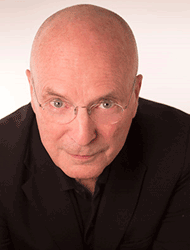
John O'Hern has been a writer for the 5 magazines of International Artist Publishing for nearly 20 years. He retired from a 35-year-long career in museum management and curation which began at the Albright-Knox Art Gallery where he was in charge of publications and public relations and concluded at the Arnot Art Museum where he was executive director and curator. At the Arnot Art Museum he curated the groundbreaking biennial exhibitions Re-presenting Representation. John was chair of the Visual Artists Panel of the New York State Council on the Arts and has written essays for international galleries and museums.
April 6, 2025
contemplations on a theme
Today's theme is the color blue.
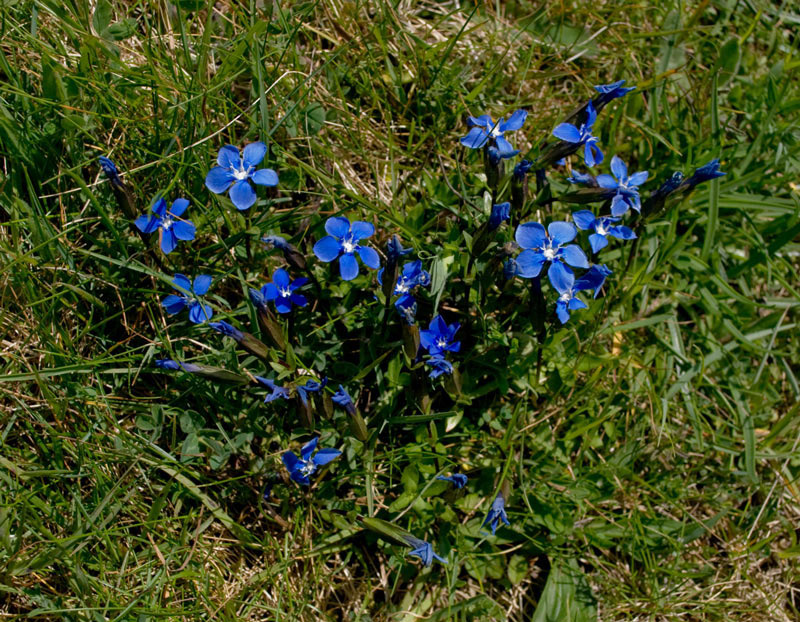
On the first morning of the first day of my first trip to Ireland I went on a wildflower walk in the Burren in County Clare with a group of botanists and nature enthusiasts. One of the botanical curiosities of the Burren is that Mediterranean and Alpine wildflowers bloom together in the rocky terrain. I was looking for spring gentian which I mistakenly thought was the only true blue in nature. It isn’t. We saw one tiny plant on our walk.
The next day as I walked up a road past the grave of John O’Donahue, the poet, author, former priest and philosopher, I saw a group of people gathered at the side of the road. When I reached them, I saw they had found a large patch of spring gentian, one of them in the shape of a heart.
Among the songs that often sail through my head, and sometimes get stuck, is “Am I Blue?” I’m not sure if its Billie Holiday, Ray Charles or me singing, but it’s there. I’m seldom blue in the sense of The Blues, the musical form that came out of the African-American community in the deep south in the 1860s. The Blues is cathartic, though, when I am. B.B. King wrote, “Blues is a tonic for whatever ails you. I could play the blues and then not be blue anymore.”
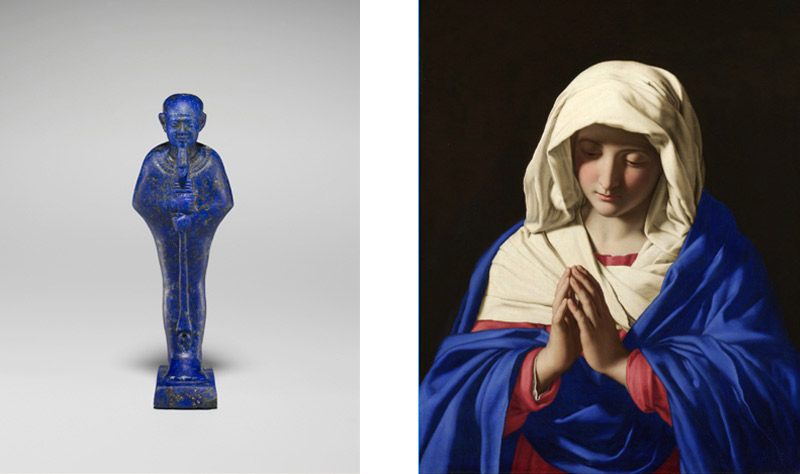 I’ve been thinking about blue in art and the wonderful deep blue of lapis lazuli mined in what is now Afghanistan. The name comes from the Latin words “lapis”(stone) and “lazuli” which is derived from the Persian word for “blue” or “of the heavens--so, “stone of the heavens”.
I’ve been thinking about blue in art and the wonderful deep blue of lapis lazuli mined in what is now Afghanistan. The name comes from the Latin words “lapis”(stone) and “lazuli” which is derived from the Persian word for “blue” or “of the heavens--so, “stone of the heavens”.
The ancient Egyptians used lapis for the eyebrows and eye surrounds on the golden death mask of Tutankhamun. They also carved the stone as in the tiny Cult Image of the God Ptah now at The Met.
Later, lapis lazuli was ground into a powder and mixed with melted wax, oils, and pine resin and rinsed with other materials to create Ultramarine referring to its coming from “beyond the sea”. The material was rare and the process was time consuming and expensive. Michelangelo couldn’t afford it and Vermeer went into debt using it in his paintings.
Ultramarine was usually reserved for paintings of the blue mantle of the Virgin Mary. A spectacular example is The Virgin in Prayer, ca. 1654 by Giovanni Sassoferrato.
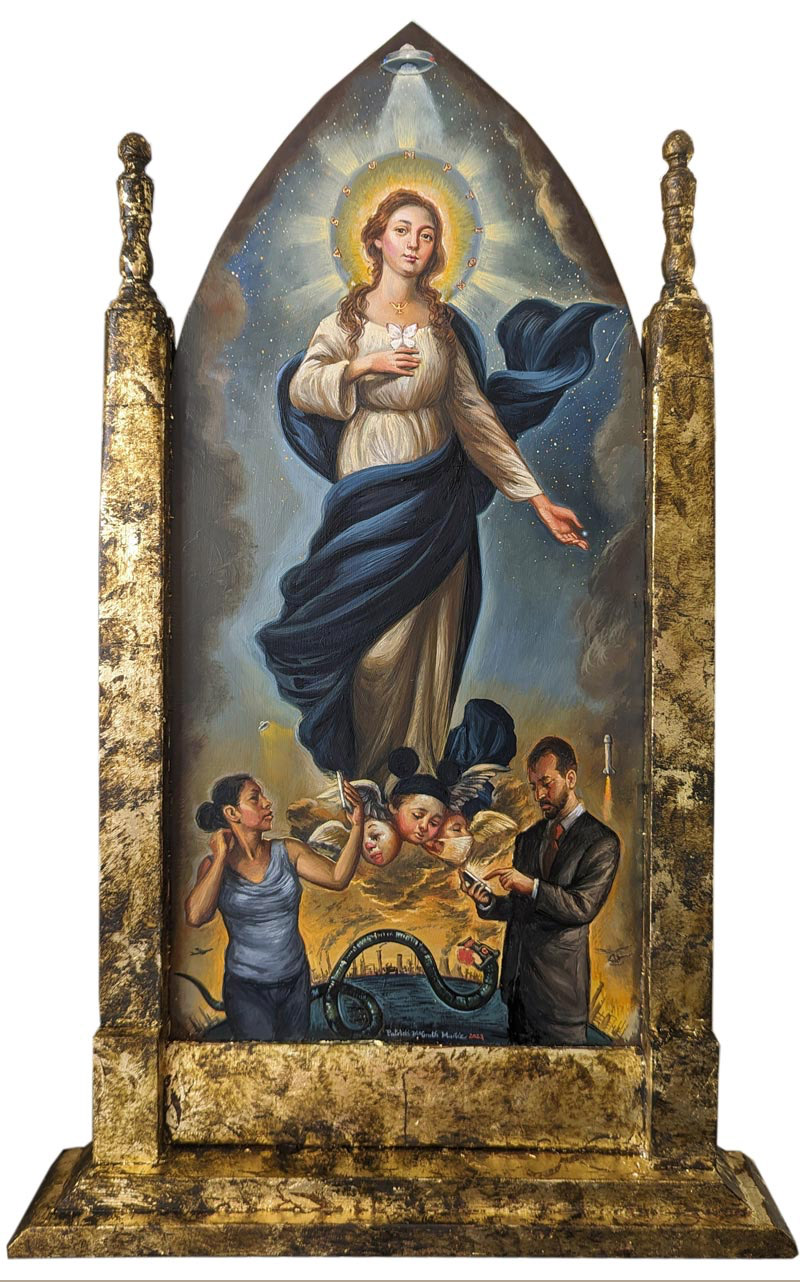 Patrick McGrath Muñíz painted his symbolically rich The Pale Blue Dot with the Virgin Mary draped in a deep blue mantle and about to hold Earth, a “pale blue dot” in her left hand. (For Patrick’s narrative on the painting, visit the Evoke website.)
Patrick McGrath Muñíz painted his symbolically rich The Pale Blue Dot with the Virgin Mary draped in a deep blue mantle and about to hold Earth, a “pale blue dot” in her left hand. (For Patrick’s narrative on the painting, visit the Evoke website.)
The “pale blue dot” appears in a photograph of Earth taken in 1990 by NASA's Voyager 1 spacecraft from a distance of nearly 4 billion miles. The astronomer Carl Sagan wrote, "Look again at that dot. That's here. That's home. That's us.”
The ultramarine of Sassoferrato and the deep blue of Patrick Muñíz are a reminder that blue isn’t just “blue”. We refer to the sea as blue but Homer referred to the “wine-dark sea”. (That’s another story all together and worth a journey down a rabbit hole.)
The poet Sylvia Plath wrote, “The sea was our main entertainment. When company came, we set them before it on rugs, with thermoses and sandwiches and colored umbrellas, as if the water - blue, green, gray, navy or silver as it might be - were enough to watch.”
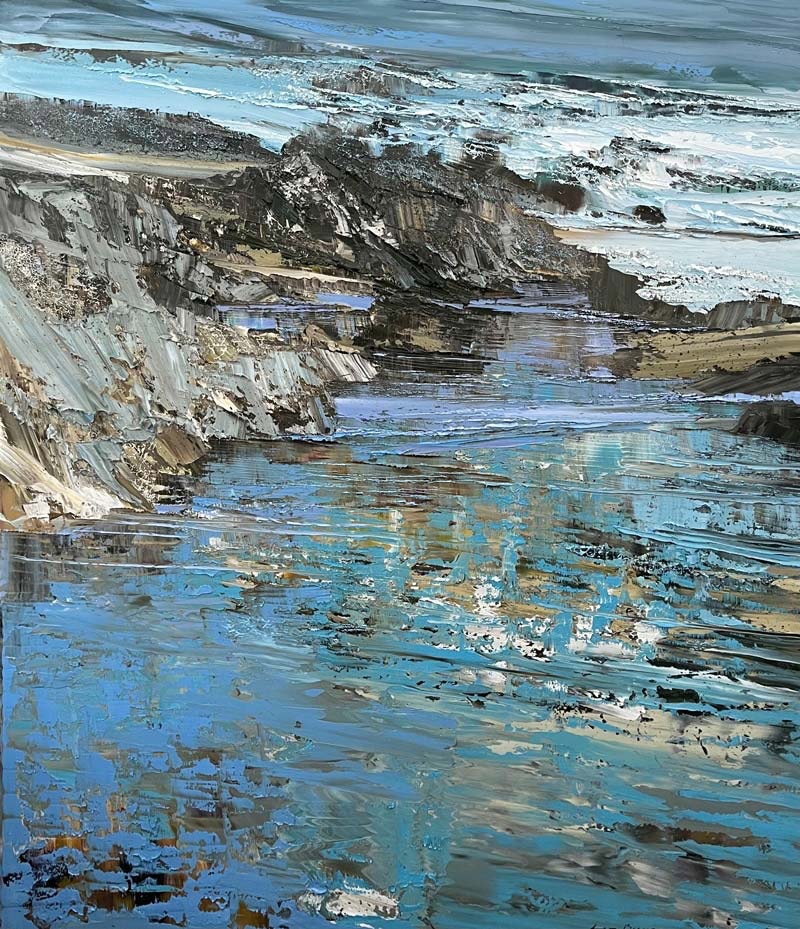 Lynn Boggess painted the sea and its myriad colors on 20 July 2023. He says, “I want everything in a painting–full color, full texture, depth and space. It’s too darn easy to make paintings that are one thing.” In this painting there is not only the texture of the rocks but also the texture of the surface of the water as it flows and folds on itself, reflecting the stones and the sky. As light reflects off it and through it, the blue sea reveals itself to be more than that.
Lynn Boggess painted the sea and its myriad colors on 20 July 2023. He says, “I want everything in a painting–full color, full texture, depth and space. It’s too darn easy to make paintings that are one thing.” In this painting there is not only the texture of the rocks but also the texture of the surface of the water as it flows and folds on itself, reflecting the stones and the sky. As light reflects off it and through it, the blue sea reveals itself to be more than that.
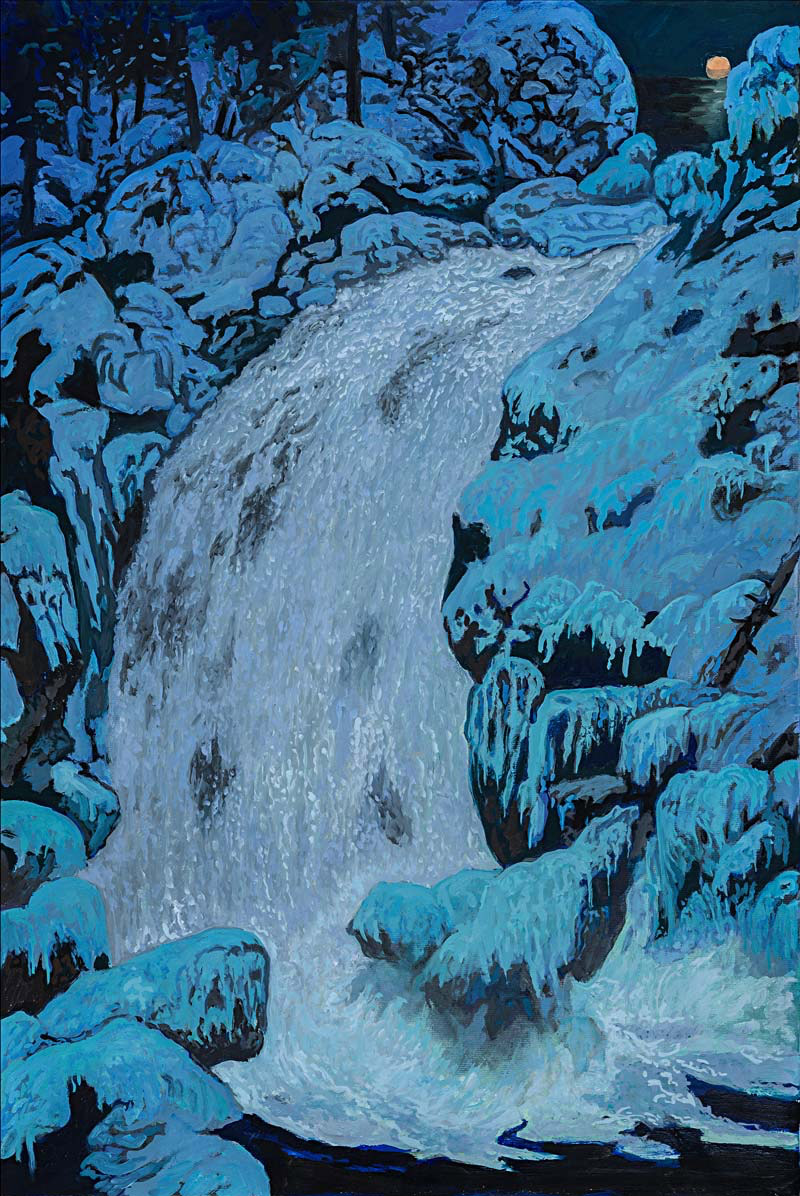 Michael Scott lives in an area south of Santa Fe free of light pollution, where he can step out of his home or his studio and see the expanse of the Milky Way spread across the sky. One of his painter heroes is the 19th century German romantic painter Caspar David Friedrich, who wrote,
“The artist should not only paint what he sees before him, but also what he sees within him.”
Michael Scott lives in an area south of Santa Fe free of light pollution, where he can step out of his home or his studio and see the expanse of the Milky Way spread across the sky. One of his painter heroes is the 19th century German romantic painter Caspar David Friedrich, who wrote,
“The artist should not only paint what he sees before him, but also what he sees within him.”
Michael’s next exhibition at Evoke is titled Habitat and the Preternatural, that miraculous state that is inexplicable by ordinary means. In his painting Moon Over Fire Hole, the fluid river falls over the solid rock of Yellowstone, but the two become one in the blue light. The moon appears almost incidentally with its reflected warm light.
I first experienced the phenomenon of blue “moonlight” at Prajna Mountain Forest Refuge north of Santa Fe on a Zen retreat with Roshi Joan Halifax. In the middle of the night I heard a noise and unzipped the flap of my tent to be greeted not by a hungry bear but by a world of luminous blue. Even when confronted with the miraculous, I am cursed to discover “Why?”.
The rods and cones in the eye turn light into electrical signals that the brain interprets as sight. The 19th century Bohemian physiologist Jan Evangelista Purkyně discovered that the light sensitivity of the eyes shifts to the blue end of the spectrum in low light conditions. My brain interpreted the message being sent to it as “blue light”.
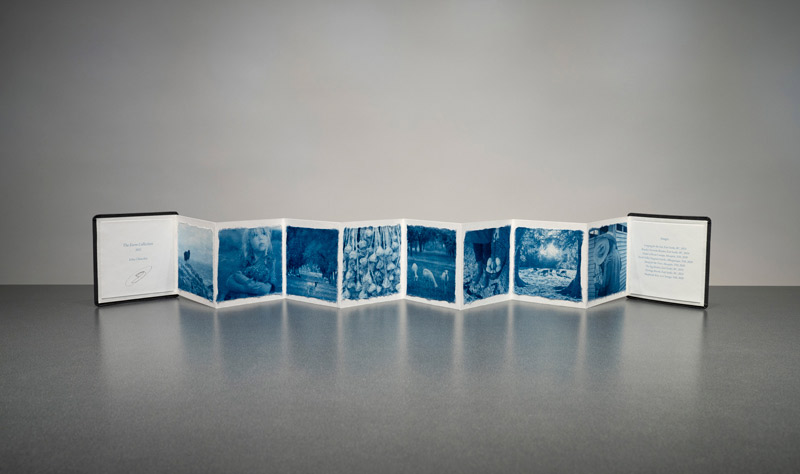 In the gallery’s current exhibition, Lettera Amorosa, Esha Chiocchio has created a fan fold book of cyanotypes, a camera-less process of exposing light-sensitive paper to UV light and washing with water. The result is Prussian Blue images. There is a “why” or “how”. Paper or fabric is coated with a mixture of ferric ammonium citrate and potassium ferricyanide. The oxidation of potassium ferricyanide produces Prussian Blue.
In the gallery’s current exhibition, Lettera Amorosa, Esha Chiocchio has created a fan fold book of cyanotypes, a camera-less process of exposing light-sensitive paper to UV light and washing with water. The result is Prussian Blue images. There is a “why” or “how”. Paper or fabric is coated with a mixture of ferric ammonium citrate and potassium ferricyanide. The oxidation of potassium ferricyanide produces Prussian Blue.
The images in each of her two books are The Nature Collection and The Farm Collection reflecting her “deep love for the natural world and for the pastoral life most humans experienced before industrialization.” She has been photographing farms and regenerative architecture and enlarged the negatives to make her contact-printed cyanotypes.
On a recent artist residency in Chile, Esha did a lot of night photography and pondered how she could print cyanotypes on thin enough paper to be backed with silver, so the stars would be luminous. She is continuing to explore the possibilities and, meanwhile, printed these images on earthy, rough-edged Kozo mulberry paper from Japan.
When “Looking and Seeing”, there are many “aha” moments. Looking at Esha’s cyanotype Longing for the Sea, East Sooke, BC, Canada, I thought immediately of Caspar David Friedrich’s painting Wanderer above the sea of fog, ca. 1817.
I’ll just leave that moment here.
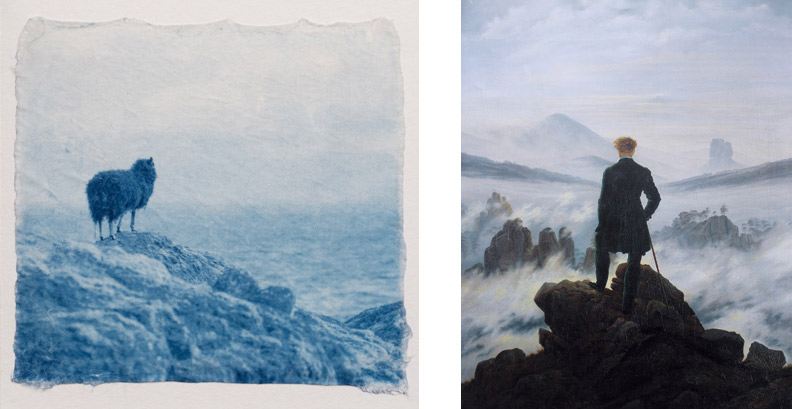 Esha Chiocchio, Longing for the Sea, East Sooke, BC, Canada, cyanotype, 6" x 6".
Above right: Caspar David Friedrich, Wanderer above the sea of fog, c.1817, Hamburger Kunsthalle, Hamburg, Germany.
Esha Chiocchio, Longing for the Sea, East Sooke, BC, Canada, cyanotype, 6" x 6".
Above right: Caspar David Friedrich, Wanderer above the sea of fog, c.1817, Hamburger Kunsthalle, Hamburg, Germany.
March 23, 2025
Soey Milk | Moon Baby Blue, Remember When You Fall Asleep, and White in Shade
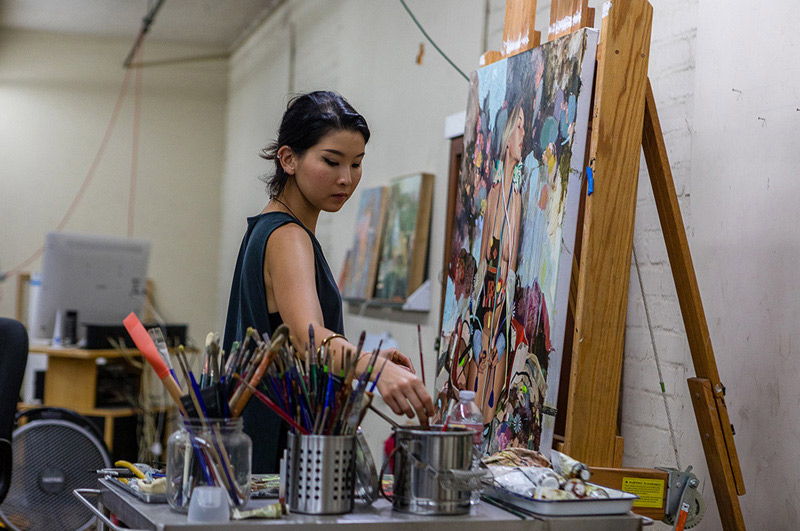
When we began this series, we tried to have “one long look at one work of art.” I’ve veered off the path fairly often, taking the path less traveled by. I used to think an artist’s portfolio should be consistent. Perhaps it was Emerson who broke me of that. In his essay “Self-Reliance” he wrote, “A foolish consistency is the hobgoblin of little minds, adored by little statesmen and philosophers and divines. With consistency, a great soul has simply nothing to do.”
Today, I’m looking at three works by Soey Milk –two oil paintings and a graphite drawing. At first glance they appear to be by different artists, but they have a subtle, grounded consistency that embodies her connection to the world around her, her exploration of the media she uses and her relationship to the people in her life—the activities of a great soul. About her drawings, she writes, “I strive to capture the essence of the subject in front of me, translating its flesh and energy onto paper.”
 At first glance, Moon Baby Blue, has to be by another artist than the one known for her sensuous figures in complex, painterly settings. Her meticulously-rendered cat with its luminous blue bow gazes out from a star-filled sky that seems, at first, to be a solid color but reveals many colors and texture on closer examination and begins to suggest that the artist is the same.
At first glance, Moon Baby Blue, has to be by another artist than the one known for her sensuous figures in complex, painterly settings. Her meticulously-rendered cat with its luminous blue bow gazes out from a star-filled sky that seems, at first, to be a solid color but reveals many colors and texture on closer examination and begins to suggest that the artist is the same.
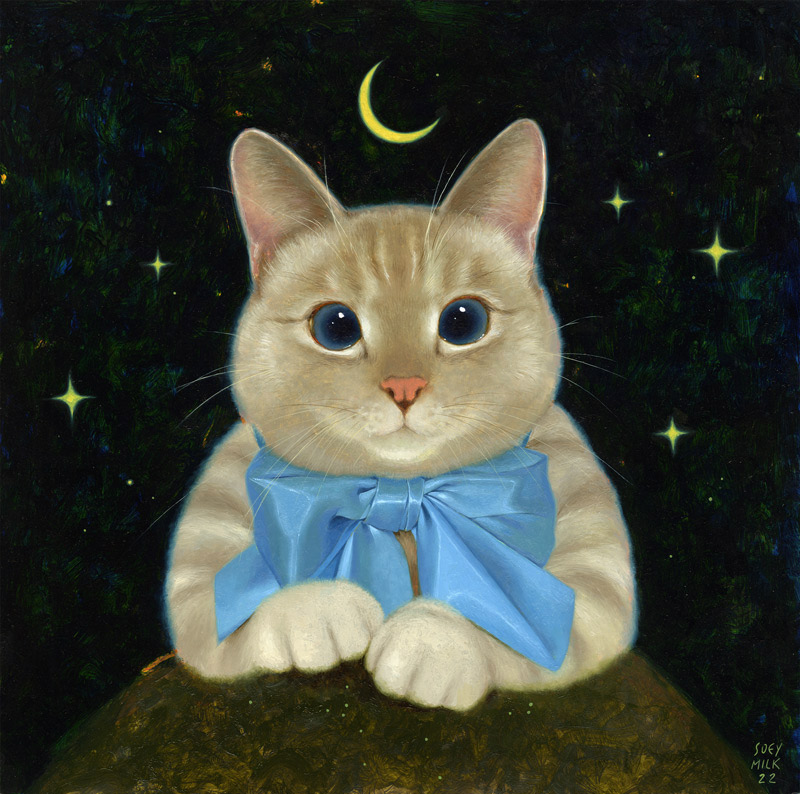 Soey comments, “The Moon Baby Blue (and Moon Baby Pink) indeed marks a departure from my usual figurative work. This piece combines intricate realism with a lighter, more whimsical touch. Each strand and fuzz of the cat’s fur is carefully rendered to create a lifelike texture, while its glowing eyes add a captivating element. The backdrop, a serene yet playful night sky, gives the piece a soft charm. The balance between the highly detailed subject and the more stylized atmosphere brings a unique harmony that feels both engaging and soothing. It offers a fresh perspective, blending technical precision with an unexpected sense of warmth and wonder.”
Soey comments, “The Moon Baby Blue (and Moon Baby Pink) indeed marks a departure from my usual figurative work. This piece combines intricate realism with a lighter, more whimsical touch. Each strand and fuzz of the cat’s fur is carefully rendered to create a lifelike texture, while its glowing eyes add a captivating element. The backdrop, a serene yet playful night sky, gives the piece a soft charm. The balance between the highly detailed subject and the more stylized atmosphere brings a unique harmony that feels both engaging and soothing. It offers a fresh perspective, blending technical precision with an unexpected sense of warmth and wonder.”
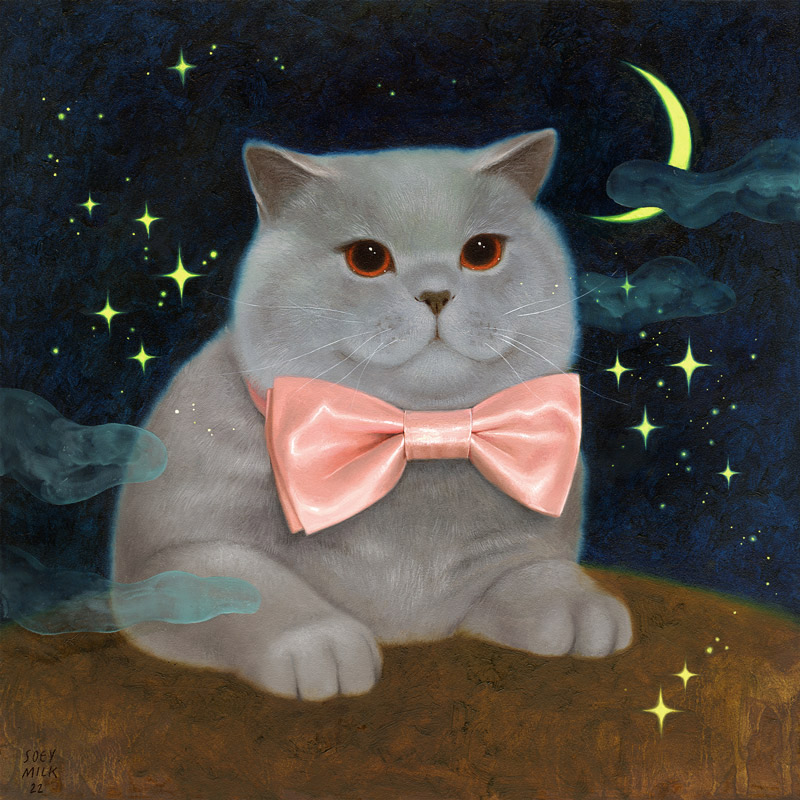 Remember When You Fall Asleep No. 3 is immediately recognizable as a Soey Milk painting with the lips resembling the glaze on a fruit tart and the surrounding, flatly-painted, simplified flower blossoms.
Remember When You Fall Asleep No. 3 is immediately recognizable as a Soey Milk painting with the lips resembling the glaze on a fruit tart and the surrounding, flatly-painted, simplified flower blossoms.
She explains, “As for the 6" x 6" piece of ruby-red lips, it’s a study in both precision and symbolism. The lips are rendered in much detail, capturing the glossy, wet texture with subtle pink, red, and petal tones that give it a sensual depth. Surrounding the lips is a mandala-like pattern of flower petals, a recurring motif in my work. These petals aren’t simply decorative; they represent a deeper meaning. The center signifies the self, while the petals extending outward symbolize energy and connection.”
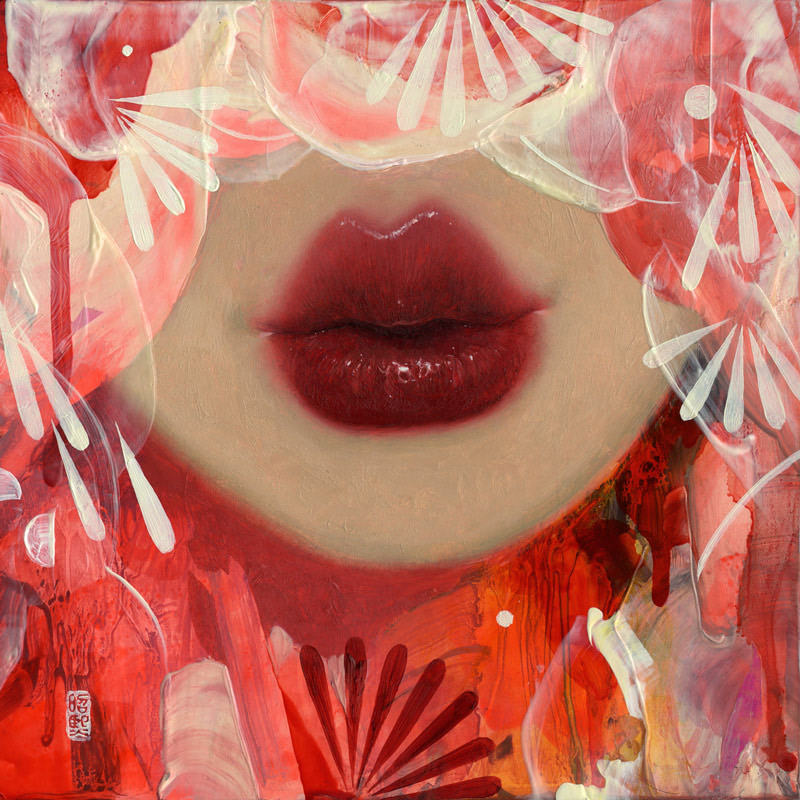 Soey’s drawings are “at the heart of my artistic practice,” she says, “acting as both a blueprint and an emotional exploration of the human experience. I strive to capture the essence of the subject in front of me, translating its flesh and energy onto paper. The act of drawing is deeply personal—each line is not just about precision, but about a connection that evolves through my own human lens. It’s a process that often involves steps back, but always moves forward, steadily refining the work to reveal the soul of the image.”
Soey’s drawings are “at the heart of my artistic practice,” she says, “acting as both a blueprint and an emotional exploration of the human experience. I strive to capture the essence of the subject in front of me, translating its flesh and energy onto paper. The act of drawing is deeply personal—each line is not just about precision, but about a connection that evolves through my own human lens. It’s a process that often involves steps back, but always moves forward, steadily refining the work to reveal the soul of the image.”
Her drawings recall the drawings of Ingres—wonderfully controlled mark making and areas that appear to have appeared by magic.
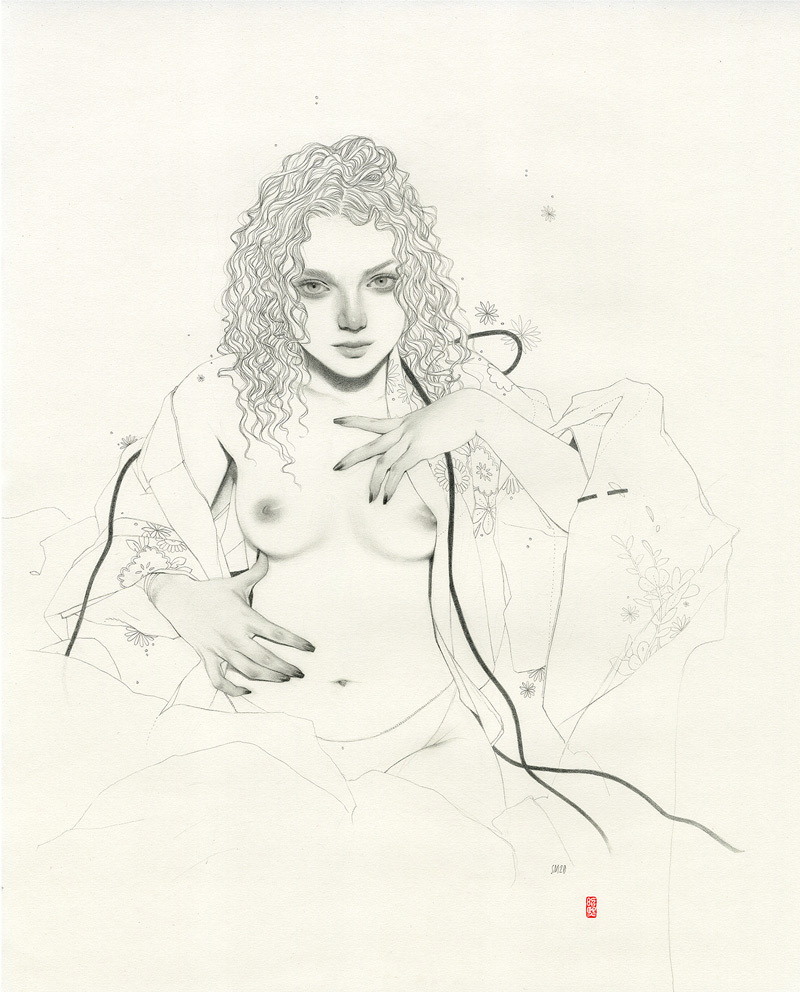 In White in Shade, a black cord is draped across the figure, a motif that often appears in her paintings. She explains, “The props I incorporate, particularly the silk ropes and cords, go beyond simple compositional tools. They carry a deeper meaning, symbolizing life and relationships. Just as ropes intertwine, stretch, or knot, so do the connections between people. They fuse, unravel, or shift, but always leave their mark. These ropes reflect the strands of life and the ways in which we come together, change, or evolve. As I navigate my own journey, my work becomes a visual timeline—a way to reflect on the relationships and experiences that shape me.
In White in Shade, a black cord is draped across the figure, a motif that often appears in her paintings. She explains, “The props I incorporate, particularly the silk ropes and cords, go beyond simple compositional tools. They carry a deeper meaning, symbolizing life and relationships. Just as ropes intertwine, stretch, or knot, so do the connections between people. They fuse, unravel, or shift, but always leave their mark. These ropes reflect the strands of life and the ways in which we come together, change, or evolve. As I navigate my own journey, my work becomes a visual timeline—a way to reflect on the relationships and experiences that shape me.
“For those who engage with my art, these recurring motifs—ropes and connections—offer a window into a deeper narrative. Each piece not only represents the figure before me, but also tells a story of relationships, growth, and the marks we leave on one another" . . .
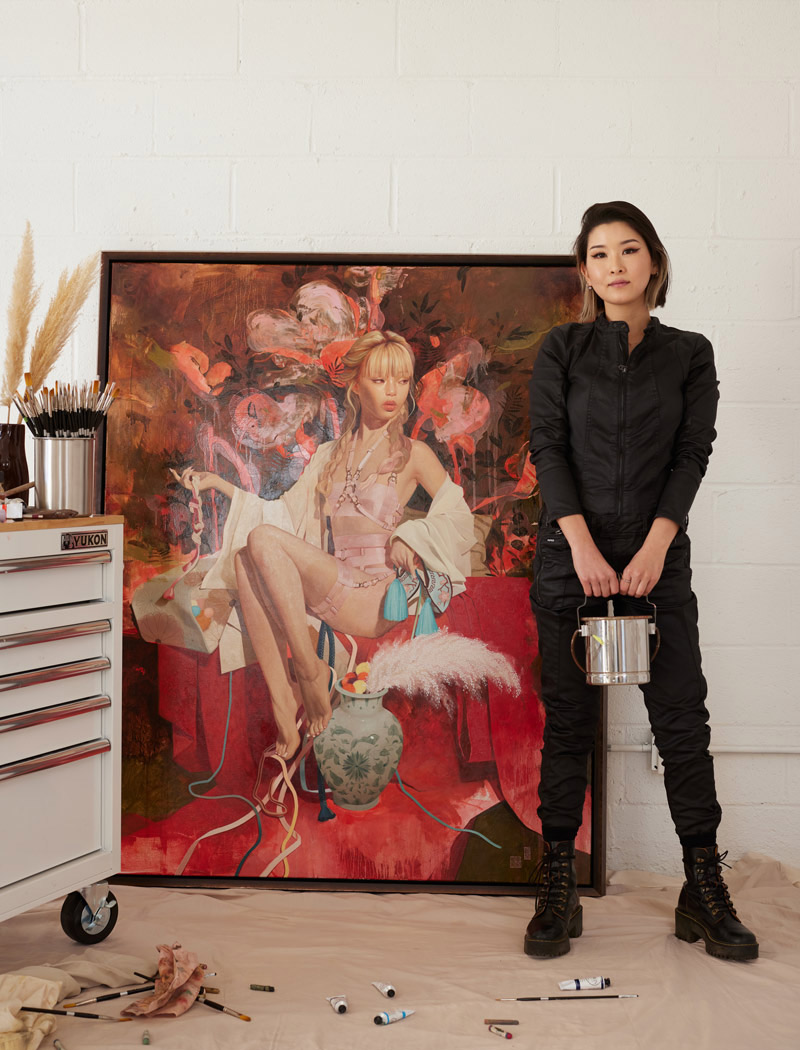
March 9, 2025
Kent Williams | Self-Portrait as Rodin's Striding Man, with Appendages
A contemporary artist, Kent Williams reveres art and artists of the past and sometimes incorporates their work into his paintings. In his 84 by 144-inch diptych, Self-Portrait as Rodin's Striding Man, with Appendages (Redux) 2000, 2018, he becomes a sculpture of Auguste Rodin (1840-1917).
“I’m a huge fan of Rodin,” he says. “He’s in my top 5. I can’t imagine anyone having more love and respect for his work than I have. I understand it so completely, I feel I could be a sculptor. I never pursued it, however, because of time and being committed to the next show or whatever. I’m the person who wants to do it full on, not just pick at it. I want to see what I can do, fully.”
He relates that when Rodin exhibited his plaster model of “The Age of Bronze” at the 1877 Paris Salon, he was accused of casting the figure from a “commonplace” live model. The naturalistic pose and modeling went against the grain of those preferring the idealistic poses and musculature of classical sculpture.
The following year, Rodin began modeling “Saint John the Baptist Preaching”, larger than life-size to prove his ability.
Rodin was inspired by and collected fragments of classical sculpture and said, “these divine fragments . . . move me more profoundly than living persons.”
Rodin used fragments of his own sculpture to create “L’Homme qui marche”, the sculpture Kent used in his “Self-Portrait . . .” The Musée Rodin in Paris relates, “This work with a complex genesis illustrates how receptive Rodin was to the English sculptor Henry Moore’s belief that an artist should ‘reconsider and rethink’ an idea…. [T]he sculpture was conceived in 1899-1900, using studies for the torso and legs of Saint John the Baptist, dating from 1878 . . . The resultant figure is marginally out of true; the torso leans forward and swivels slightly to the left. The impression of movement is heightened by the barely perceptible inaccuracy of the adjustments.”
Kent remarks, “Life is fragmented. It’s not as simple as I first imagined. It’s a battle to stay organized. When I was finished with a show, I used to clean up my studio and start fresh. I used to have the time. Maybe as you get older, time does go faster.
“Most of my art deals with the human condition and is sometimes wrapped around myself and where I am. That touches on things a lot of people experience and feel. Being able to relate to someone else going through similar things can bring comfort to people –knowing you’re not alone.
“In 1999, I chose Rodin’s sculpture “L’Homme qui marche” (The Striding Man), to use as a vehicle for what I was going through—a deep dark place.” He made several paintings on the theme, with himself as a striding man. “The sculpture is fragments, and I had to represent my own fragmentation at the time.”
“I was going through that dark period from a variety of things. My biological son and my adopted son were young and about the same age and, in my dark place, it was hard to deal with their being cholicy, crying, teething. But I discovered how that stage leaves fast, and another stage arrives and passes. When you realize they pass, they’re easier to deal with.”
The painting depicts him striding forward (“I’m going to walk out of this dark period.”). In a disjointed way, he holds the hands of his sons. “My boys are important to me,” he says. “It was my burden, not theirs. I never wanted them to feel unsafe. They didn’t know what I was going through or what I was showing in the painting. When they came into the studio to model, I gave them brushes to paint a little along the bottom of the painting.”
When he turned to the painting years later, he felt it was unfinished. “My ideas had developed without losing the thrust of the piece,” he says. “I thought that I would take away and obscure things. The big white shapes were a new abstract element, my first pass at obscuring. I would take it farther as time passed.”
Today, drawing is an important part of his process. “I’ll start painting,” he says, “and, if I’m successful, I’ll maintain the drawing aspect while allowing myself to be bold with the brushwork. I want to maintain some of that linear suggestion and straightforwardness. The act of painting, though, wants to push away from the simple line drawing. I work in many layers. Each pass is very broad, and the painting starts to refine itself in certain areas. If I begin to lose what I like, I sand it back down to a certain degree and knock enough paint off to allow the line to show through.”
The poet and writer of fiction, Dorothy Parker (1893-1967), known for the best acerbic wisecracks, was also observant and had more profound insights, writing, “Art is a form of catharsis, emotional release, purging, cleansing, purifying.”
February 23, 2025
Jeremy Mann | A Place I Stopped on the Way to Town #1
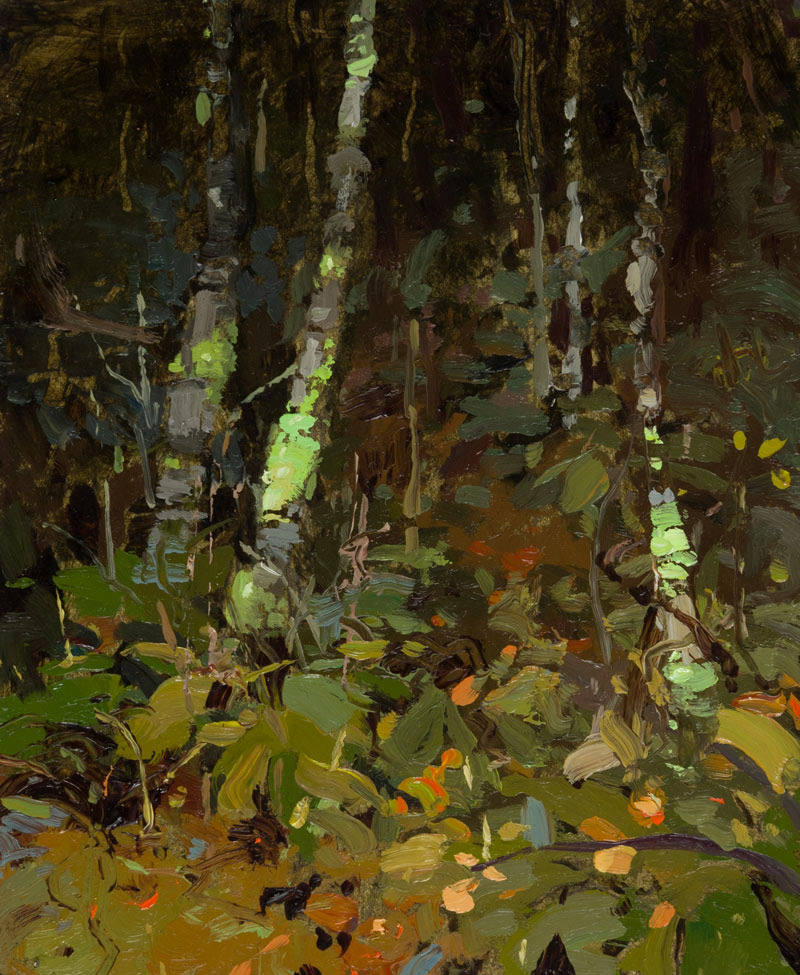
New among the works of Jeremy Mann are small 5" x 4” oil on papered panel paintings of a forest. They are a striking departure from the brooding San Francisco cityscapes I had first seen over 20 years ago. Both of our lives have changed since then. I now live in a converted adobe goat shed in the high desert of New Mexico and Jeremy now lives with his wife, the artist Nadezda, in an 18th century farmhouse “in the middle of a national park of forested mountains” in Spain.
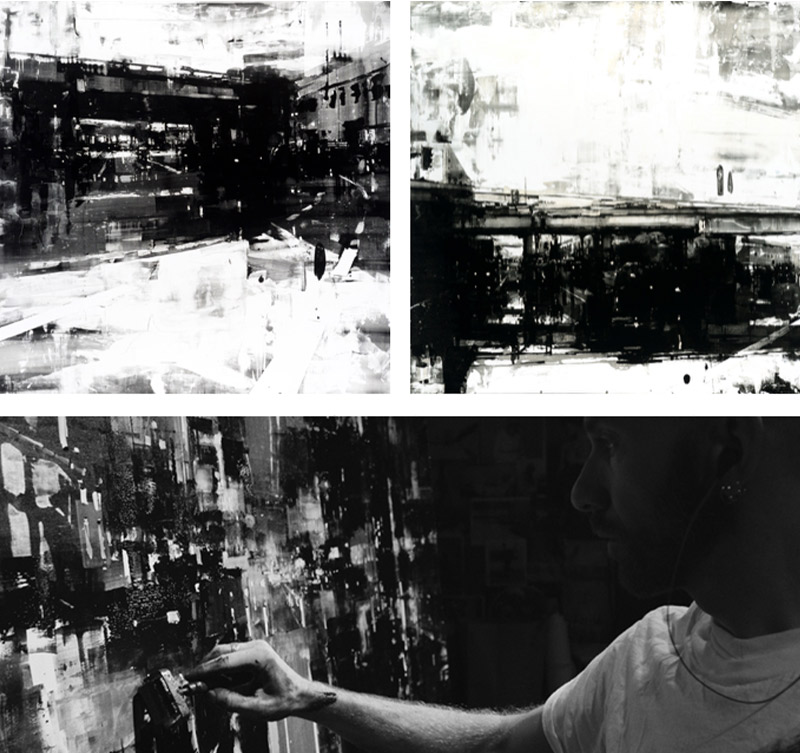 I had admired his dark, brooding, paintings of the city about which he told me, “I think the grey and the sad is beautiful, and nothing moves my heart more than to be able to paint it.” I wasn’t prepared for his forest paintings, especially A Place I Stopped on the Way to Town #1 with its dark depths, glowing green lichen and the color he found in everything.
I had admired his dark, brooding, paintings of the city about which he told me, “I think the grey and the sad is beautiful, and nothing moves my heart more than to be able to paint it.” I wasn’t prepared for his forest paintings, especially A Place I Stopped on the Way to Town #1 with its dark depths, glowing green lichen and the color he found in everything.
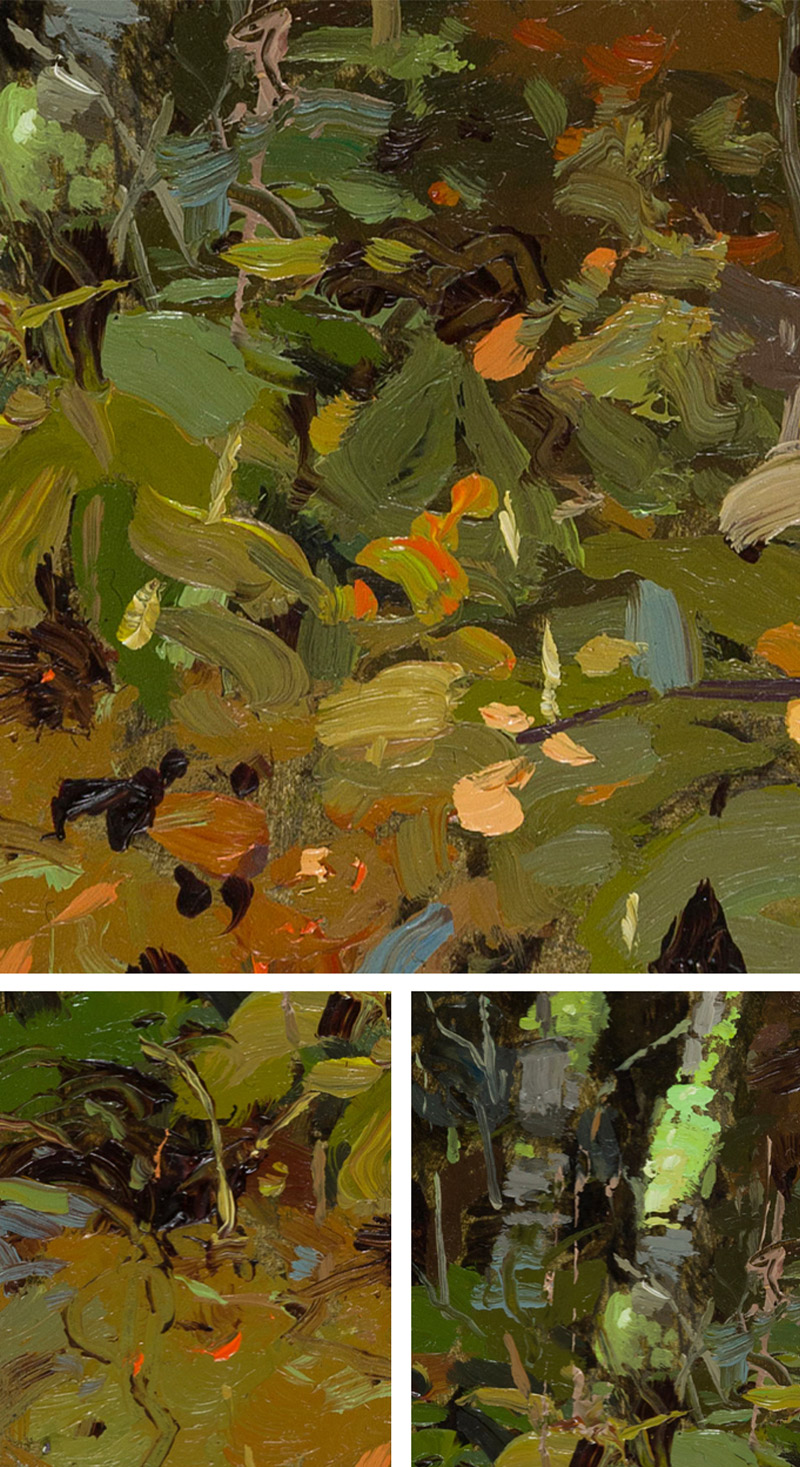 On his Instagram page, he wrote, “I always wanted to paint the inside of a forest, and I thought it was going to be difficult, so I didn’t. Now, living in a forest, I’m addicted. And I was right.”
On his Instagram page, he wrote, “I always wanted to paint the inside of a forest, and I thought it was going to be difficult, so I didn’t. Now, living in a forest, I’m addicted. And I was right.”
As a lover of trees and forests, sitting or walking quietly and absorbing the richness of color and texture above ground and contemplating the unfathomable complexity of the flora communicating below its surface, I wanted to know how, after the chaos of the city, Jeremy was responding to his new environment. As expected, he didn’t let me down.
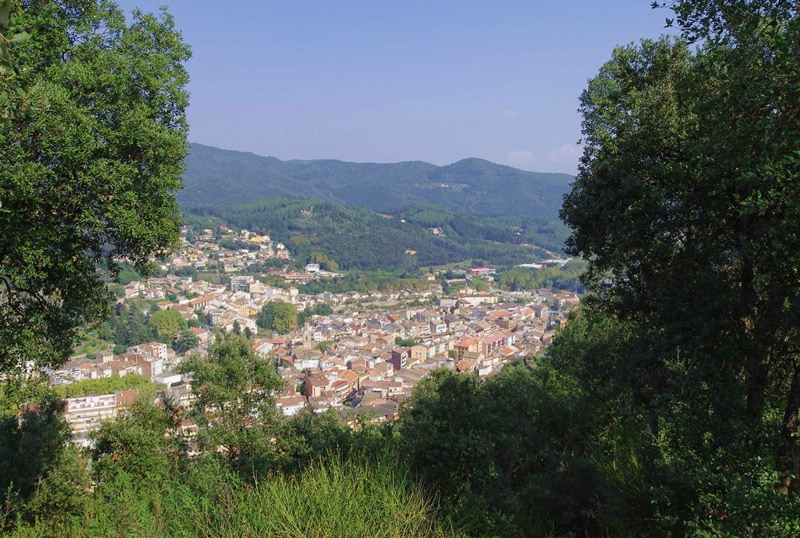 Today he walks through the forest on the way to the bakery in town 4 km away. This little painting is one of a series he is working on. “I was always looking at the world as things I would have to render,” he says, “and that would make any dense forest daunting to anyone. To progress myself, I learned long ago to do more than one of the same thing, and often the second one is more free, more inventive, more me.
Today he walks through the forest on the way to the bakery in town 4 km away. This little painting is one of a series he is working on. “I was always looking at the world as things I would have to render,” he says, “and that would make any dense forest daunting to anyone. To progress myself, I learned long ago to do more than one of the same thing, and often the second one is more free, more inventive, more me.
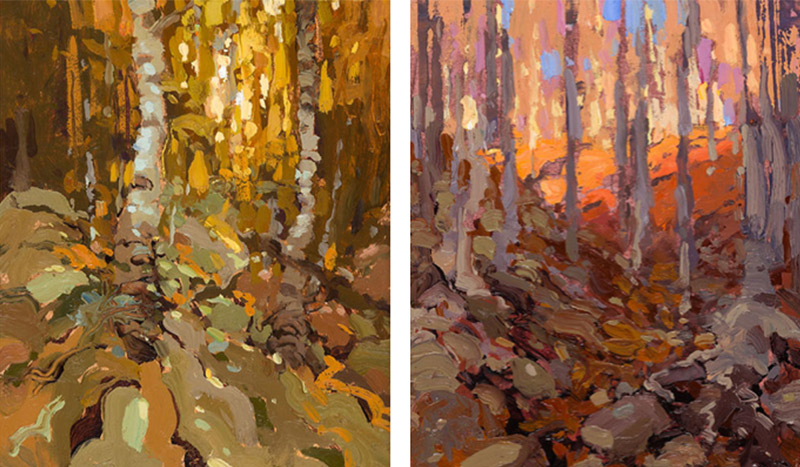 Financial problems precluded his finishing his studio, “pleasantly forcing me to indulge in my dream of painting plein air as often as possible, my little paint box and the endless natural beauty around me became my new studio where this practice of multiple paintings in one sitting grew to show me what I knew, but didn’t understand; the natural world is just a reference to guide us, not to be duplicated. To be inspired by, not to try and replicate, a reference. A thing to ‘refer’ to, not to mimic. Forcing me to decide what I want to do on the panel in front of me out there in the still and beautiful forest, forcing me to focus on the language of brushwork and color. Forcing me, to accept and see change as new challenges to garner experience from. I changed my palette completely to only the simple but saturated tertiaries because I wanted to understand color and light at a different level, knowing this can only be gleaned from life and making those two elements the most important thing for me to stay focused on while sitting there in the forest or at the edge of the moving Mediterranean seaside.”
Financial problems precluded his finishing his studio, “pleasantly forcing me to indulge in my dream of painting plein air as often as possible, my little paint box and the endless natural beauty around me became my new studio where this practice of multiple paintings in one sitting grew to show me what I knew, but didn’t understand; the natural world is just a reference to guide us, not to be duplicated. To be inspired by, not to try and replicate, a reference. A thing to ‘refer’ to, not to mimic. Forcing me to decide what I want to do on the panel in front of me out there in the still and beautiful forest, forcing me to focus on the language of brushwork and color. Forcing me, to accept and see change as new challenges to garner experience from. I changed my palette completely to only the simple but saturated tertiaries because I wanted to understand color and light at a different level, knowing this can only be gleaned from life and making those two elements the most important thing for me to stay focused on while sitting there in the forest or at the edge of the moving Mediterranean seaside.”
He recalls an incident in California where he learned to be still. “When I was painting in the west with many artists, we all set up our easels and dove into chasing that final product, the finished painting. It wasn’t but almost 30 minutes into my endeavor that I turned and saw an older, wiser man still staring out across the seemingly still landscape with not a single mark upon his canvas. Absorb, lest we simply wring a dry rag hoping for a sale. Much of the art life I began my career in was based upon that daily wringing. There is much, so so much more to creating than knowing your brushes, surfaces, mediums, forms, color harmonies and compositions, all the foundations we are taught and seek throughout our careers are missing some very important tools to master, so seemingly useless to the artist seeking a profit from a product, but indispensable when seeking a life of happiness creating unbounded and in peace. Knowing what to choose to paint, why we choose it, what we truly wish to say and how to say it, and how to put things in our hands to bring that vision to life has nothing much to do with material matters.
“This is where I began to see the richness of life, when I learned to sit still, in body and mind, that it was OK to sit still, that thinking and seeing are just as important tools as brush and surface, and come to know the nature I was roaming. That appreciation gave me some deeper knowledge which was missing in my practice. Sit, and look. Look long enough, sit still long enough, clear the mind of the rabble which has nothing to do with the moment of painting, and life provides us with a fantasy of forms, colors, harmonies, compositions, creatures, sounds and feelings we don’t get to experience running through the rat race of modernity’s distracting traps.”
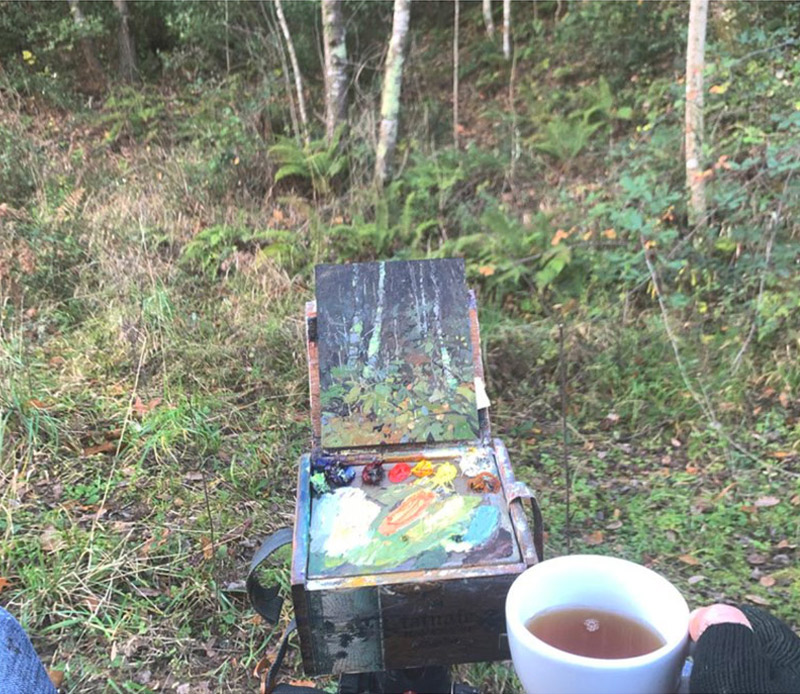 Escaping the vagaries of the art world and life in the city has been difficult but, he is beginning to enjoy the freedom of sitting in the forest with his thermos of tea, looking and seeing. “Letting color and composition find a balance based on my desire to emote the feeling of being with me in that shady spot, and not worrying about having to make anything at all, to just be, to be in a state of creativity, spending time aware, absorbing and playing with colors and marks like any good forest child would do without responsibilities. I was beginning to truly see the reality of painting, that it’s about making an image in whatever way we like and not duplicating a rendering of an already existing reference. All of this is making great headway in the concurrent studio pieces in the works.”
Escaping the vagaries of the art world and life in the city has been difficult but, he is beginning to enjoy the freedom of sitting in the forest with his thermos of tea, looking and seeing. “Letting color and composition find a balance based on my desire to emote the feeling of being with me in that shady spot, and not worrying about having to make anything at all, to just be, to be in a state of creativity, spending time aware, absorbing and playing with colors and marks like any good forest child would do without responsibilities. I was beginning to truly see the reality of painting, that it’s about making an image in whatever way we like and not duplicating a rendering of an already existing reference. All of this is making great headway in the concurrent studio pieces in the works.”
Recently, Jeremy posted one of his forest paintings with a cryptic description of his day. “Took a hike up in the mountain, painted some trees, chased some sheep.”
February 8, 2025
Lynn Boggess | 16 June 2023
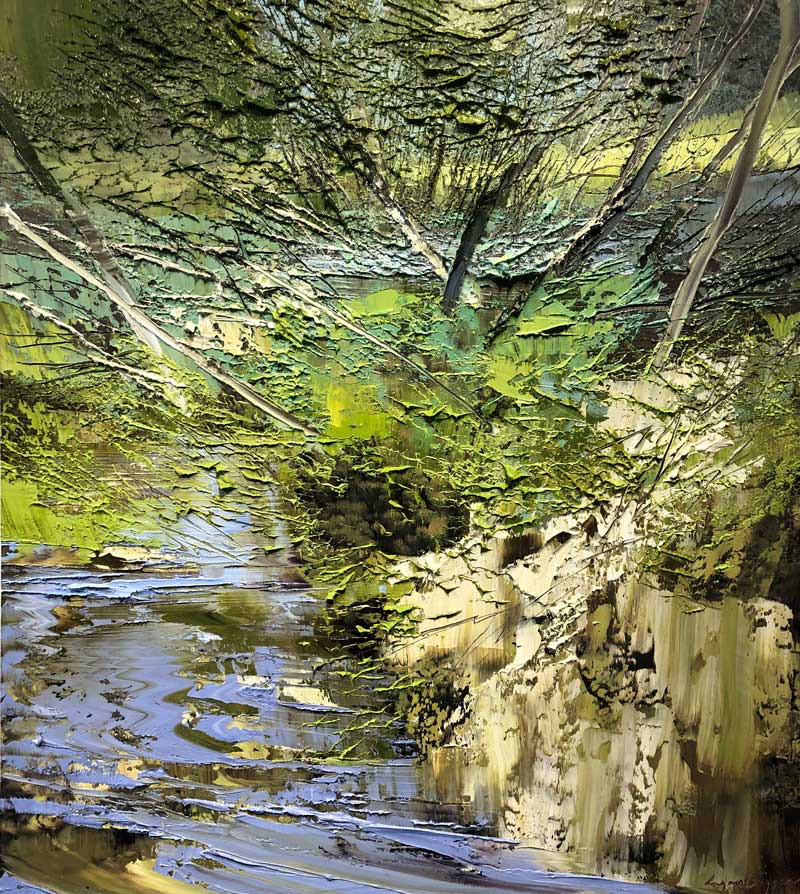
Lynn Boggess and Andrew Wyeth grew up in East Coast farmland, Lynn in West Virginia and Wyeth in Pennsylvania and Maine. “When I saw his work,” Lynn says, “I related to it directly.”
He was introduced to Wyeth’s watercolors by an enthusiastic junior high school art teacher. “His quick study watercolors were a huge influence,” Lynn explains.
“I like abstract expressionism,” he continues, “which is why I related to his watercolors. His egg tempera paintings show masterful control but I find them way too tight.”
Only a few of Wyeth’s abstract watercolors were available to the public during his lifetime, but in 20023/24, the Brandywine Museum of Art showed over 70 works from Andrew and Betsy Wyeth’s private collection in the exhibition Abstract Flash: Unseen Andrew Wyeth.
Wyeth had written, “My struggle is to preserve that abstract flash – like something you caught out of the corner of your eye, but in the picture you can look at it directly.”
Elsewhere he wrote, “With watercolor, you can pick up the atmosphere, the temperature, the sound of snow shifting through the trees or over the ice of a small pond or against a windowpane. Watercolor perfectly expresses the free side of my nature . . . The brain must not interfere. You’re painting so constantly that your brain disappears, and your subconscious goes into your fingers and it just flows.”
His comments might have been made by Lynn who, although he paints with oil, has a keen sense of composition and often enters a meditative state as he gazes at the landscape and creates his paintings.
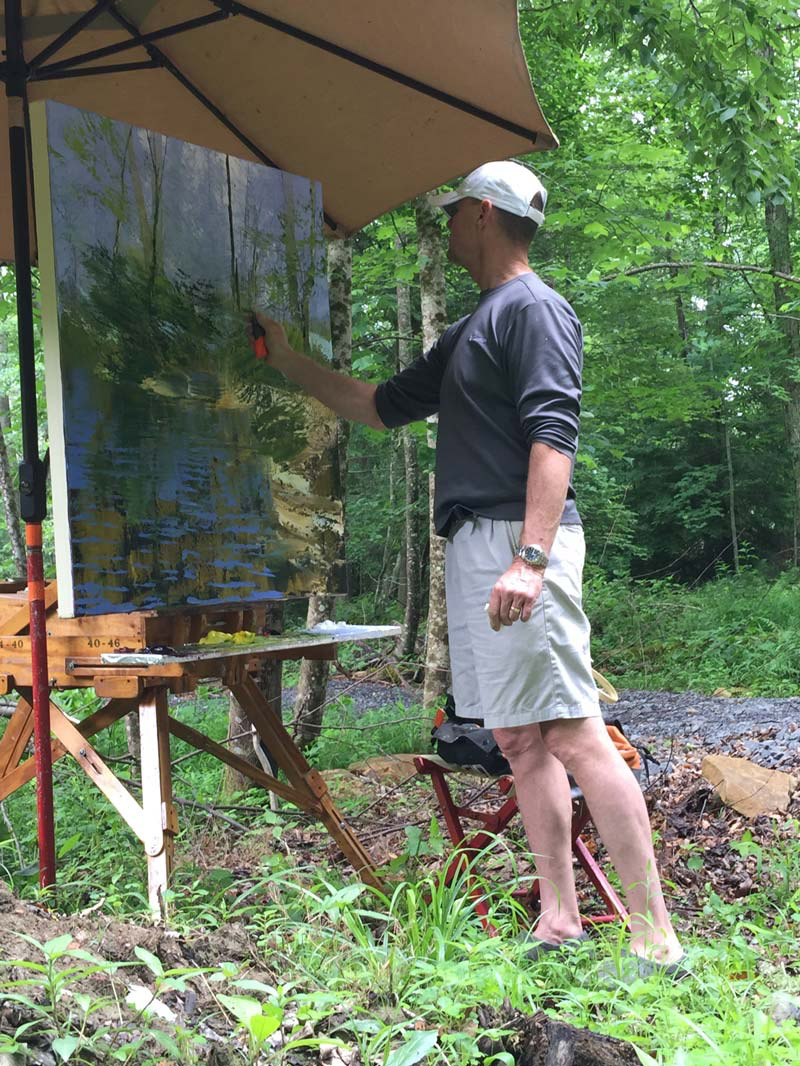 He has said, “Landscape paintings are philosophies encased in compositions. This really is a very complex, critical question. I avoid using the Golden Section and prefer focal points either in the middle or on the edges because they allow the space to be read simultaneously as a flat abstraction and as a recessional depth–something that helps me understand the paradoxes of life in general. That paradoxical experience is also emphasized in the illusion of space and the thick texture of the paint.”
He has said, “Landscape paintings are philosophies encased in compositions. This really is a very complex, critical question. I avoid using the Golden Section and prefer focal points either in the middle or on the edges because they allow the space to be read simultaneously as a flat abstraction and as a recessional depth–something that helps me understand the paradoxes of life in general. That paradoxical experience is also emphasized in the illusion of space and the thick texture of the paint.”
If the unlikely passerby could see Lynn painting at his unlikely sites, they would see him paint with a trowel on large canvases mounted on a portable studio he has carted into the wild, standing on its wood floor under its canopy. His wife, Jennifer, has written about his choice of sites. “Being on site gave him a certain empathy with the land. Subjects that he found most fascinating were those in which there was evidence of a struggle. He was drawn to broken trees, wind-swept rubble, great boulders, and flood water. That connection remains in his mature work, which is heroic in its subject and process. As the paintings have become larger, the discipline of being present continues. An assembly of easels, boxes, and scaffolds is necessary to bring the canvas to the subject. The work is created in all kinds of weather and on all types of terrain.”
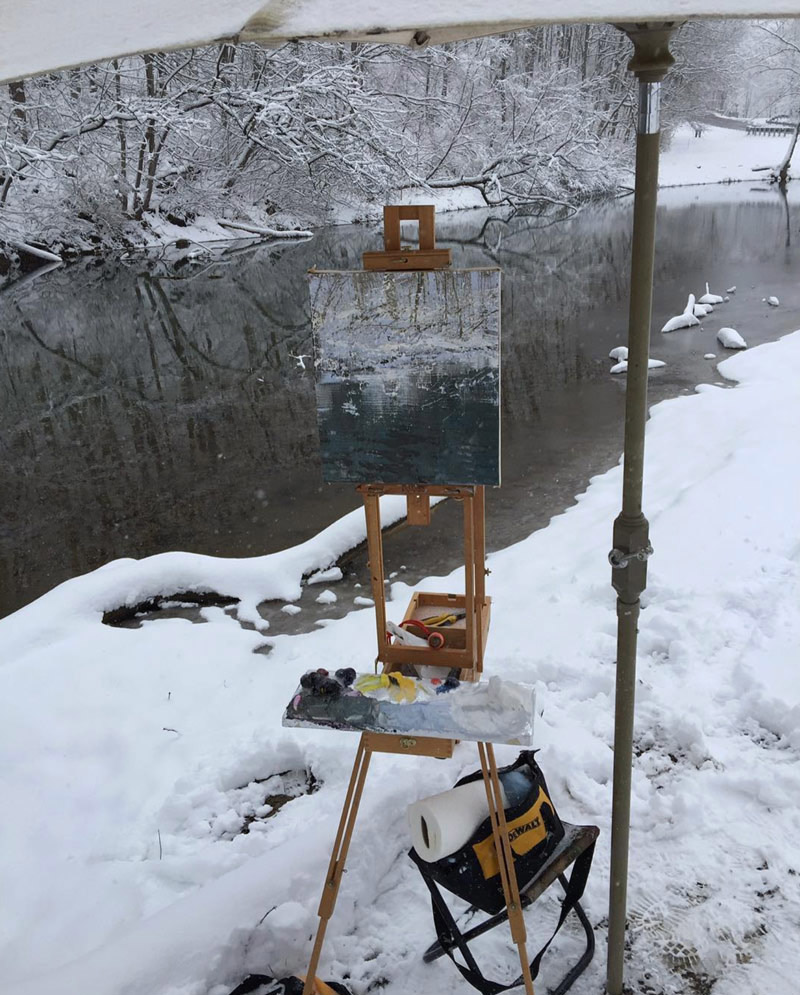 This week’s Looking and Seeing painting is his 16 June 2023, capturing a moment in time. I chose it from the many other paintings that attracted me because it had water, rocks and vegetation. His other paintings have water, rocks and vegetation but this had a certain, what I hesitate to call a certain je ne sais quoi depicting a not particularly “photogenic” scene.
This week’s Looking and Seeing painting is his 16 June 2023, capturing a moment in time. I chose it from the many other paintings that attracted me because it had water, rocks and vegetation. His other paintings have water, rocks and vegetation but this had a certain, what I hesitate to call a certain je ne sais quoi depicting a not particularly “photogenic” scene.
Lynn, of course, knew what the “quoi” was that attracted him. “I want to see a scene that has something to say,” he explains--rock and water, contrast. The trees create an infinite space. I’Il get into the trees and set up my little meditative shelter. I meditate on what is transpiring in front of me, the movement in the water, the solid rocks and trees. You need both.”
Water and rock are adversaries even deep in the West Virginia woods. We’re familiar with the ocean crashing against the rocky shore, but their adversarial relationship also takes place in quieter ways. Water seeps into cracks in the rocks and, when it freezes, breaks the rocks apart, continuing their gradual erosion which creates soil in the which the trees and plants can grow.
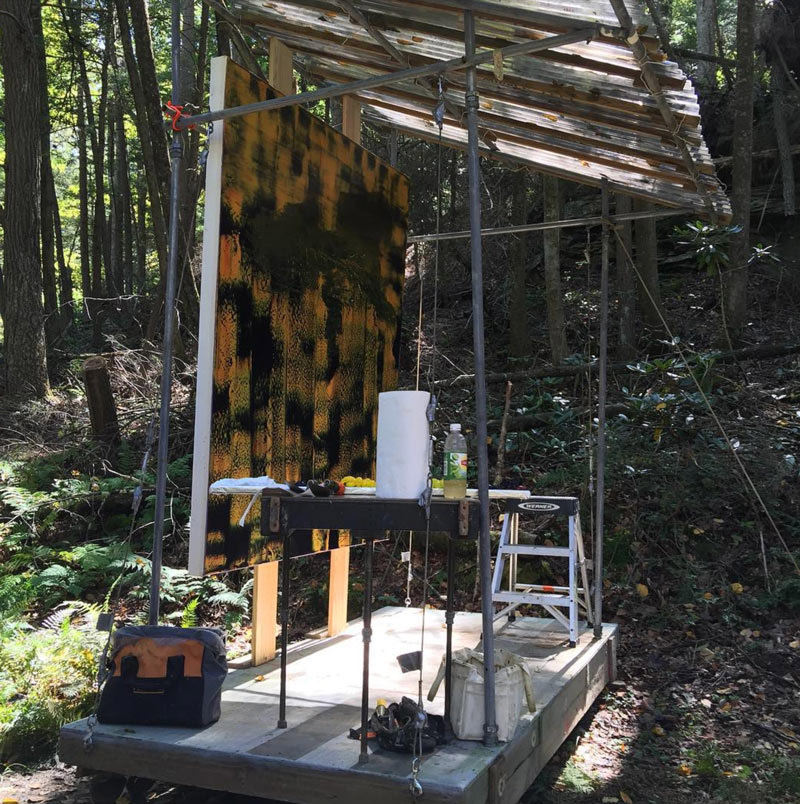 Echoing Wyeth’s abstract flash caught out of the corner of his eye that he could paint so the viewer would see it directly, Lynn often avoids the centrality of the Golden Section, as he says, and allows the eye to travel around the composition.
Echoing Wyeth’s abstract flash caught out of the corner of his eye that he could paint so the viewer would see it directly, Lynn often avoids the centrality of the Golden Section, as he says, and allows the eye to travel around the composition.
His thick impasto of oil paint is applied with a trowel. Although I marvel at the awesome detail and subtle luminosity of nearly photographic realism, I love paint—it’s lush viscosity, it’s having its own mind.
“I was still into the discipline of painting at the time and discovered the playfulness and chaos of moving the paint around. When I accessed this textural thing, it was the freedom I was looking for. Painting wet on wet is half accident, and I learned by trial and error. It’s a hard way to learn but you never forget it. You don’t know exactly what’s going to happen but you kind of know within a bracket.
“What I try to get are areas of quiet, and areas of increased activity building up to a crescendo—not just one emotion. I start off in high gear and at the very end of the experience I slow and resolve awkward areas, sometimes back in the studio.
The thick paint and trowel gestures give the paintings a multidimensional quality. “The thickness of paint functions as much as hue,” he says, “Lit correctly, the paint functions as a relief sculpture.”
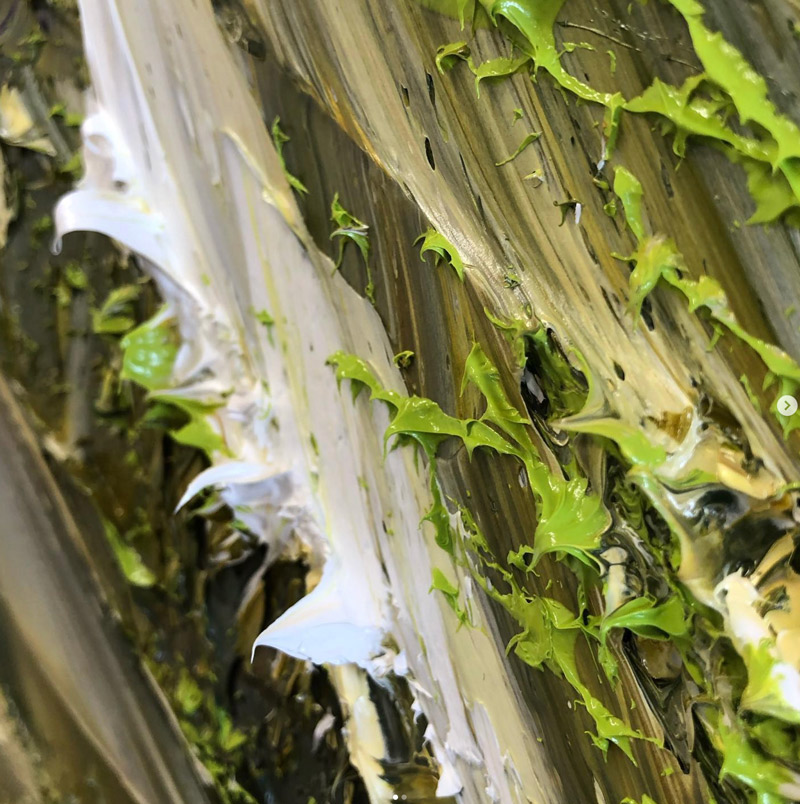
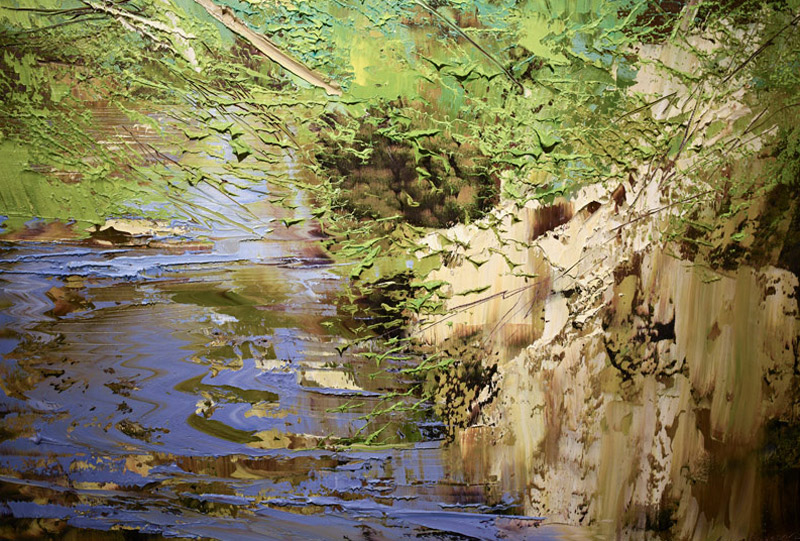 I was attracted by the water in 16 June 2023, its movement and reflections as well as the dimensionality and dimensionless qualities of its ripples. Rising up from the water are planar rocks and a cacophony of trees, branches, leaves and gradations of light.
I was attracted by the water in 16 June 2023, its movement and reflections as well as the dimensionality and dimensionless qualities of its ripples. Rising up from the water are planar rocks and a cacophony of trees, branches, leaves and gradations of light.
He explains, “I’m trying to document an experience. I’m not just doing images. I could do that sitting at home with an iPad. I do realism, not naturalism. Realism adds an emotional element. All those forms are in flux and I don’t paint exactly what I’m looking at. If I sat in the studio I would become idealistic. I have to have the tactile grittiness of nature. I try to understand it and give it something of myself and what I think.
“You can’t just go out and expect nature to speak to you. It’s not going to happen. You have to engage with nature, meet it in the middle.”
January 26, 2025
Michael Scott | Religion Meets Science
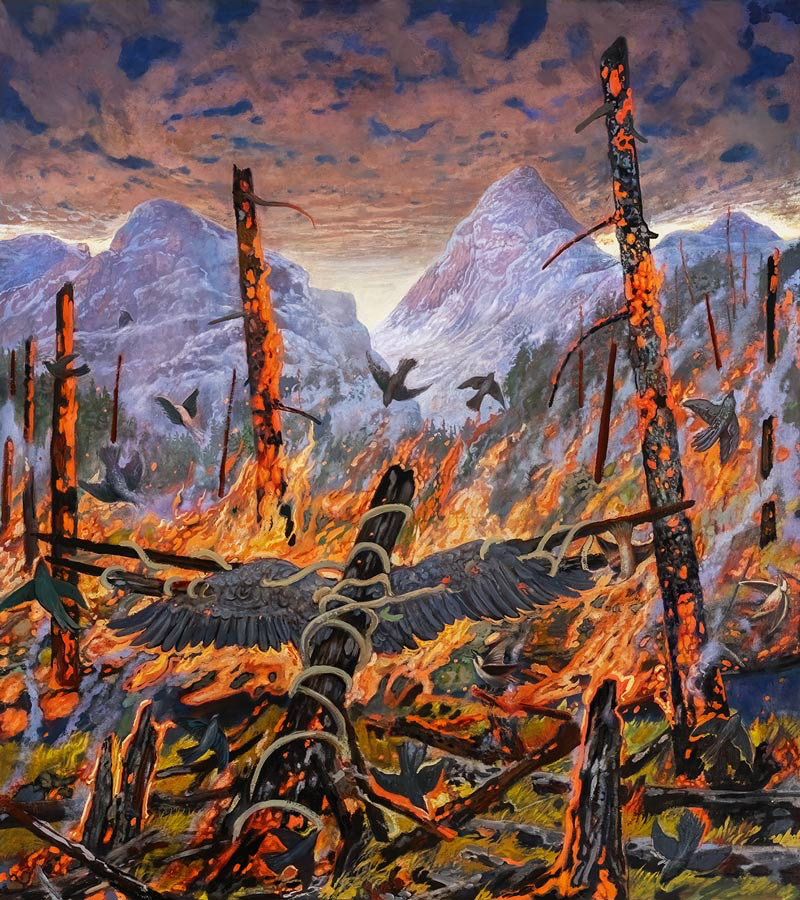
Mushrooms emerging from the forest floor providing nourishment for our bodies and our psyches—and, sometimes, bringing death—are the fruiting structures of fungi whose vast root systems called mycelia can inhabit nearly 4 square miles of turf as the fungus Armillaria ostoyae does in Oregon’s Blue Mountains. Not only is it large, it is estimated to be over 2,400 years old.
Trees, through photosynthesis, produce sugars and fats that the fungi absorb into their mycelium which, in turn, help the trees and other plants absorb water and nutrients from the soil far away from their root systems. They also form a huge network of communication among the forest flora.
The unseen physical connections in the natural world parallel its non-physical connections. The 13th-century priest and theologian, Thomas Aquinas, wrote about the preternatural. For his 2022 exhibition, Preternatural, at the Cincinnati Museum Center, Michael Scott wrote, “Somewhere between the mundane and the miraculous, exists the preternatural. That is what I have tried to paint with my sojourns to these wild places in America that offer us a glimpse of why we need to protect certain lands.
“Aquinas coined the word,” he observes. “The more I looked into it, I could explain it this way; The natural is what we exist in normally every day. You look out, and there’s the natural world. Then, there’s the supernatural, which is like an idea that’s very hard to prove, but it does exist. Aquinas was more interested in what happens in the moments in your life when you’re looking at something which is natural, but experience something beyond. If you go into the natural world and camp out, you may not get it the first day. You may not get it the second day, but if you’re experiencing the land, it will come and it will be there for you. It never fails—that moment of transcendence when it is no longer a literal experience.”
He explains, “The landscape has always offered me an invitation to enter the realm of the preternatural—a world of stillness, reflection, and phenomena far removed from the mundane activities of daily life. While I engage in this conversation with nature, logic and reason are often suspended. Indeed, the cold facts of the physical world could not be more dissimilar to the pure sensations derived from our wild places. These elements are what I instinctively and explicitly seek as a painter, not to restrict the landscape to a simple imitation but to participate in a conversation with the unknown.
“When I was up in Canada painting a landscape, the full moon was rising in front of me as the sun was setting behind me. It really shook me up. It was one of the coolest moments I’ve experienced in a long time.”
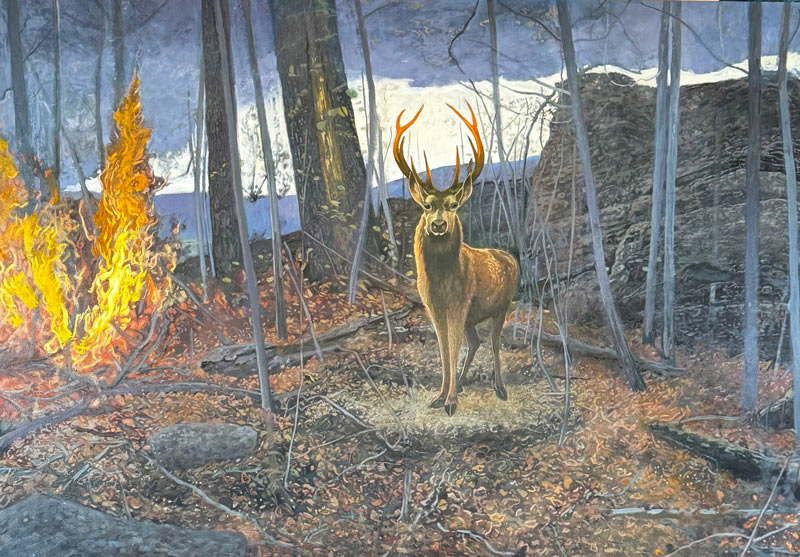 The preternatural sometimes manifests in synchronicities that shake the soul and remove the barriers between us and the other. Painting an image of a stag for his upcoming summer exhibition at Evoke he walked over to look out the glass doors opening onto the vast landscape surround his home and studio, “And there was a stag! We looked at each other and then he walked down and sat under a juniper and was just as peaceful as anything.” The gaze of the stag in his painting is now more communicative than it might have been before their meeting and the slight tilt of his head suggests a sympatico, a shared relationship of being.
The preternatural sometimes manifests in synchronicities that shake the soul and remove the barriers between us and the other. Painting an image of a stag for his upcoming summer exhibition at Evoke he walked over to look out the glass doors opening onto the vast landscape surround his home and studio, “And there was a stag! We looked at each other and then he walked down and sat under a juniper and was just as peaceful as anything.” The gaze of the stag in his painting is now more communicative than it might have been before their meeting and the slight tilt of his head suggests a sympatico, a shared relationship of being.
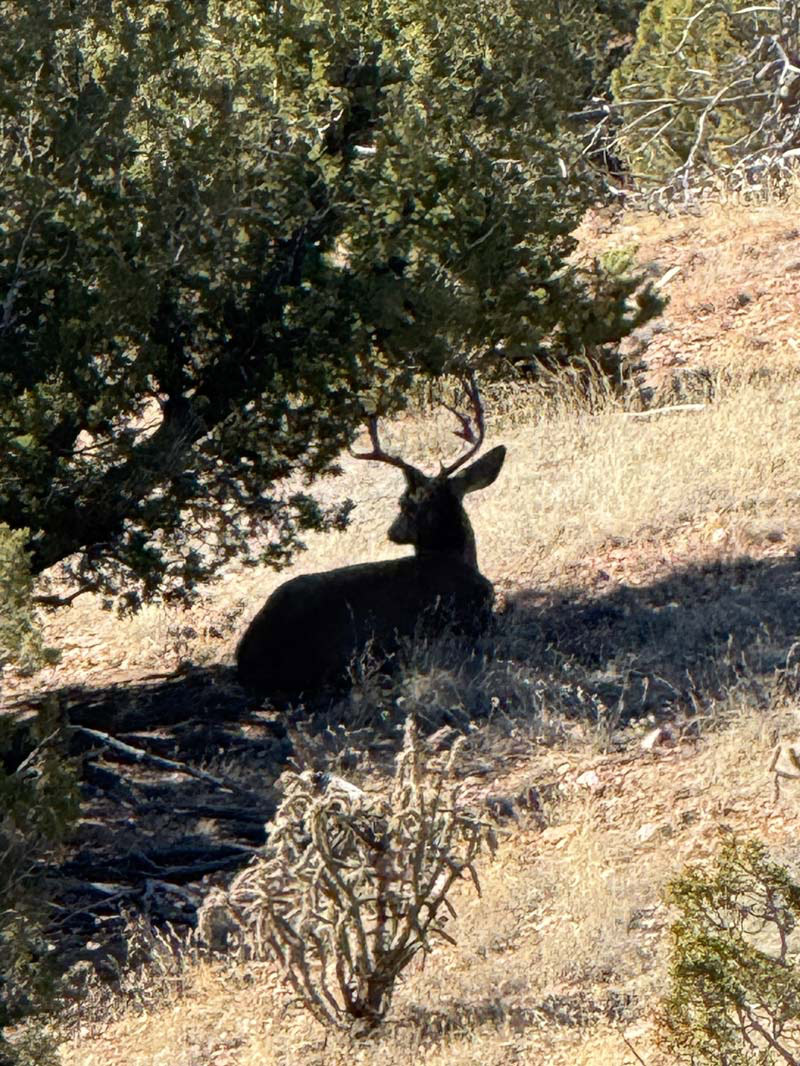 Beneath the forest floor are the mycelia, perfectly performing their role. Beneath the surface of Michael’s painting Religion Meets Science, lies an image that didn’t perform its role. As is his wont, he meticulously rendered a trumpeter swan, once nearly extinct in the Yellowstone region.
Beneath the forest floor are the mycelia, perfectly performing their role. Beneath the surface of Michael’s painting Religion Meets Science, lies an image that didn’t perform its role. As is his wont, he meticulously rendered a trumpeter swan, once nearly extinct in the Yellowstone region.
“It’s a beautiful bird,” he comments. “It’s very majestic in its own right, but it’s been used in narratives for centuries. It was too much of a naturalist painting. Although I rendered it to the hilt, it really didn’t say anything.”
The pure white swan is burned in Religion Meets Science, its blackened wings spread out as if on a cross but more closely recalling the wings on the caduceus, the symbol of medicine with its staff entwined with snakes derived from the staff of the Greek god Hermes.
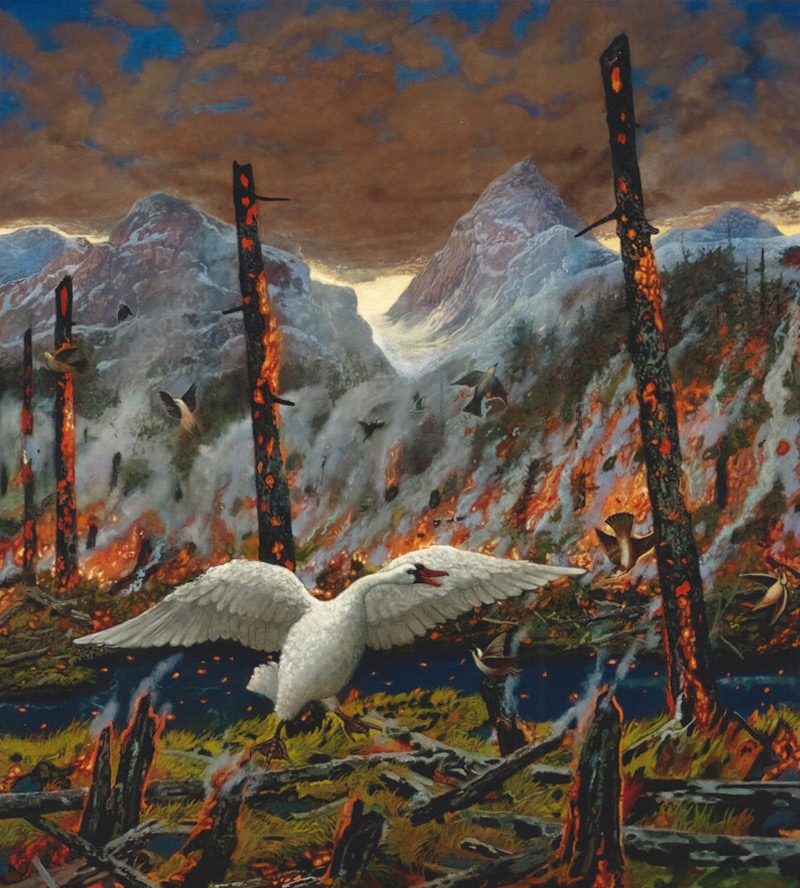 The elements of earth, air, fire and water are ever present themes in Michael’s paintings.
The elements of earth, air, fire and water are ever present themes in Michael’s paintings.
“As I was creating this body of work,” he says,” it migrated to the elements. Today, we’re dealing with floods, we're dealing with tornadoes and hurricanes, we're dealing with erupting volcanoes, wildfires and landslides. So, all four of the elements are integral in what I'm painting. I have been painting fire paintings for quite a long time, partly because I find fire to be so mysterious. It is not only something that destroys, but it is also something that renews.”
For thousands of years, Native people have practiced cultural burning, a spiritual and practical method of land management. The burns encourage biodiversity, new growth and a more resilient landscape.
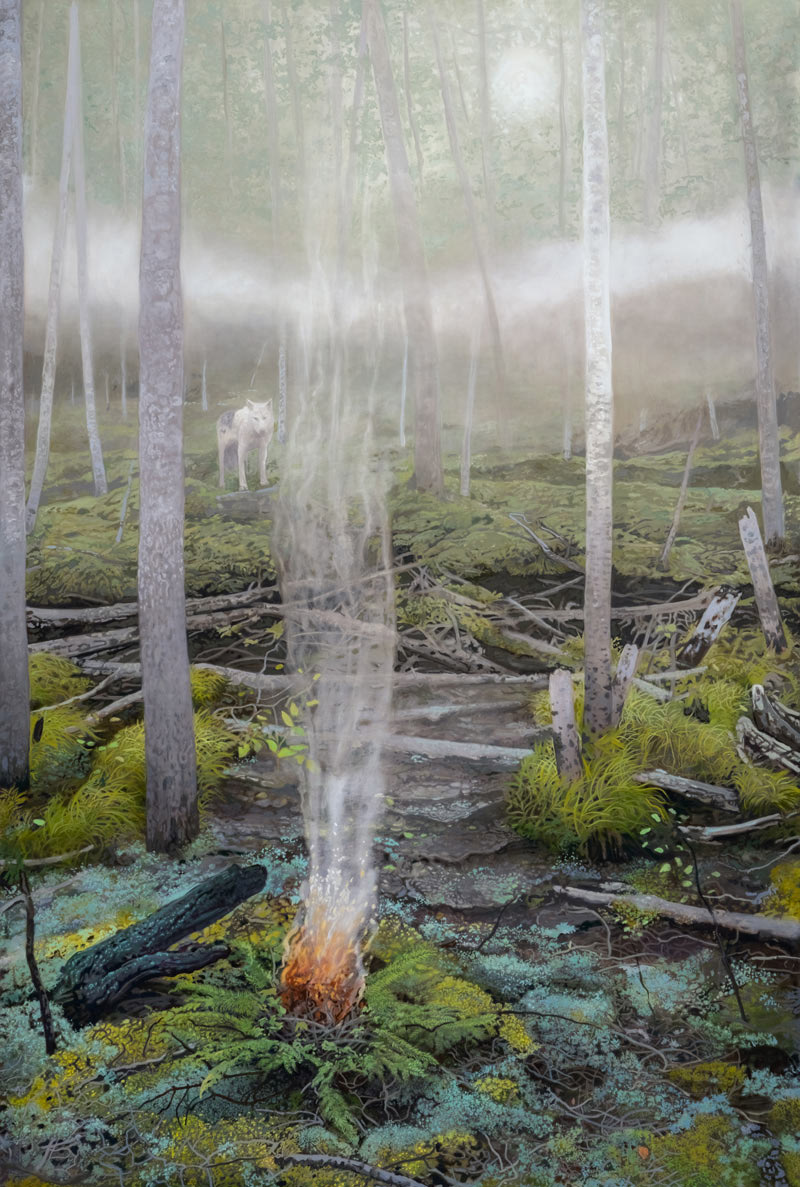 Perhaps my most favorite of Michael’s fire paintings, although there are many, is The Witness. Several years ago I wrote:
Perhaps my most favorite of Michael’s fire paintings, although there are many, is The Witness. Several years ago I wrote:
“In The Witness, the four elements interweave, smoke and mist combining in a liminal state like the place between waking and sleeping, visible and not visible, real and unreal, present and past. A fire burns from among ferns and lichen-covered rocks. The wolf becomes revealed and sees what else is revealed. Michael notes that the wolf ‘characterizes a symbol of guardianship and ritual.’ Among Native peoples the wolf is often a spiritual guide.
“In this painting the wolf appears to observe Earth in a primeval state before mankind or, perhaps, after. Despite our efforts to right our wrongs, cutting down on carbon emissions, reintroducing bison and wolves to their historical habitats we, as a species, may not survive. Michael offers hope as well as warnings in his paintings and that the non-material may be our destiny.
“’The “gray zone” of the smoke and fog crosses all belief systems and is a state between reality and unreality,’ he says. ‘It is both real and imagined at the same time as it confronts the viewer in both physical form and sprit. The smoke symbolizes the transition of matter into sprit and sends signals that represent the material manifestation of the soul’s journey.’”
The observing wolf reminds me of a story Northwest Native elders told the children when they asked what they should do if they got lost. David Wagoner interpreted it in his poem Lost:
Stand still. The trees ahead and bushes beside you
Are not lost. Wherever you are is called Here,
And you must treat it as a powerful stranger,
Must ask permission to know it and be known.
The forest breathes. Listen. It answers,
I have made this place around you.
If you leave it, you may come back again, saying Here.
No two trees are the same to Raven.
No two branches are the same to Wren.
If what a tree or a bush does is lost on you,
You are surely lost. Stand still. The forest knows
Where you are. You must let it find you.
January 12, 2025
ESHA CHIOCCHIO | First Tracks II
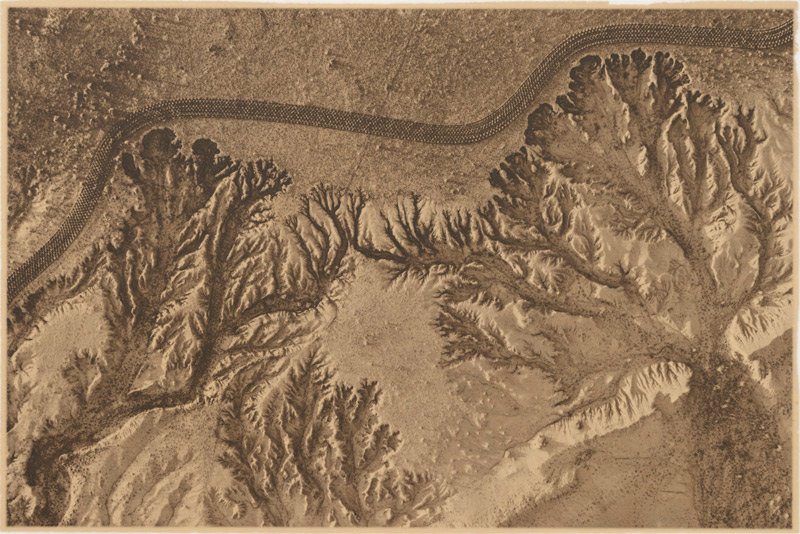
Esha Chiocchio says, “I think of soil as a very precious thing and am interested in soil and land restoration, healing the damage people have done on this planet.”
Her photographs document the traditional annual remudding of the Great Mosque of Djenné, Mali, West Africa, for “National Geographic Magazine” and the rebuilding of miles of grasslands in the Lordsburg Playa in southwestern New Mexico for which she was awarded a 2023 National Geographic Explorer storyteller grant.
The mud buildings of Djenné suit their environment with thick walls that make cool interior spaces. The torrential downpours of the rainy season ravage the mud, however, and it needs to be replenished each year. Esha describes the work as “a slippery, messy scene with mud flying in all directions, people yelling instructions, kids laughing, people chanting – community chaos at its best.” Esha was a Peace Corps volunteer in Mali in 1997-1999.
She notes different conditions at Lordsburg. “In the late 1880s, when settlers founded Lordsburg in Southwestern New Mexico, a sea of grass tickled their horses' bellies and provided ample feed for their growing herds of livestock. By 2015, cattle had eaten the grass to the ground, and dust storms frequently enveloped Interstate 10, causing over 40 fatalities along a 20-mile stretch of highway since 1965.”
The entire community comes together to remud the Great Mosque and a handful of people are working with government agencies to restore the tickling grass of Lordsburg.
In both cases, in addition to the work itself, Esha is captivated by the people doing the work. Her photographs are “stories of hope, people doing things to shift our direction.”
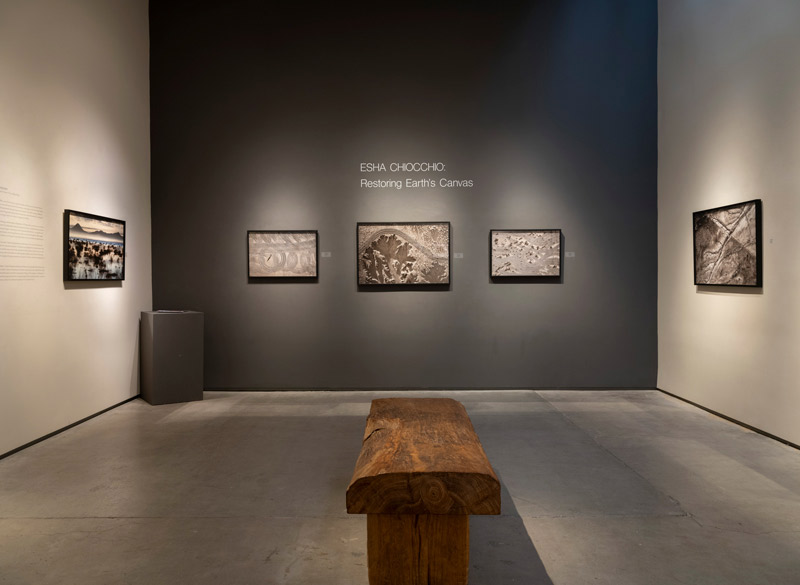 We spoke at length about photography as fine art. At various points in my career I’ve beat the drum for photography as fine art and craft (pottery, glass, weaving, etc.) as fine art, including all of it in exhibitions of paintings drawings and sculpture. We couldn’t come up with a definition of “fine art” but agreed that Kathrine Erickson perhaps elevated documentary photography into that realm with the exhibition of Esha’s photographs, Restoring Earth’s Canvas, in 2023.
We spoke at length about photography as fine art. At various points in my career I’ve beat the drum for photography as fine art and craft (pottery, glass, weaving, etc.) as fine art, including all of it in exhibitions of paintings drawings and sculpture. We couldn’t come up with a definition of “fine art” but agreed that Kathrine Erickson perhaps elevated documentary photography into that realm with the exhibition of Esha’s photographs, Restoring Earth’s Canvas, in 2023.
Esha did come close to a definition, though, when she said, “Fine art for me is an image that has an engaging power to it such that a person wants to linger on that image.”
Among the photographs in the exhibition was First Tracks II, an aerial shot from her drone showing the erosion of the playa and a mysterious patterned ribbon along the top of the image. The photo is an intimate 6 x 9” pigment print with Moon Gold leaf on archival Mylar.
Moon Gold leaf is a blend of gold, silver and palladium with a softer color than gold leaf made with gold and copper. She explains that it “gives the land a luminance worthy of its profound importance to our collective future.”
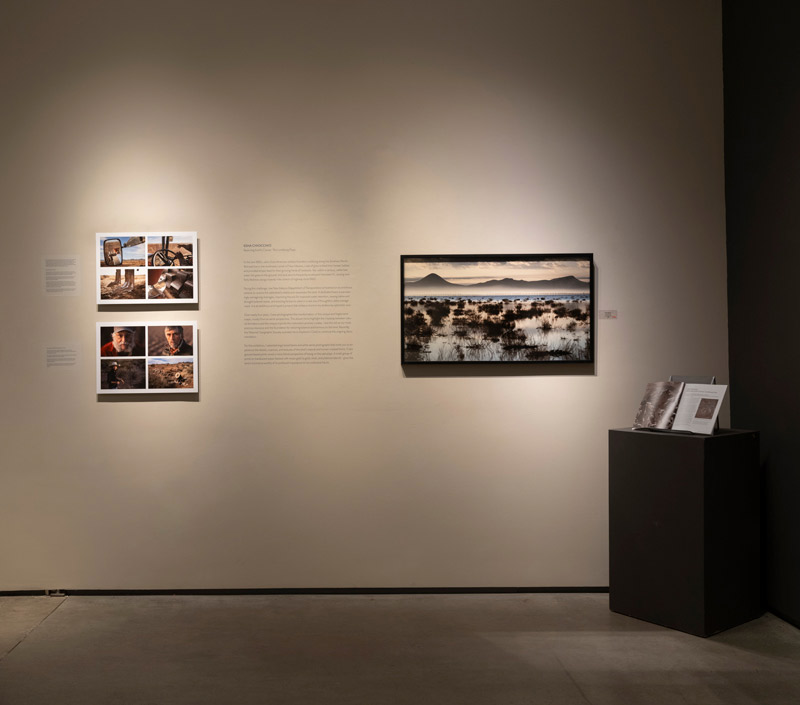 The mysterious patterned ribbon is the mark making of Gordon Tooley, one of the three dedicated environmentalists working to restore the Playa. He is the proprietor of Tooley’s Trees and Keyline Design in Truchas, NM. His mark making takes place in three stages: first, he recontours the land with a keyline plow that oxygenates the soil, then uses a seeder and then an imprinter that makes pockmarks to capture rainfall.
The mysterious patterned ribbon is the mark making of Gordon Tooley, one of the three dedicated environmentalists working to restore the Playa. He is the proprietor of Tooley’s Trees and Keyline Design in Truchas, NM. His mark making takes place in three stages: first, he recontours the land with a keyline plow that oxygenates the soil, then uses a seeder and then an imprinter that makes pockmarks to capture rainfall.
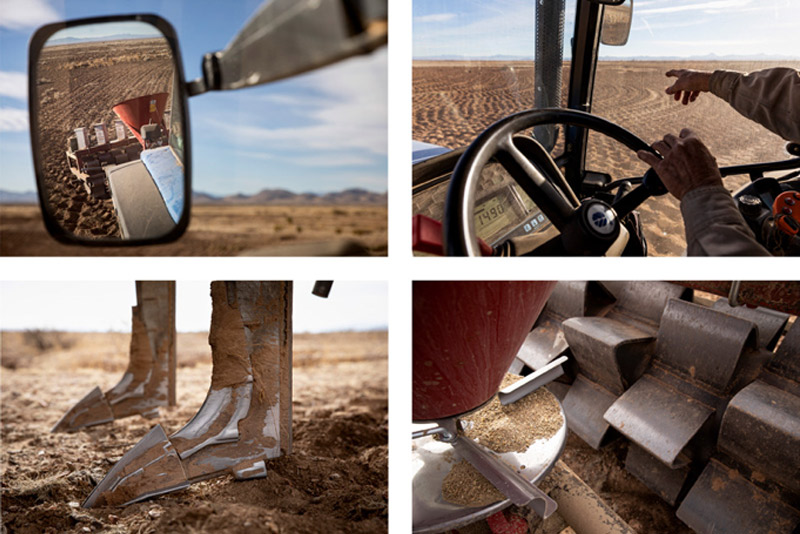 When I asked her why, among a predominantly black and white exhibition, her portraits of the environmentalists were in color, she immediately replied that “these are colorful people and Gordon was wearing a deep red flannel shirt”.
When I asked her why, among a predominantly black and white exhibition, her portraits of the environmentalists were in color, she immediately replied that “these are colorful people and Gordon was wearing a deep red flannel shirt”.
Mike Gaglio owns High Desert Native Plants, in El Paso, TX, and selected gamma grasses, alkali sacaton, fourwing saltbush and len-scale saltbush for the project, all suited to the harsh terrain.
Van Clothier owns Stream Dynamics in Silver City, NM, and works to restore damaged watersheds. In her article on Esha and the Lordsburg project for “Evokation”, Kate Nelson quotes Van Clothier: “We work seamlessly together. We work, we camp, we have yummy food. We have beautiful sunrises and sunsets. We’ve watched rains and storms, seen the tremendous success of the project—and we’re having the time of our lives out there.”
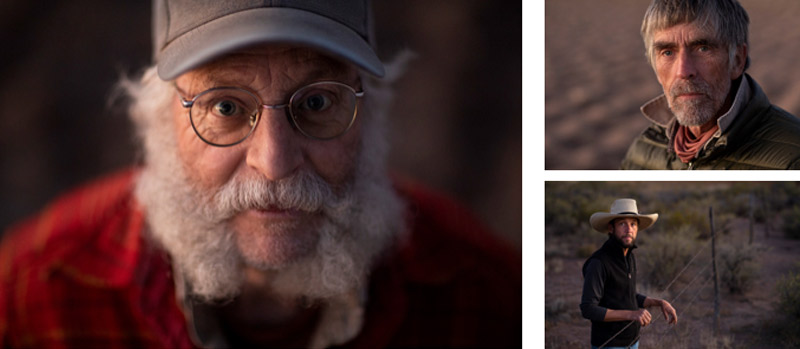 Esha has a Master of Arts degree in Sustainable Communities from Goddard College. “I was interested in sustainable communities,” she explains, “investigating how do we regenerate the earth and make it beautiful and whole. But, photography kept calling me back to it after my husband and I raised our family. It feeds my soul on a certain level. I want to tell stories—stories of hope and of people doing things to shift our direction.”
Esha has a Master of Arts degree in Sustainable Communities from Goddard College. “I was interested in sustainable communities,” she explains, “investigating how do we regenerate the earth and make it beautiful and whole. But, photography kept calling me back to it after my husband and I raised our family. It feeds my soul on a certain level. I want to tell stories—stories of hope and of people doing things to shift our direction.”
Mike Gaglio summed up Esha’s talent in Kate Nelson’s essay: “This is a tough site to be on. It takes a special person to see the beauty. It takes work. Esha’s pictures are so deep. There’s such a soul to them.”
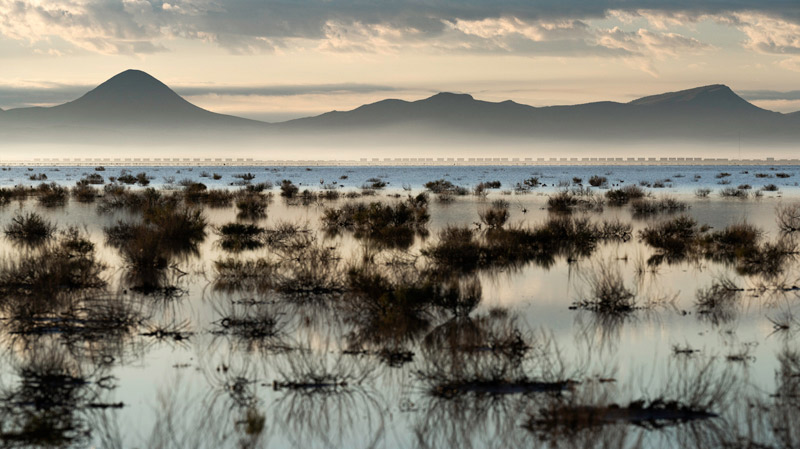 “Another photo in the exhibition was Morning Train, a color, archival pigment print, 40-inches wide of the Playa after a rain. Esha says “The train image needs to be large to be read properly. I got up early and went out to see what was going on. There was fog that morning and a train was passing in the distance. It was trains that opened up the land for ranchers and allowed them to get their cattle out to market. Heavy grazing consequently caused the grasslands to virtually disappear.”
“Another photo in the exhibition was Morning Train, a color, archival pigment print, 40-inches wide of the Playa after a rain. Esha says “The train image needs to be large to be read properly. I got up early and went out to see what was going on. There was fog that morning and a train was passing in the distance. It was trains that opened up the land for ranchers and allowed them to get their cattle out to market. Heavy grazing consequently caused the grasslands to virtually disappear.”
 Explaining her documentary work of people around the world, she says, “When I’m photographing someone, I immerse myself in their world and ask questions. Basically, I want to shine love on them. I want them to feel seen and that their work is important. The world should be interested in what they do. I choose subjects that interest me and people who have stories that the world needs to hear. My hope is to photograph people in a way that love comes through.”
Explaining her documentary work of people around the world, she says, “When I’m photographing someone, I immerse myself in their world and ask questions. Basically, I want to shine love on them. I want them to feel seen and that their work is important. The world should be interested in what they do. I choose subjects that interest me and people who have stories that the world needs to hear. My hope is to photograph people in a way that love comes through.”
Andrew Wyeth, a fine artist whose work was often dismissed as illustration, said, “One's art goes as far and as deep as one's love goes."
December 29, 2024
HARRIET YALE RUSSELL | Sintra
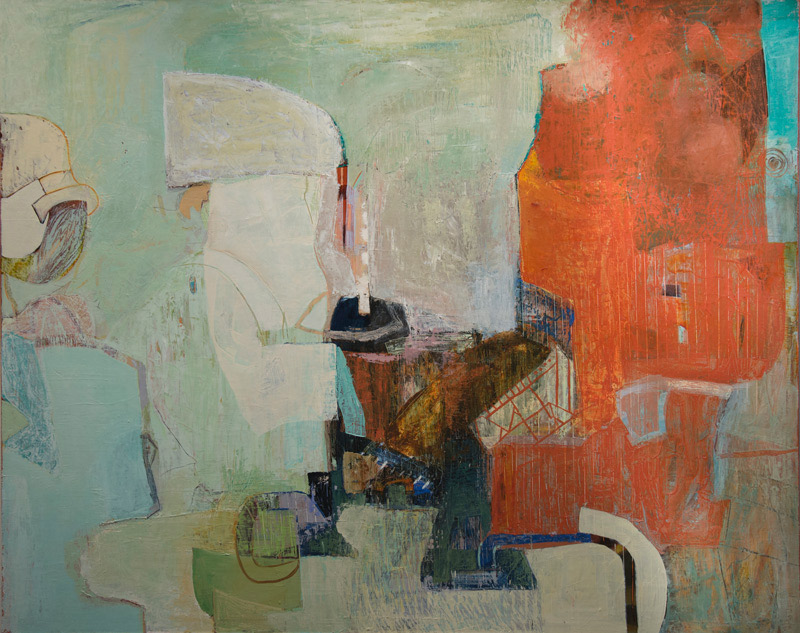
Harriet Yale Russell (1939-2023) received her MFA in Painting in 1994 from the San Francisco Art Institute where Richard Diebenkorn (1922-1993) had been a student and an instructor. Diebenkorn was one of her artist influences throughout her career.
He once said, “Do search, but in order to find other than what is searched for.” Since I never met Russell I’ve learned about her through the writing of others who knew her and by looking more closely at her art. Doing some research on my own, however, I found “other than what is searched for” (otherwise known as going down a rabbit hole).
Russell was born in Rochester, NY. Her mother was a painter and her father was a chemist with Eastman Kodak Company. One of the interesting rabbit hole tidbits is an article in the December 27, 1957 “Democrat and Chronicle” in Rochester titled “Debutantes’ Night: 13 Introduced to Society at Annual Symphony Ball”. Among the young women was 18-year-old Harriet Yale Russell who “wore peau de soie with a flowing skirt fastened at the back with two pink roses”. Her Yale ancestry goes back to the early settlers of New Haven, CT. Yale College was founded in 1701 and named after an early benefactor, Elihu Yale.
She attended the School of the Museum of Fine Arts, Boston, where she received her degree “with distinction” in the Department of Graphic Arts. She taught etching at the school for 10 years and in 1969 received it’s Clarissa Bartlett Traveling Scholarship for a year of travel in Portugal.
Among her paintings at Evoke is Sintra, recalling the picturesque resort town of Sintra, near Lisbon.
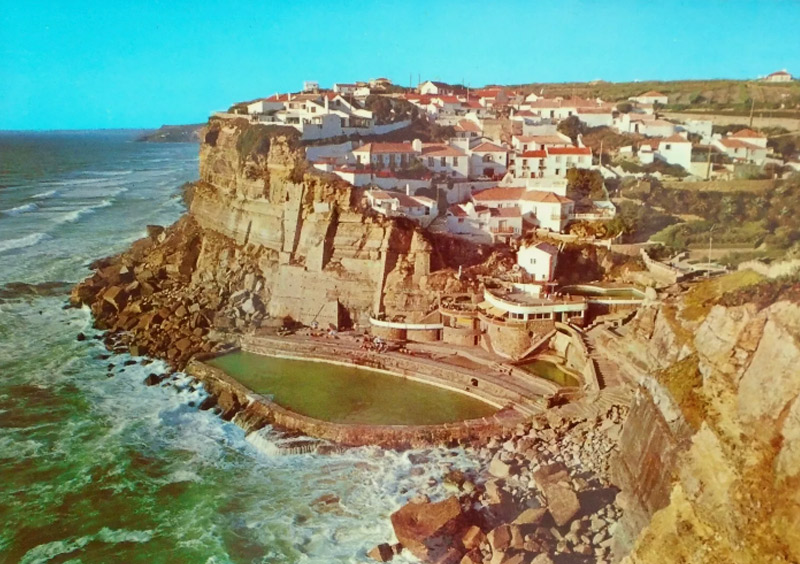 In her essay in the January 2023 issue of “Evokation”, Mara Christian Harris recalls Post-it notes in Russell’s studio, one of which contained the phrase “Listen to the paint.” The phrase recalls Diebenkorn who wrote, “I don't go into the studio with the idea of 'saying' something. What I do is face the blank canvas and put a few arbitrary marks on it that start me on some sort of dialogue.”
In her essay in the January 2023 issue of “Evokation”, Mara Christian Harris recalls Post-it notes in Russell’s studio, one of which contained the phrase “Listen to the paint.” The phrase recalls Diebenkorn who wrote, “I don't go into the studio with the idea of 'saying' something. What I do is face the blank canvas and put a few arbitrary marks on it that start me on some sort of dialogue.”
In her essay, Elizabeth L. Delaney writes, “Russell maintains hands-on contact with her medium at every stage of the creative process, even making her own paint. When it’s time to work, she often begins painting directly on the canvas without any preliminary work. This approach preserves a sense of spontaneity, while also allowing the artist to explore her vision freely—or be led by the paint as she applies it. ‘You either tell the painting where it’s going, or it tells you,’ she says….
“Russell embraces the essential, timeless qualities of total abstraction contained within the formal elements from which she derives visual matter, even as she infuses her paintings with the deep, internal feeling that propelled her to pick up a paintbrush in the first place.”
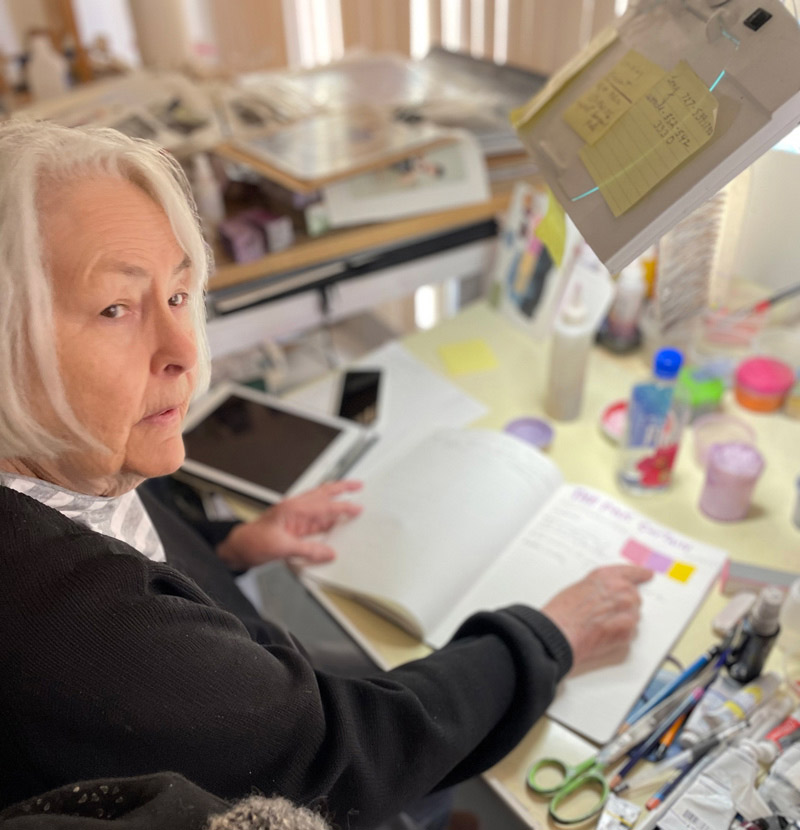 As a vociferous advocate of contemporary representational art since the early 90s I curated 3 exhibitions of figurative art here at Evoke. One of the many great things about the gallery, however, is its mix of representation and abstraction.
As a vociferous advocate of contemporary representational art since the early 90s I curated 3 exhibitions of figurative art here at Evoke. One of the many great things about the gallery, however, is its mix of representation and abstraction.
Diebenkorn wrote, “All paintings start out of a mood, out of a relationship with things or people, out of a complete visual impression. To call this expression abstract seems to me often to confuse the issue. Abstract means literally to draw from or separate. In this sense every artist is abstract . . . a realistic or non-objective approach makes no difference. The result is what counts.”
My first museum job was from 1973 to 1976 at the then Albright-Knox Art Gallery (now the Buffalo AKG Art Museum). One of the experiences of that time was working with some of the great non-objective artists of the period, one of whom was Richard Diebenkorn. In 1976 we produced the exhibition Richard Diebenkorn: Paintings and Drawings, 1943-1976 which traveled across the country. Diebenkorn and I worked on the catalogue and one of my great treasures is my copy inscribed “For John—with great respect, Dick”.
His wife, Phyllis, recalled the exhibition. “It was major . . . this one sort of made Dick national. He was pretty well-known in the art world, but this . . . did it.” It’s hard to think of Diebenkorn being other than internationally renowned with one of his Ocean Park recently selling for more than $1 million.
It’s also hard to think of Russell and her work not being more well-known. Evoke’s exhibitions have brought well-deserved attention to yet another female abstract painter overshadowed in a male-dominated art world. She moved to New Mexico in 1997 and we can think of her as our own, still deserving of wider attention.
Mara Christian Harris writes that Russell “attended a progressive school whose motto was ‘To thine own self be true,’ a maxim to which she has tried to remain true throughout her life . . . Russell revels in the freedoms of abstraction, even on a smaller scale. ‘Your only restriction is yourself,’ she says. While her subjects are serious, Russell enjoys playing with graphic elements and media—in person, her very present sense of humor is a contrast with the solemnity of her themes. Her work is smaller and darker than before, yet more playful. ‘I’m much more focused than ever before—I’m doing something very personal.’
Elizabeth Delaney writes, “Russell revels in the mystery and adventure of art making. Accepting the fact that she never quite knows where any one piece will take her, Russell finds the process of discovery to be the motivating force behind her work—its raison d’ệtre. ‘I think it’s the wonder of it, that you don’t know what you’re doing,’ she says. Her thrill lies in continually searching for the right shape or color or combination thereof, and then in the momentary satisfaction as they coalesce in a visually and emotionally engaging manner . . .
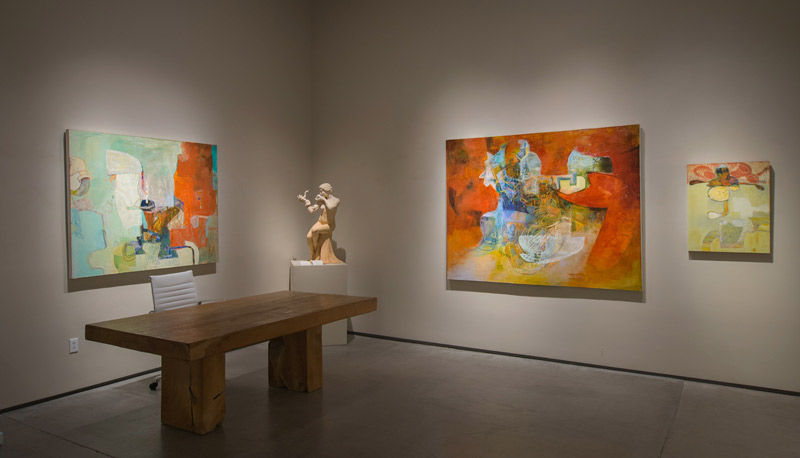 “'Life goes on, and certain things stick out and inspire you,’ says Russell. Frequently garnering subject matter from an ongoing narrative in her head—both waking thoughts and dreams—she also responds to her surroundings. Her work, in turn, becomes the physical representation of what she sees or experiences or wonders. It contains unique, nonrepresentational subject matter, which is at once personal to her and universal to viewers. Likewise, Russell’s paintings are informed by her strong sense of design, rooted in traditional aesthetic principles.
“'Life goes on, and certain things stick out and inspire you,’ says Russell. Frequently garnering subject matter from an ongoing narrative in her head—both waking thoughts and dreams—she also responds to her surroundings. Her work, in turn, becomes the physical representation of what she sees or experiences or wonders. It contains unique, nonrepresentational subject matter, which is at once personal to her and universal to viewers. Likewise, Russell’s paintings are informed by her strong sense of design, rooted in traditional aesthetic principles.
“Russell has always painted in a nonrepresentational style that both examines and celebrates relationships between formal elements on the X, Y, and Z axes. Shapes emerge and recede, collide and disengage, not simply across a singular surface, but among the many levels assembled, disassembled, and ultimately revealed within the picture plane. As such, she creates a micro-universe of infinite possibilities.”
Russell’s paintings recall Diebenkorn’s, their mark making a record of their being laid down, covered, revealed and coalescing into a coherent whole. She said, “I’ve worked my whole life to find my own marks; the marks that are mine and mine alone.”
The dark central form of Sintra anchors her composition and is surrounded by abstractions of layers of color that invite exploration and contemplation.
December 22, 2024
LOUISA MCELWAIN | Fanfare
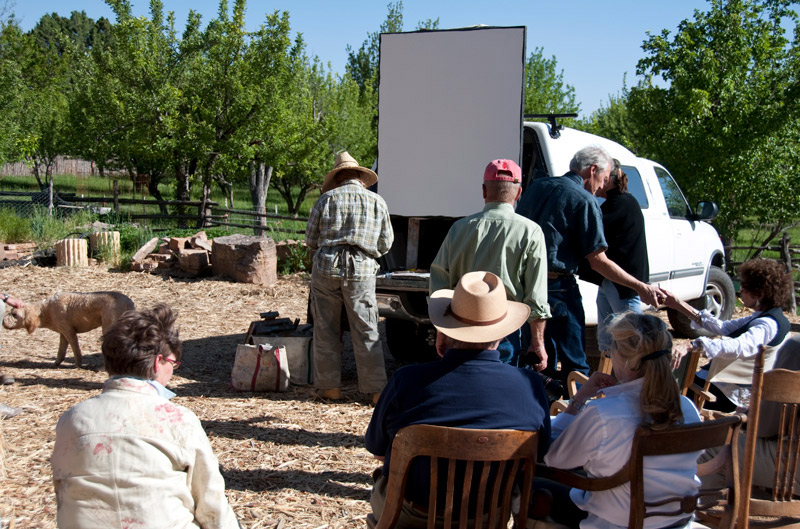
On a sunny Sunday in May, 2010, Evoke and Louisa McElwain hosted a lunch, painting demonstration and tour of Louisa’s 13-acre “gentle person’s farm” with its cattle, horses, and goats, her new guest house and the nearby Santa Cruz River running fast and cold with melting snow from the mountains. Louisa, who died in 2013, was often referred to as a “force of nature”. On her farm she showed that, indeed, she was one with nature.
The highlight of the day, of course, was her creating a finished painting before our very eyes, from a blank canvas strapped to the back of her pickup truck to one of those vibrant, color and light-filled landscapes of northern New Mexico that I first saw and admired when I moved to Santa Fe in 2007.
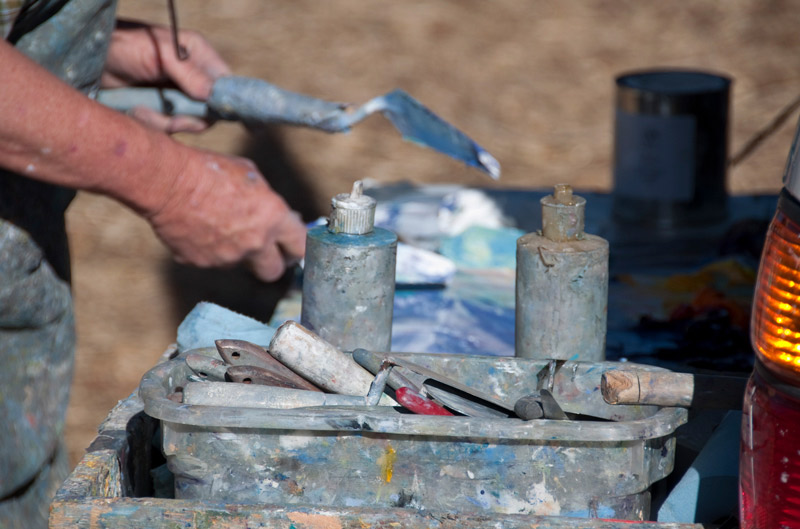 In her demonstration that day, Louisa moved paint around until it coalesced into a view of Cerro Pedernal above Abiquiu Lake while she simultaneously explained her technique and the insights she had garnered from teachers such as Alex Katz and Neil Welliver and delivered a mini-course in abstract expressionism and sensuous application of paint.
In her demonstration that day, Louisa moved paint around until it coalesced into a view of Cerro Pedernal above Abiquiu Lake while she simultaneously explained her technique and the insights she had garnered from teachers such as Alex Katz and Neil Welliver and delivered a mini-course in abstract expressionism and sensuous application of paint.
The following year, I wrote an article about the abstracted landscape and included her work. At that time, I wrote: “Watching Louisa McElwain paint is like watching a force of nature. First a loose abstraction like a purple Franz Kline suggests a composition and then great globs of paint are pushed around with palette knives and masonry trowels at the end of long sticks until a landscape appears with no individual bit of paint or field of color representing any particular object.
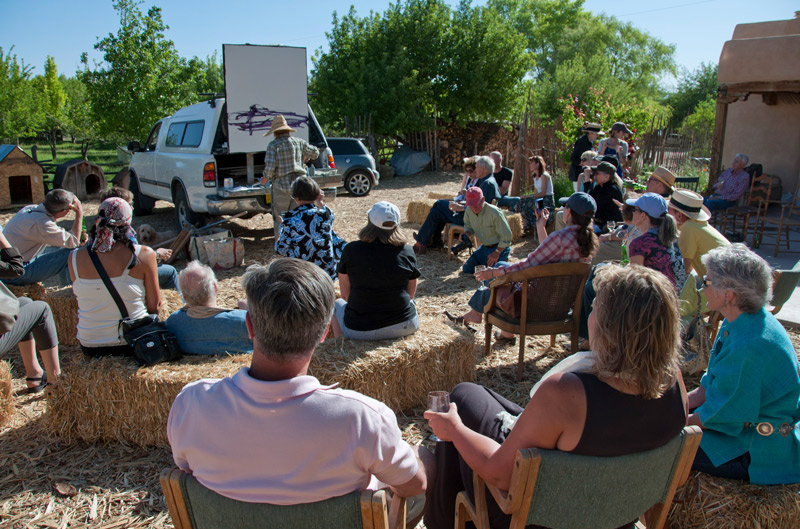 “As she describes the process, ‘I am interested in exploring a way of describing my experience of places in Nature, without subordinating the marks and strokes of paint to the motif. Paint and the gestures that move it are made to the rhythms of Nature through Time, each with its own identity as paint, yet contributing to the meaning of the work as a whole.’ She uses her knives and trowels to move paint around quickly and to avoid describing the particulars of the scene she is painting.
“As she describes the process, ‘I am interested in exploring a way of describing my experience of places in Nature, without subordinating the marks and strokes of paint to the motif. Paint and the gestures that move it are made to the rhythms of Nature through Time, each with its own identity as paint, yet contributing to the meaning of the work as a whole.’ She uses her knives and trowels to move paint around quickly and to avoid describing the particulars of the scene she is painting.
“McElwain acknowledges her debt to the sense of ‘respect for materials and gesture held by the action painters of American Abstract Expressionism.’ When Hans Hoffman suggested to Jackson Pollock that he should refer more to nature in his work, the provocative Abstract Expressionist is said to have replied ‘I don’t paint nature. I am Nature.’ McElwain echoes Pollock when she asserts she becomes nature when she paints.
“Abstract Expressionism celebrated process, gesture, spontaneity, and emotion and, to be a little redundant, abstract imagery. It, along with other movements in the first half of the 20th century, allowed artists to free themselves from making scrupulous representations of visual realty. Many of the insights and techniques of these movements later found their way into the realm of representational painting, adding another layer of richness to an ancient tradition.”
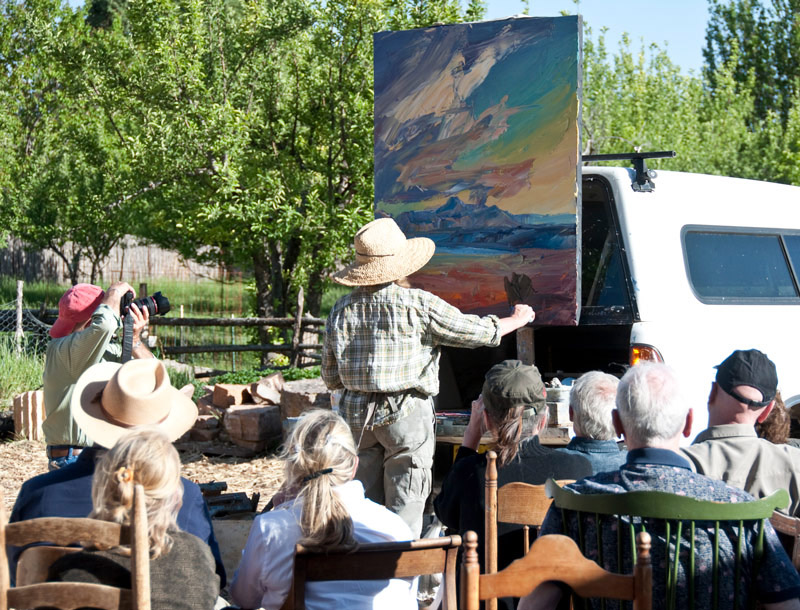 Louisa said, "It took me years to recover from art school” but she chose the best from her education to form her career. She had studied with Alex Katz and Neil Welliver at Skowhegan during a summer in Maine, and studied with Welliver again at the University of Pennsylvania. The color theories of Josef Albers conveyed through Welliver taught her “Instead of relying on a tonal structure, a painting is built on the relationship of colors. I came to understand how light is created in a painting through the relationships of colors to each other, rather than by a tonal structure of lights and darks."
Louisa said, "It took me years to recover from art school” but she chose the best from her education to form her career. She had studied with Alex Katz and Neil Welliver at Skowhegan during a summer in Maine, and studied with Welliver again at the University of Pennsylvania. The color theories of Josef Albers conveyed through Welliver taught her “Instead of relying on a tonal structure, a painting is built on the relationship of colors. I came to understand how light is created in a painting through the relationships of colors to each other, rather than by a tonal structure of lights and darks."
Grounded in color and the physical properties of oil paint, she found a way to invite her viewers into her painted landscapes which are embodiments of her actual emotional relationship to it. Her connectedness to the landscape and her awareness that she was “not the origin of this creativity that’s flowing through me,” sometimes caused her to stop at the end of a painting and exclaim “Whoa! Where did that come from?”
Although trained in the, perhaps, heady philosophy of the New York School, she painted with a spiritual and physical connection to nature. She said, “I often feel energy, like electricity, surging upward from the ground, through my knees, through my arms and right on to the canvas.”
We spoke several times about that energy and its association with the divine.
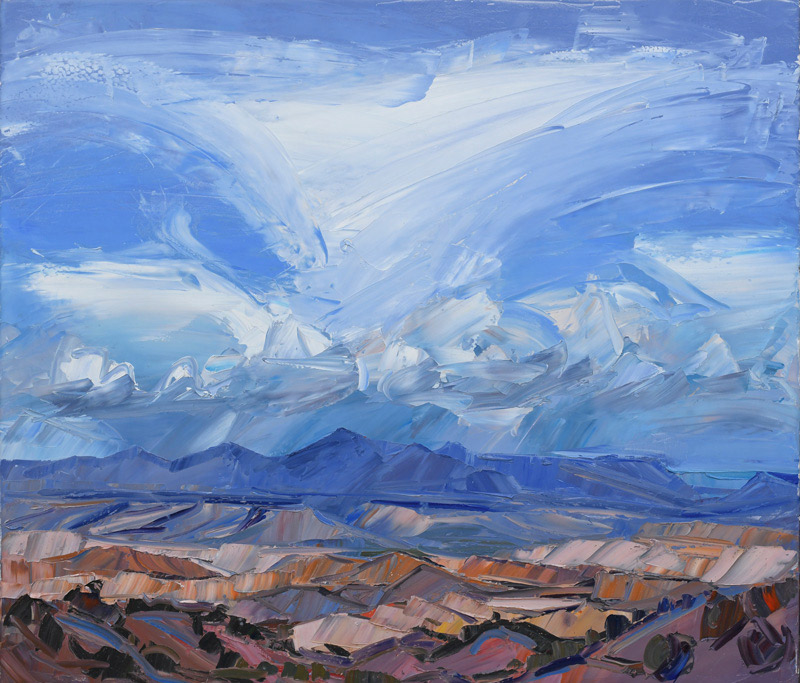 Thomas Cole was an English-born American artist and the country’s first important landscape painter and founder of the Hudson River School. He wrote, “It was not that the jagged precipices were lofty, that the encircling woods were the dimmest shade, or that the waters were profoundly deep; but that over all, rocks, wood, and water, brooded the spirit of repose, and the silent energy of nature stirred the soul to its inmost depths…. To walk with nature as a poet is the necessary condition of a perfect artist.”
Thomas Cole was an English-born American artist and the country’s first important landscape painter and founder of the Hudson River School. He wrote, “It was not that the jagged precipices were lofty, that the encircling woods were the dimmest shade, or that the waters were profoundly deep; but that over all, rocks, wood, and water, brooded the spirit of repose, and the silent energy of nature stirred the soul to its inmost depths…. To walk with nature as a poet is the necessary condition of a perfect artist.”
Louisa’s Fanfare, 2001, is the work of a poet. In a 2021 interview in “Forbes”, Kathrine Erickson said, “Louisa McElwain was NOT trying to describe a beautiful landscape on a two-dimensional surface with oil paint. She was trying to—and did—commune with the landscape. It’s that communion, that relationship with the landscape, that comes through her work.”
She would often head out as a storm was coming in to experience its energy and to portray it on canvas often in only a matter of several hours. She moved paint around until all the white of the canvas was gone and the energy of the moment and the energy of her movements were captured on it.
December 15, 2024
LEE PRICE | Nicole
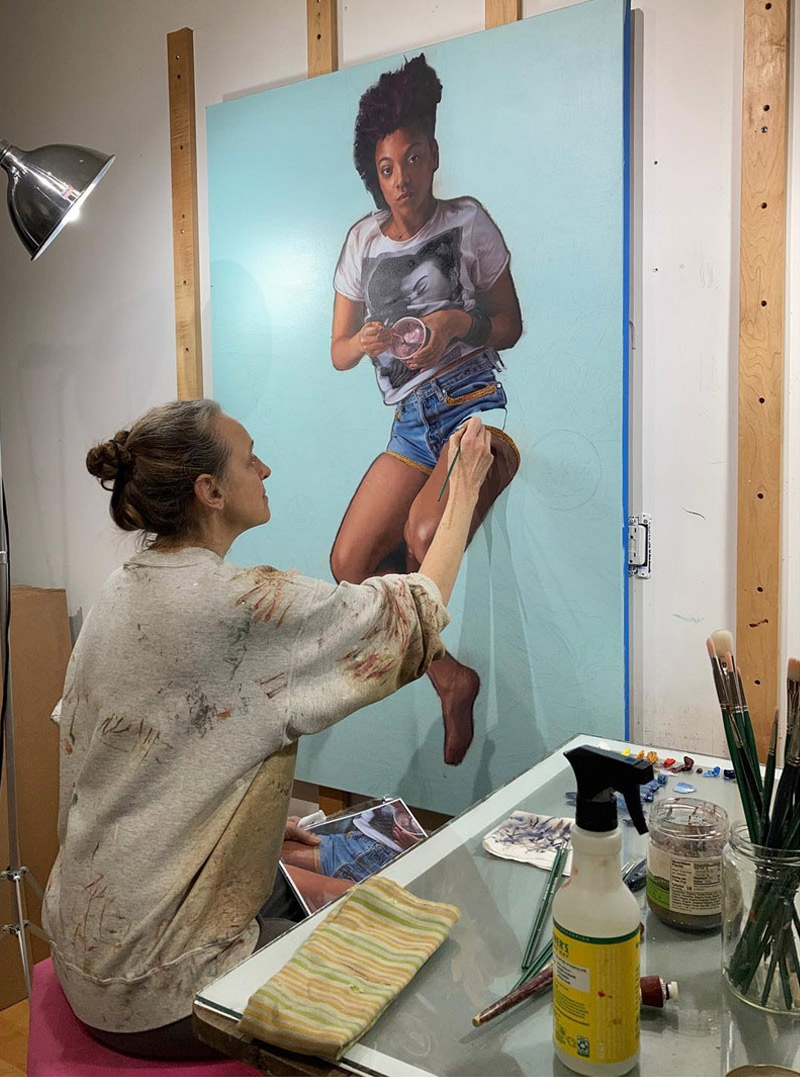
From time to time when I was a museum director and parents would recommend the art of their children or that of other relatives, I would hit the jackpot. One of those times was in 2004 when Emilie Price told me her daughter Lee had submitted paintings to be judged into the Regional Exhibition at the Arnot Art Museum in Elmira, NY. Lee won Best Work in Oil that year for her small painting of a piece of gold damask with its tightly-painted shimmering highlights and soft shadows. She won another important prize the following year. I knew she was someone to follow but lost track of her when I left the museum and moved to Santa Fe.
But not for long. I moved to Santa Fe in 2007 and Evoke began representing Lee in 2010 just as I was preparing the first of three exhibitions I curated for the gallery. No longer producing intimate paintings of fabric, she had begun painting her Women and Food series in 2007 with the painting Full, a 44 by 54” canvas. She had been painting images of women in rooms with a nebulous relationship to the food they held or happened to be nearby. In Women and Food the relationship became more specific.
“Growing up,” Lee writes, “I lived with my mother and my two older sisters. In our household, women did everything. There were no men's roles because there were no men around. My father had left and, though he continued to live in the same town we did, was not a consistent presence in my life. Both grandfathers had passed away before I was born. No other male relatives lived nearby. I attended an all women’s college. All this has shaped my view of the world.”
“I was 2 or 3 paintings into the series before I realized the subject was me and my compulsive eating disorder which, at the moment, I’m pretty much over. Once I realized it, I was able to continue and then it morphed into different themes over the years.”
The view from above in her paintings is neither voyeuristic nor judgmental. It is her watching herself and, in the instance of Nicole, the subject looking at herself, not as an object, but as a women caught in an obsession and daring anyone to comment on it. “When you’re doing something compulsive,” Lee says, “you can’t stop yourself. You’re watching yourself do it. It’s an out of body experience where you’re watching yourself as if you’re somebody else.”
In an interview with Brianna Lyle of “Flatt” magazine, Lee said, “The majority of my pieces are speaking about checking out; food as a means of distracting yourself from being present. The settings are always peaceful behind the frenetic activity of the subject. These women are searching for solace in an unfit source. The peace is there. It’s obvious. It’s just underneath the behavior. This is how compulsion is. My paintings explore the ways in which we take comfort in food and its pleasures, and the hunger that remains even amidst apparent abundance. Sometimes I’m simply speaking about the search for the lusciousness of life.”
Often, the women (she) have chosen the bathtub or the bathroom floor to indulge. “The private space,” she explains, “emphasizes the secrecy of compulsive behavior and the unusual settings emphasize its absurdity. The solitude/peace of the setting is a good juxtaposition to the frenetic, out-of-control feel of the woman’s actions.”
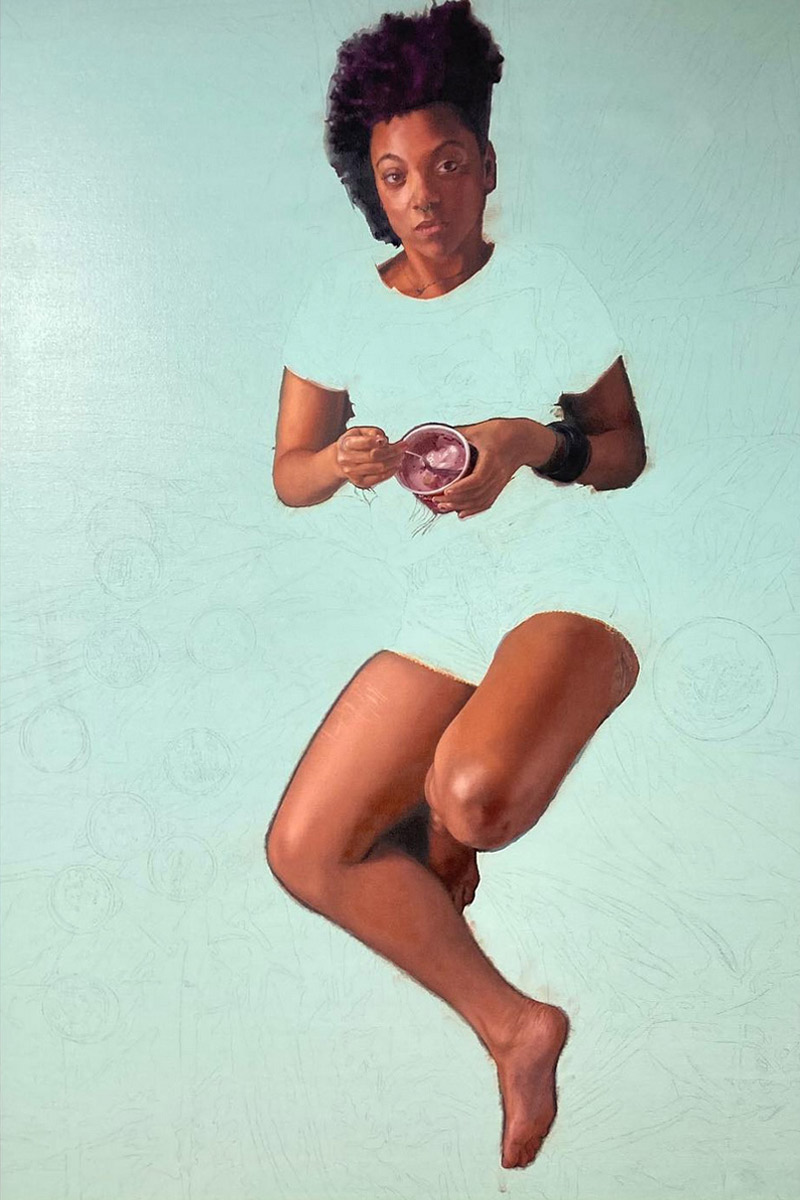 Nicole is based on a photograph from over 10 years ago. Lee’s paintings are derived from 100s of photographs taken of her carefully choreographed setups often over the course of a entire day. The model is primarily herself, but Nicole contacted Lee on the Internet and asked if she could model.
Nicole is based on a photograph from over 10 years ago. Lee’s paintings are derived from 100s of photographs taken of her carefully choreographed setups often over the course of a entire day. The model is primarily herself, but Nicole contacted Lee on the Internet and asked if she could model.
Sometimes, Lee’s look is meditative or inward looking. At other times she gazes directly at the viewer but is lost in her own state of being. Nicole, on the other hand, presents herself as defiant. “It’s her expressing herself,” Lee comments.
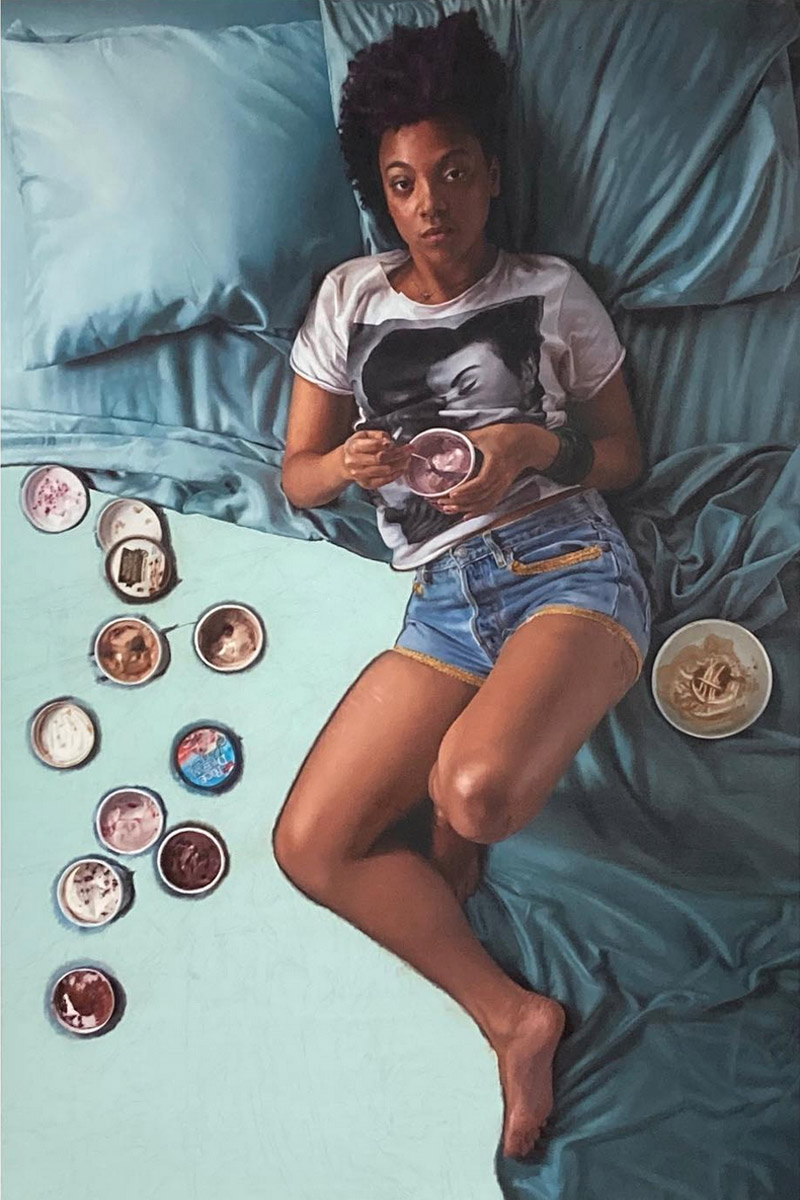 On her Instagram page, Lee has posted the painting of Nicole in progress. “When I paint,” she says, “I go object by object. Sometimes I tackle the figure first. I do the easier stuff after that. I’m definitely not somebody who’s a super lover of the process, though. Sometimes it can be tedious. Right now I’m going full speed preparing for my exhibition, Cake, that will be at Evoke in April. I’m hoping to have 9 new paintings.”
On her Instagram page, Lee has posted the painting of Nicole in progress. “When I paint,” she says, “I go object by object. Sometimes I tackle the figure first. I do the easier stuff after that. I’m definitely not somebody who’s a super lover of the process, though. Sometimes it can be tedious. Right now I’m going full speed preparing for my exhibition, Cake, that will be at Evoke in April. I’m hoping to have 9 new paintings.”
Lee has always been drawn to realism. She says, “Everyone’s either a Vermeer or a Sargent. You can never be the other one. I’m a Vermeer who always wanted to be a Sargent with his gestural brush strokes and soft edges. I have to embrace my Vermeerness.”
She graduated from Moore College of Art in with a BFA in Painting, cum laude. She has studied privately with Alyssa Monks and with Alyssa and Dan Thompson at New York Academy of Art. More recently she has been studying with Christopher Gallego.
“I’ve studied with Alyssa for years,” she relates. “She taught me how to paint the way I paint and about the technical aspects of how I make my paintings. Prior to her, I don’t know if I got anything technical from anyone.
“I’m drawn to studying with Chris. He’s taught me about blending and edges and has me wanting to begin to paint from life. What I get from him is enjoyment.”
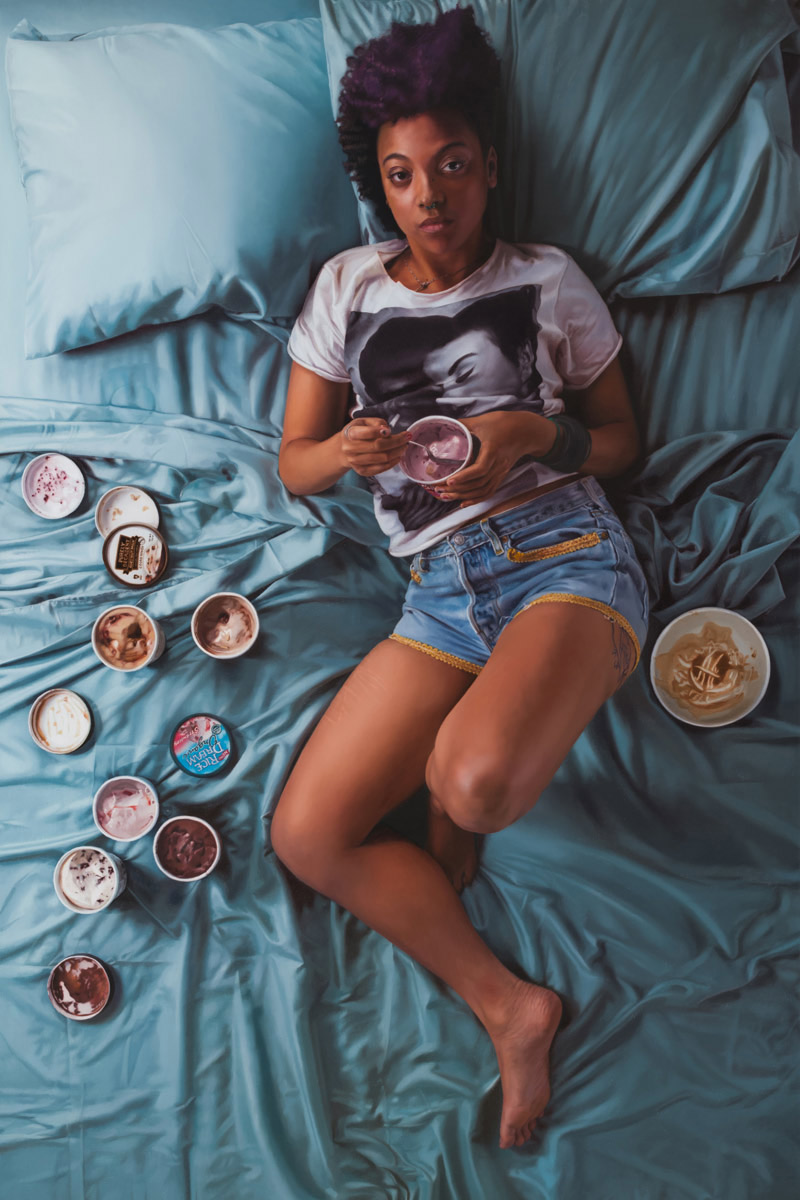 In her “Artist’s Statement”, she writes of the consequences of obsession. “One of the most potent messages these pieces deliver is that of excessive waste. Not just material waste but the waste of time and energy that is used up in obsession. Energy that could be directed towards productive endeavors, through our compulsive activity, is instead being used to wrap us in a cocoon. Where we could be walking forward, we instead paralyze ourselves. For the women in these paintings, even with an excess of food, there is no nourishment. Unable to sit with the discomfort/unease of the present moment, these women take in excessive amounts and in the process are shutting out the possibility of being truly nourished.”
In her “Artist’s Statement”, she writes of the consequences of obsession. “One of the most potent messages these pieces deliver is that of excessive waste. Not just material waste but the waste of time and energy that is used up in obsession. Energy that could be directed towards productive endeavors, through our compulsive activity, is instead being used to wrap us in a cocoon. Where we could be walking forward, we instead paralyze ourselves. For the women in these paintings, even with an excess of food, there is no nourishment. Unable to sit with the discomfort/unease of the present moment, these women take in excessive amounts and in the process are shutting out the possibility of being truly nourished.”
December 8, 2024
ALICE LEORA BRIGGS | Fall
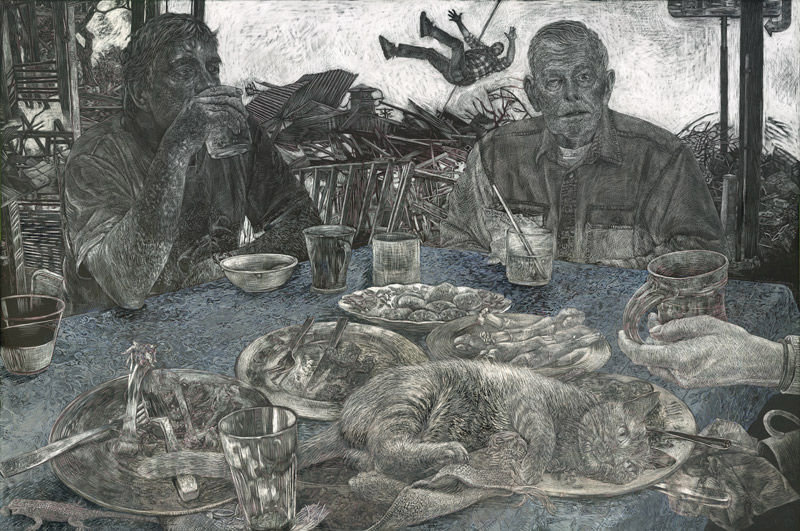
Poet Laureate and Pulitzer Prize winner Mark Strand wrote, “We’re only here for a short while. And I think it’s such a lucky accident, having been born, that we’re almost obliged to pay attention.”
When I first met Alice Leora Briggs in 2014, she was working on a series of woodcuts inspired by Strand’s poem The Room. She told him that she loved the poem but she didn’t understand it. He replied, “Love comes first and understanding later.” Her interpretations of each line of the poem were inspired by the line itself, her family history and her experiences in Ciudad Juárez, Mexico. Strand died later in 2014 and the suite was published in 2016.
She had witnessed the unimaginable horror of the murders in Juárez in the company of the journalist Charles Bowden. The murders there, during the term of Mexican president Felipe Calderón, were practically ignored by the rest of the world. She and Bowden collaborated on a book, Dreamland: The Way Out of Juárez, published in 2010. Her sgraffito drawings and Bowden’s nonfiction text brought the surreality of the murders to life. Bowden, winner of the Lannan Award for Nonfiction, died in 2014.
In 2022, she published Abecedario de Juárez: An Illustrated Lexicon, co-authored with the photographer Julián Cardona who had migrated to Juárez with his family when he was a boy. In 1995, he curated an exhibition, Nada que ver (Nothing to See), which showed the work of photojournalists who documented the daily violence, death, and poverty of life in Juárez. He was awarded the Cultural Freedom Prize from the Lannan Foundation in 2004 and died in 2020.
Alice comments, “I love collaborating and the energy and the heat that generates.” Strand and Bowden were older than she and Cardona was younger, yet death claims whom it will when it will.
Her work has “always been about confronting death. I do meditate about death on a daily basis. I’m now watching my 103-year-old mother die as she lives with dementia. Thinking about death isn’t a morbid activity. I wake up in the morning and my first thought is ‘My god I’m alive. I’ve got another shot at this.’”
Her shots have been on the mark. When she was a teenager she entered poster contests winning a drawing table, a television and a trip to Washington, DC, among other things. As an adult her prizes have been more substantial. She was named a Fulbright Scholar in 2011 and received a Guggenheim Fellowship in 2020.
Recently, she has “begun to excavate my personal history to see how it will unfurl into imagery.” One of the images is Fall, a scene at her family’s dinner table with her father and her middle brother as well as the hand of her daughter. Fall, she says, “is as much about living as it is about dying.”
Her saying that reminded me of Kahlil Gibran who wrote, “If you would indeed behold the spirit of death, open your heart wide unto the body of life. For life and death are one, even as the river and the sea are one.”
Fall is done in sgraffito. Alice explains simply, “I cut white marks into black surfaces with a knife.” And more fully, “Sgraffito fixes on two facets of my work, drawing and writing. The word comes from the Italian graffiare — to scratch. This in turn is derived from Ancient Greek, γράφειν, to cut into, to write.
“I work on panels that are coated with kaolin clay and acrylic medium (for binder), then over sprayed with India ink. My drawing tools are simple: x-acto knives, fiberglass pencils, steel wool, engraving tools, anything that will abrade the ink’s surface or cut into the white clay.”
Resting on a plate among the remnants of a family meal in Fall, is a contented cat. “A feral cat moved into our back yard in Texas and brought a half-grown kitten,” she explains. “The kitten went off and the mother cat got pregnant again. We couldn’t trap her but we took the kittens and put them in boxes and socialized them so they could be adopted. Meanwhile, she had another litter. One day I left the door to my studio open and she came in, cautiously. I was able to shut the door, we had her fixed and she’s lived with us for 7 years.”
In the lower left corner of the drawing is “Jolly Roger” a lizard who is fond of blueberries.
Behind her father and brother are the wreckage of ghost towns the family would visit when they lived in Idaho.
Beyond it all is a boy falling through space—her brother Thomas. “He was just coming of age at 15,” she relates. “He loved mountain climbing and architecture. He was vibrant, kind and sweet to me. He died in a fall in the Tetons.”
I had asked her about a quote in which she spoke of “the extreme limit of understanding”. Shortly after we spoke, she sent me an email to expand on the thought.
She wrote: “I was educated early in the fragility of life. When I was seven years old, the Tetons hurled my oldest brother into an abyss. Our neighbors fared worse. The father and son went fishing on a river that pulled them out of this world. Six months later, the U.S. Army’s experimental reactor exploded at the National Reactor Testing Station where my chemical engineer father worked. Three young men died. Whatever was left of them was sealed in lead coffins and shipped to faraway cemeteries. Our family had no words.
My father was among the 'site' workers who spent 5 minutes cleaning the area until their dosimeter badges maxed out. I remember lying in the snow around this time, making snow angels with some other kids in the neighborhood. One friend warned me not to eat the snow, ‘It will kill you.’
“Our family fell silent about these deaths for nearly six decades. I did not know where my brother was buried until I was 15 and finally worked up the nerve to ask my parents. Long before the first day I walked into Juárez, I forgave my penchant to comprehend and speak about la frontera, the extreme limit of understanding. But this phrase 'the extreme limit of understanding' does not refer solely to death...it includes the extensive menu of pain that we humans knowingly (and unknowingly) inflict on ourselves and one another, all the while turning a blind eye.”
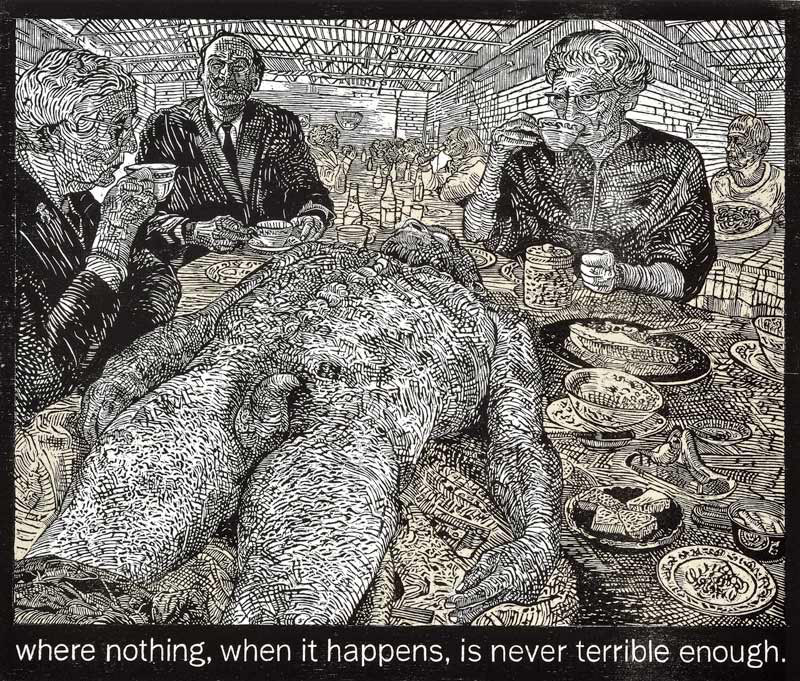 Having talked with her and having read her email, I thought back to a print in her suite of works for Mark Strand’s The Room.
Having talked with her and having read her email, I thought back to a print in her suite of works for Mark Strand’s The Room.
Ten years ago I wrote, “Line 12, Where nothing, when it happens, is never terrible enough was inspired by the line itself, her family history, her experiences in Ciudad Juárez, Mexico, and brings in Mantegna. Two genteel ladies and a gentleman sip tea oblivious to the party behind them and to the corpse lying on the table in front of them. The corpse recalls Mantegna and is taken from a photograph of a cadaver in a morgue in Juaréz following an execution and autopsy. It also recalls, for Briggs, the tragic mountain fall that took her brother’s life many years before.”
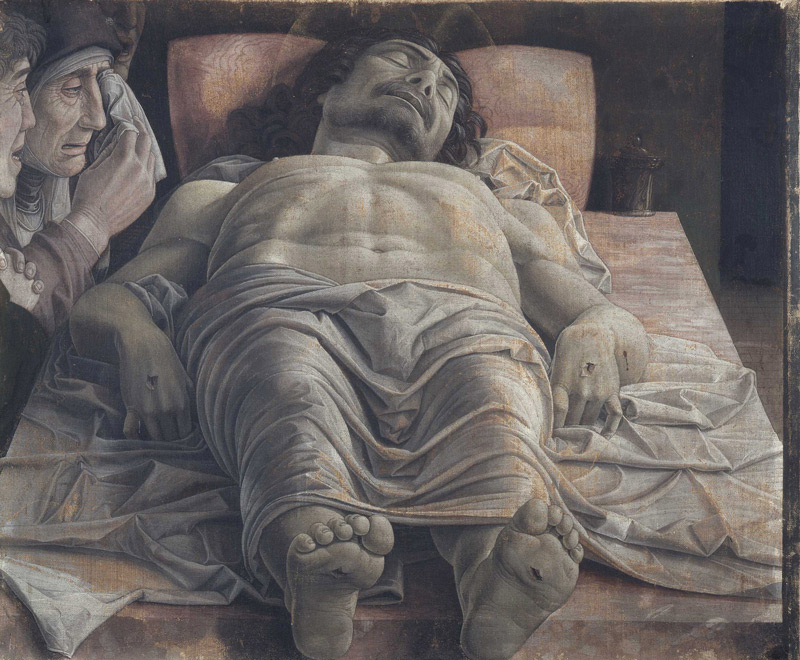 Alice brings life and death and art history into her work. The nude figure in this woodcut recalls the brilliantly foreshortened Lamentation Over the Dead Christ, ca. 1483 by Andrea Mantegna (ca. 1431-1506).
“I used to feel apologetic about my predilections,” she says, “but when I finally went to Europe (at the age of 42), I realized that I was in pretty good company, one more voice in a centuries-long tradition of Judeo-Christian visual narratives.”
Alice brings life and death and art history into her work. The nude figure in this woodcut recalls the brilliantly foreshortened Lamentation Over the Dead Christ, ca. 1483 by Andrea Mantegna (ca. 1431-1506).
“I used to feel apologetic about my predilections,” she says, “but when I finally went to Europe (at the age of 42), I realized that I was in pretty good company, one more voice in a centuries-long tradition of Judeo-Christian visual narratives.”
December 1, 2024
PATRICK MCGRATH MUÑIZ | El Nuevo Idolo
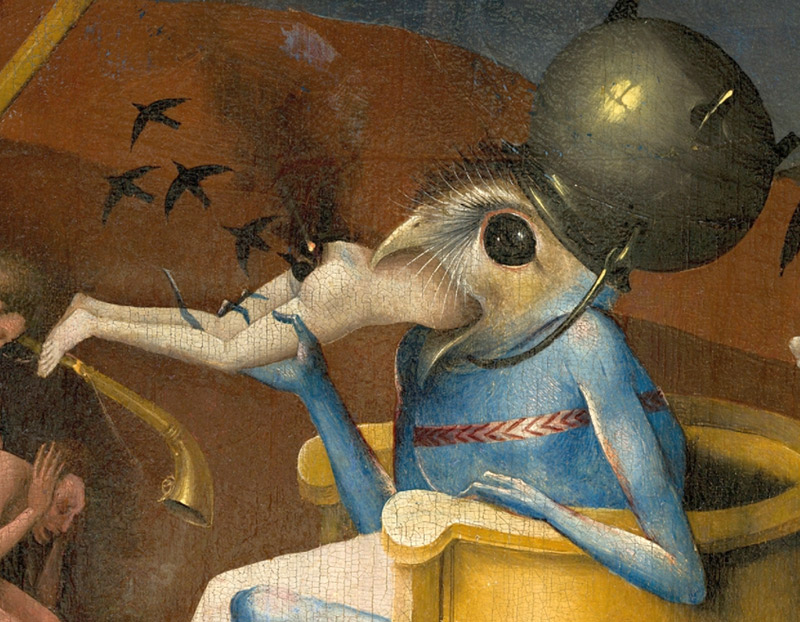
Keanu Reeves remarked, “Sure I believe in God and the Devil, but they don't have to have pitchforks and a long white beard.”
Patrick McGrant Muñíz writes, “The figure of the Devil has always intrigued me as a painter. I remember my brother and [my friend] Cesar talking much about this prince of darkness after coming back from the church sermon. After so much talk, it almost became a satirical motif to question the fear tactics used within the Christian tradition. There's always the question whether to depict him as an ugly and terrifying horned beast or a young beautiful attractive fallen angel. I've always appreciated artists’ different visions on the subject, from Hieronymus Bosch to Alexandre Cabanel.
Bosch’s Prince of Hell in his painting The Garden of Earthly Delights (1490-1510) is a ravenous bird-headed creature who is consuming a sinner who, in turn, may have consumed four and twenty black birds.
Alexander Cabanel’s Fallen Angel (1847), on the other hand, is a handsome, seductive young man shedding a tear that he is no longer favored by God among the heavenly choir floating above him.
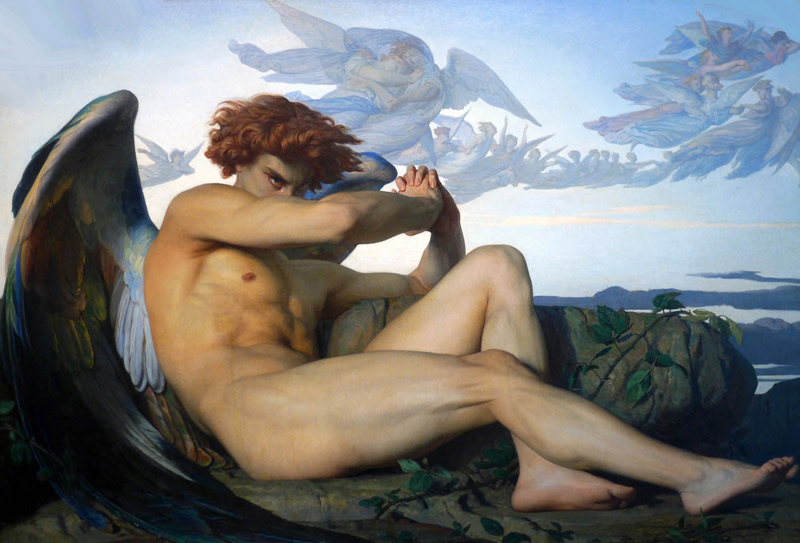 Looking at and seeing Patrick’s paintings is always a visual and philosophical delight. We can read into or acknowledge the multitude of references in his heavily-populated paintings, but he provides written commentaries for the paintings in a series created for his exhibition, Arcanas: Neocolonial Retablos Inspired after Tarot at Taller Puertorriqueño in Philadelphia. Yet, we are still free to interpret the images from our own experiences--looking and seeing with our own eyes.
Looking at and seeing Patrick’s paintings is always a visual and philosophical delight. We can read into or acknowledge the multitude of references in his heavily-populated paintings, but he provides written commentaries for the paintings in a series created for his exhibition, Arcanas: Neocolonial Retablos Inspired after Tarot at Taller Puertorriqueño in Philadelphia. Yet, we are still free to interpret the images from our own experiences--looking and seeing with our own eyes.
He writes, “In my version, El Nuevo Idolo, a Promethean savior figure holds a flamed torch in one hand and holds up a small mobile device in the other. Like Prometheus, Quetzalcoatl and many other world deities, Lucifer was initially considered as a 'bringer of light' and civilizing figure… The figure depicted on this piece is directly inspired after the painting Resurrection of Christ by El Greco. With this context in mind, one could even consider this to be an 'Anti-Christ' figure. Extending his dark wings and wearing a 'Christ-like' mask, this ‘new idol’ shows us a world driven by progress, conquest and wars, symbolized by the bulldozer, Spanish caravel and military tank beneath him. The natural world is set on fire in name of profit and gallivanting self- indulgence. The human fictions of old religions and modern corporations are insinuated in the dark ash clouds. This dual nature of past and present fictions is continued in the form of the two serpent tattoos on the masked 'light bringer's' thighs. Deceivingly this 'new idol' is not the idol himself but rather the presenter of the actual idol in the form of a small mobile electronic device.”
Quetzalcoatl, the feathered serpent god of the Aztec appears in the smoke clouds beneath the angel’s wing (old religion) on the left and modern corporate fiction appears in the form of Mickey Mouse on the right.
“A man and a woman glued to their phones can be seen at the bottom, echoing the idea of being under the spell and illusion of artificially created 'realities'. Our human addictions and distractions have created indifference, discontent and a general lack of empathy. The devil operates like the mainstream mass media apparatus, luring us with the objects of our desires and escapism while the world burns to the ground. This is a major force that is as much about inaction as it is about giving in and losing oneself to materialism and the pleasures of the flesh. It represents the enslavement to baser instincts and the negative side of the libido. As Jung's Shadow archetype, it is also speaks of the temptation of going against one's own moral principles due to confusion, chaos and an unclear sense of purpose. Big tech industries with its use of complex algorithms have played a major role in this deceitful operation. By stimulating division, they weaponize our own fears and desires, while selling our data and our souls in the process. Just like the people seeing their own shadows in Plato's allegory of the cave, we must find a way to wake up, get up and see the light outside of our algorithm-induced online bubbles.”
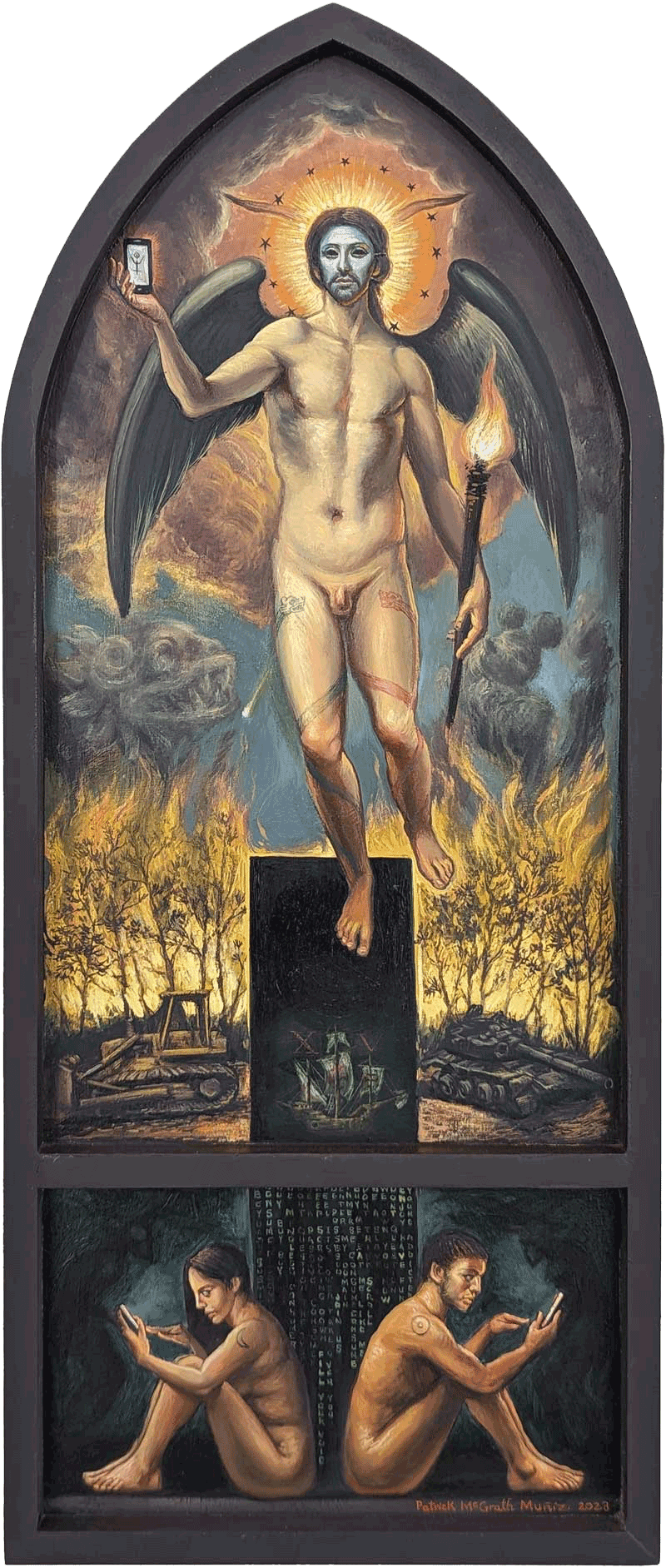 The ”new Idol” was inspired not only by El Greco’s Christ but by the Tarot Arcana card , “The Devil (XV)”. Patrick’s family home in Puerto Rico was destroyed in Hurricane Maria in 2017 along with his studio and his art. A year before, he had rediscovered his first Tarot deck there, bought from his friend Cesar for five dollars after Cesar felt the cards too accurately foretold a series of unfortunate events.
The ”new Idol” was inspired not only by El Greco’s Christ but by the Tarot Arcana card , “The Devil (XV)”. Patrick’s family home in Puerto Rico was destroyed in Hurricane Maria in 2017 along with his studio and his art. A year before, he had rediscovered his first Tarot deck there, bought from his friend Cesar for five dollars after Cesar felt the cards too accurately foretold a series of unfortunate events.
Patrick has a feeling that this deck “has a live energy” with its association with Cesar and its being one of the few things he has from his childhood. He doesn’t follow Tarot divination, being naturally skeptical—but open. He identifies with the Tarot in Renaissance Europe when the cards were used for playing games. The Renaissance is a period that inspires his own art and corresponds to the time of European conquest of the Americas, a recurring theme in his work. Tarot cards became associated with divination and the occult several hundred years later.
His own Tarot deck, Tarot Neocolonial de las Américas, depicts 500 years of colonialization and conquests in Latin America.” He writes, “Like Astrology, the images from the Tarot remind us of our inherited Western world fictions and alternative belief systems, which have influenced our culture for millennia. Beyond that, it also points towards a universal set of archetypes that allows us to explore and re-interpret our current age, from a holistic perspective, viewing world history and our own lives as cyclically interconnected.
“I see art as a creative attempt to recover some of our fading memories and as an antidote to our intolerable collective amnesia and superfluous distracted consumer media that keeps us disconnected from the natural world and our human psyche. Ultimately, I make art as a way to know myself and connect my own story with the larger story of humanity.”
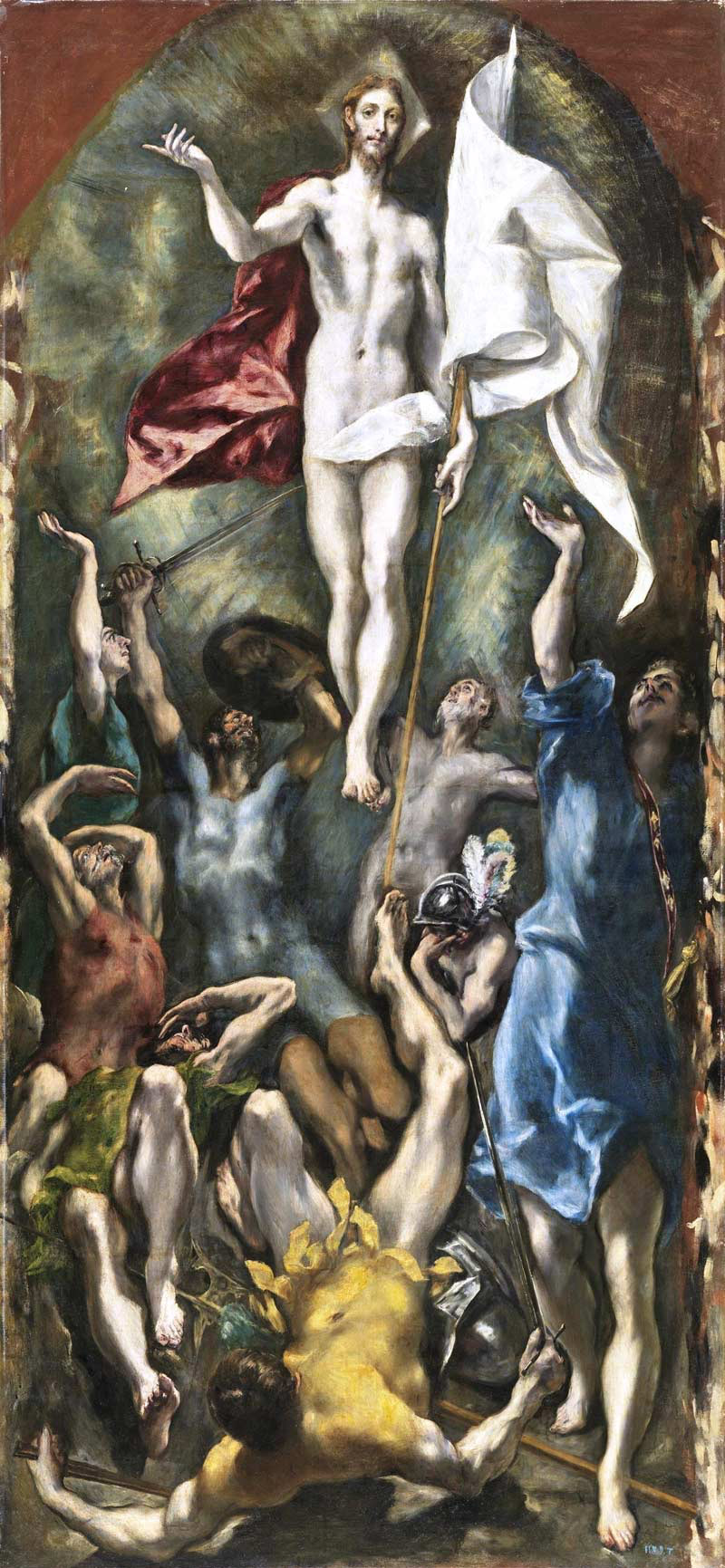 Patrick’s narratives are becoming more personal but still rooted in art history and his concern for the broader contemporary world. Born in New York and growing up in Puerto Rico in the 80s and 90s he was steeped in Hispanic culture as well as the distracting contemporary consumer culture.
Patrick’s narratives are becoming more personal but still rooted in art history and his concern for the broader contemporary world. Born in New York and growing up in Puerto Rico in the 80s and 90s he was steeped in Hispanic culture as well as the distracting contemporary consumer culture.
In an interview for the PBS station WHYY in Philadelphia in conjunction with his Arcanas exhibition, he said, “Me being a half-Irish American, half-Puerto Rican? Well, I can relate to McDonald’s, but I can also relate to Catholic iconography, you know.” There’s a bit of Irish humor in there, as well.
As an Irish-American who grew up in a town south of Boston known as the “Irish Riviera”, I didn’t pursue my Irish heritage until later in life and now hold dual citizenship with the U.S. and Ireland. Patrick keeps “McGrath” in his name and he and his brother keep thinking about visiting Ireland. I gave him a little nudge, hoping that he’ll discover another rich cultural resource in his Irish heritage as he continues to explore the universality of human experience.
November 24, 2024
OTTO RIGAN | Coming of Age
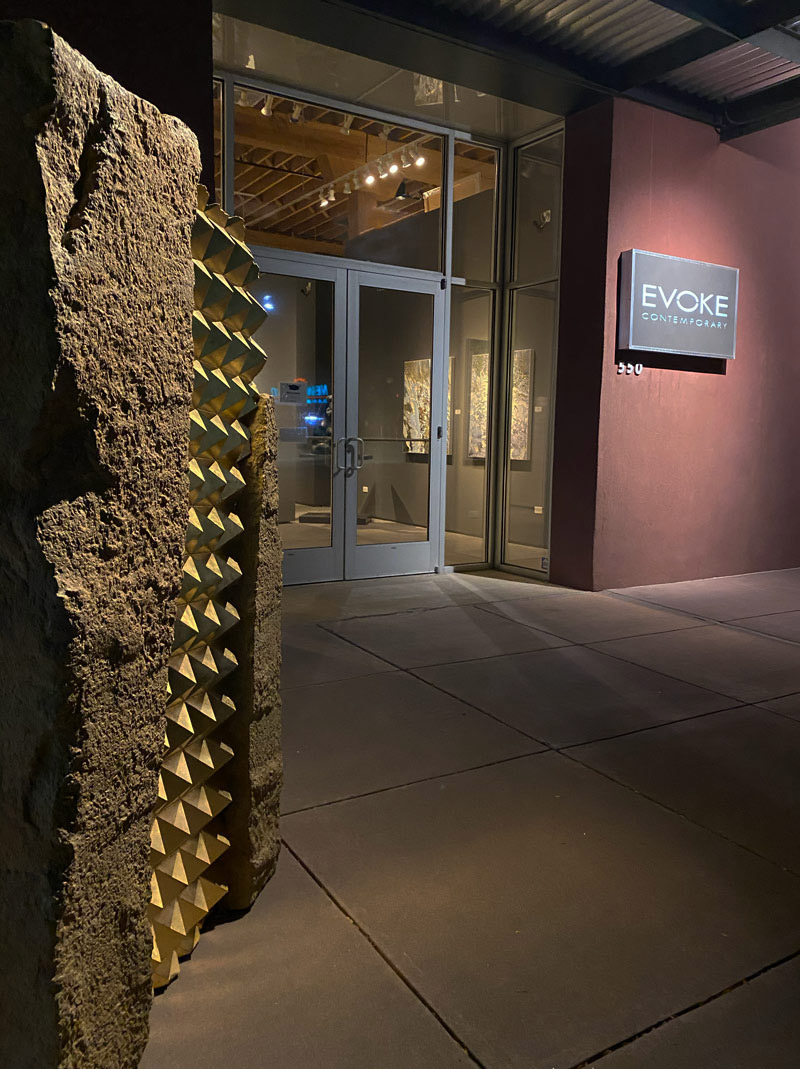
Standing outside Evoke is a 75-inch tall sculpture of limestone and gold leaf. Limestone is a solid rock formed over millions of years when calcium-rich minerals precipitate out of water, or when shells of marine animals settle and become compressed, sometimes maintaining their forms as fossils. Gold is a soft, malleable element, so much so that it can be hammered paper thin and applied to icons, picture frames….and carved limestone.
Otto Rigan’s Coming of Age is a result of his life-long exploration of light. The carved, pyramidal forms in the limestone are gilded and are juxtaposed with the natural stone. The gold mineral reflects and becomes light, appearing different in bright sun or cloudy skies. James Turrell, whose sculptures of light, color and space have earned him the title of “master of light”, says “Light is not so much something that reveals, as it is itself the revelation.” Just as the gold in Otto’s sculpture becomes light, immaterial light becomes substance.
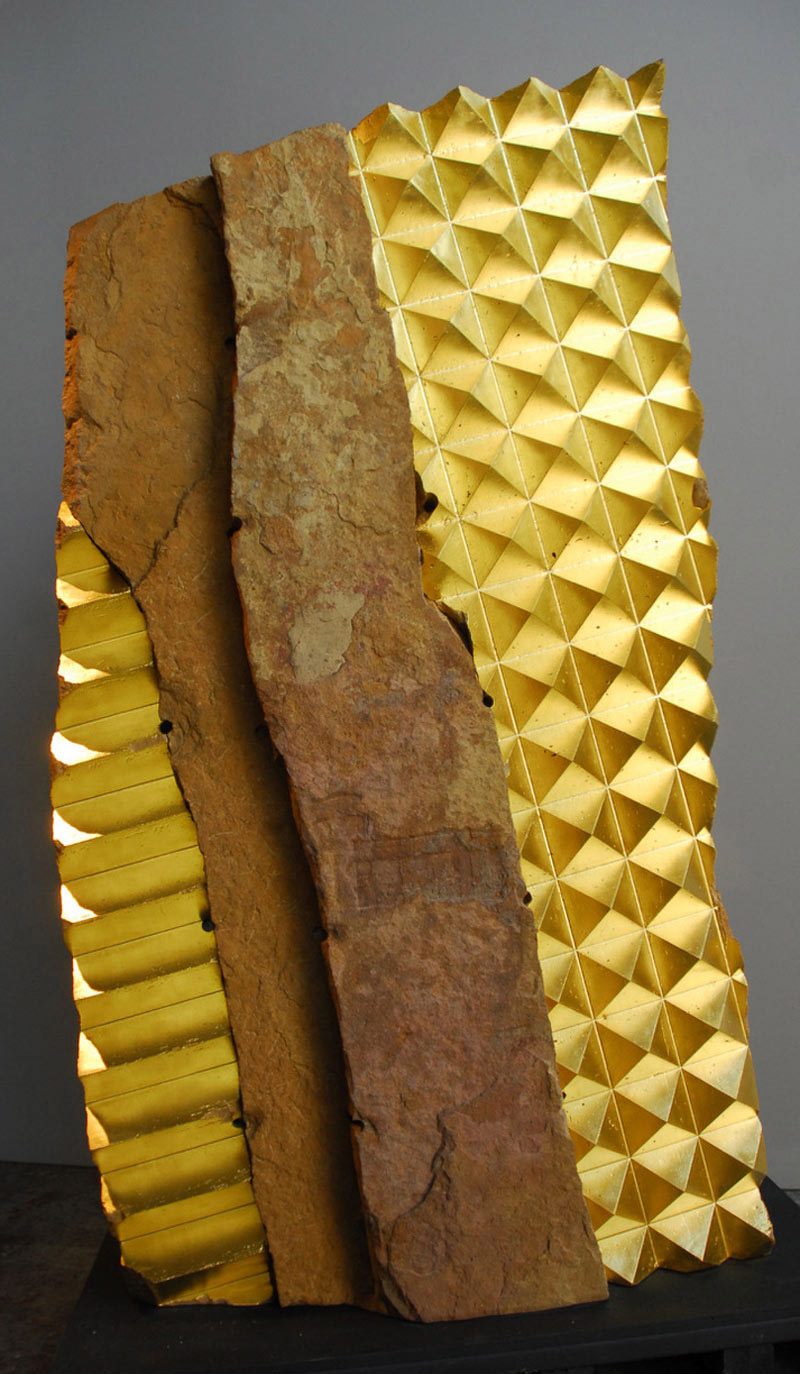 The gold pyramids also reflect colors around them—the trees or the color of your coat as well as the reflection of it on an adjoining pyramid. Otto notes that the color intensifies where the bases of the pyramids join and lightens toward their outer points. “Looking and Seeing” require a bit of fine tuning to appreciate the subtleties of the sculpture.
The gold pyramids also reflect colors around them—the trees or the color of your coat as well as the reflection of it on an adjoining pyramid. Otto notes that the color intensifies where the bases of the pyramids join and lightens toward their outer points. “Looking and Seeing” require a bit of fine tuning to appreciate the subtleties of the sculpture.
The fine tuning of the viewer’s perception is referred to by Arvo Pärt, the great Estonian composer, who wrote about light: “I could compare my music to white light which contains all colours. Only a prism can divide the colours and make them appear; this prism could be the spirit of the listener.”
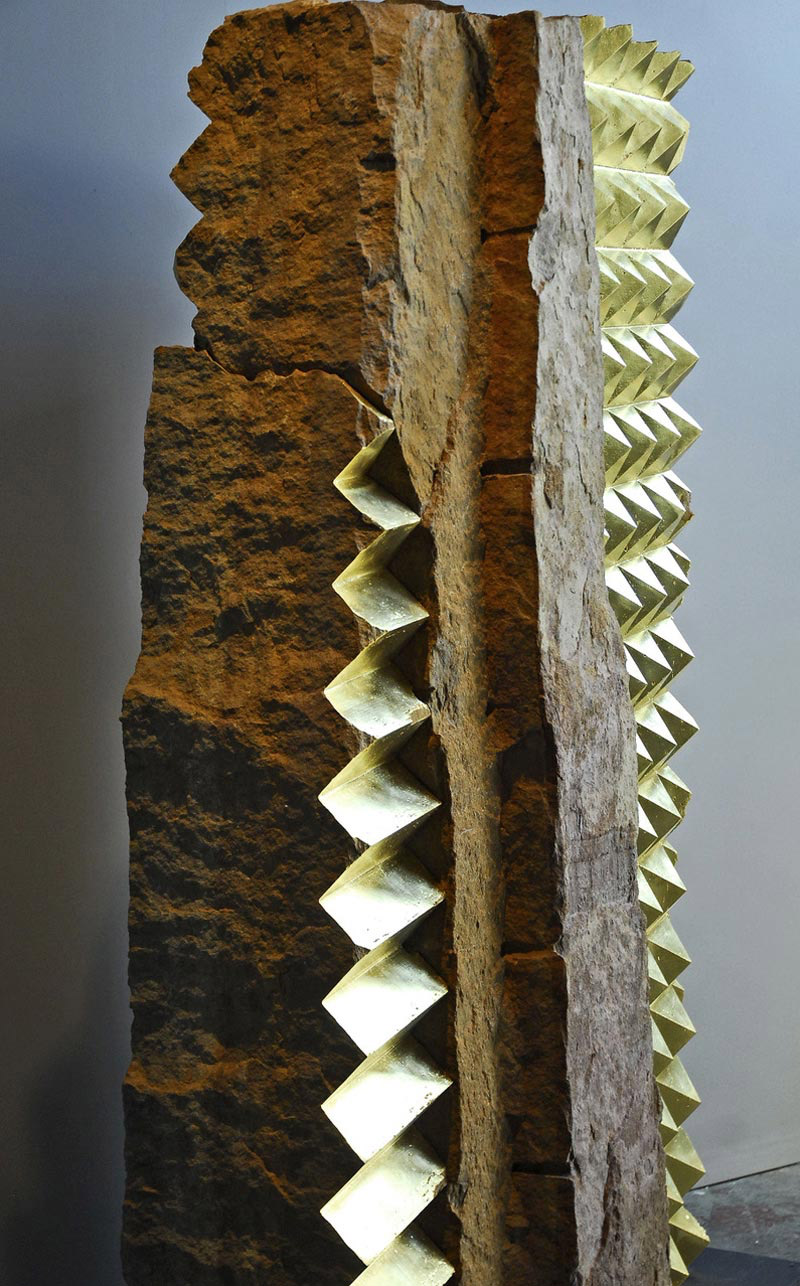 Otto recalls sitting in a Lutheran church as a boy, terrified by the sermons, but enraptured by the sunlight coming through amber glass windows as the transmitted light animated the pulpit and the other objects in the church.
Otto recalls sitting in a Lutheran church as a boy, terrified by the sermons, but enraptured by the sunlight coming through amber glass windows as the transmitted light animated the pulpit and the other objects in the church.
“I was fascinated by light going through the lens of glass,” he explains. “When I got into college, I was studying to be a painter, but I always had an interest in glass. My only real knowledge of glass had been working with stained glass. I did an apprenticeship in my early 20s, learning about architectural glass and I became familiarized with the medium. I learned to handle it and I learned to understand it. And I learned to understand what light does. In other words, it's not just about making a window, it's about how it affects the environment.”
Later, working in Santa Fe, he learned that glass also has a compressive capacity roughly equal to that of granite. He began stacking discarded fire bricks from old kilns with sheets of picture glass he got from a local frame shop. “And sure enough,” he says, “it kind of worked. When you consider stone to be impenetrable and you insert a light seam of glass and it still carries the load, it works. So that’s how I ended up getting pretty serious about using it as a medium.”
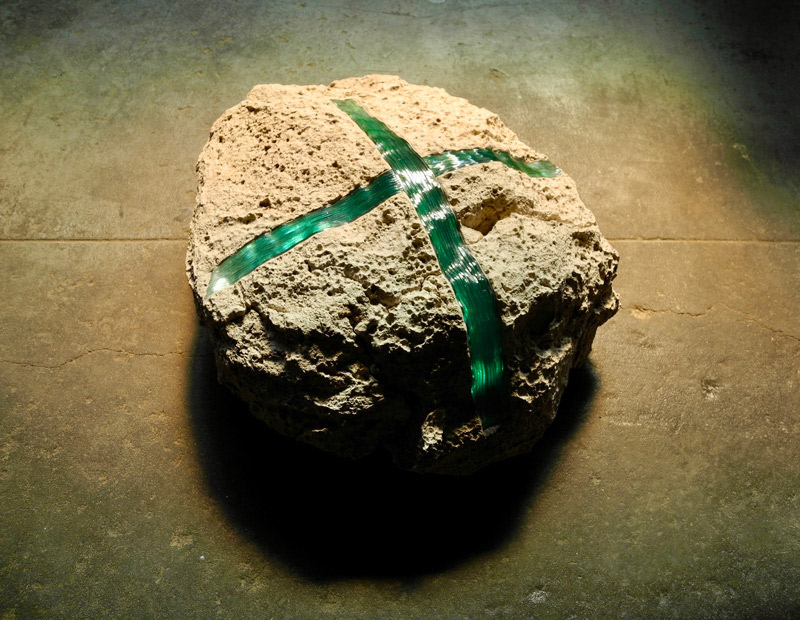 An early sculpture is X#1 (Fred), 1988. Otto roams the stone yard of a quarry searching for pieces to work with—often looking for something to fit an idea but just as often getting an idea after finding a stone. The owner of the quarry once asked, “Otto, why do you always choose the ugliest rocks we have?” To which he replied, “Because there's room for a relationship. If it's an incredibly beautiful stone by its own self, I don't want to cut it. I don't want to do anything to it. I want to find one that enables me to do something with it. So as soon as I cut a straight line through you suddenly see an edge. As soon as you embed glass in it, suddenly you're seeing inside that stone. You take something ugly and make something that you almost want to embrace and that, to me, that's success.”
An early sculpture is X#1 (Fred), 1988. Otto roams the stone yard of a quarry searching for pieces to work with—often looking for something to fit an idea but just as often getting an idea after finding a stone. The owner of the quarry once asked, “Otto, why do you always choose the ugliest rocks we have?” To which he replied, “Because there's room for a relationship. If it's an incredibly beautiful stone by its own self, I don't want to cut it. I don't want to do anything to it. I want to find one that enables me to do something with it. So as soon as I cut a straight line through you suddenly see an edge. As soon as you embed glass in it, suddenly you're seeing inside that stone. You take something ugly and make something that you almost want to embrace and that, to me, that's success.”
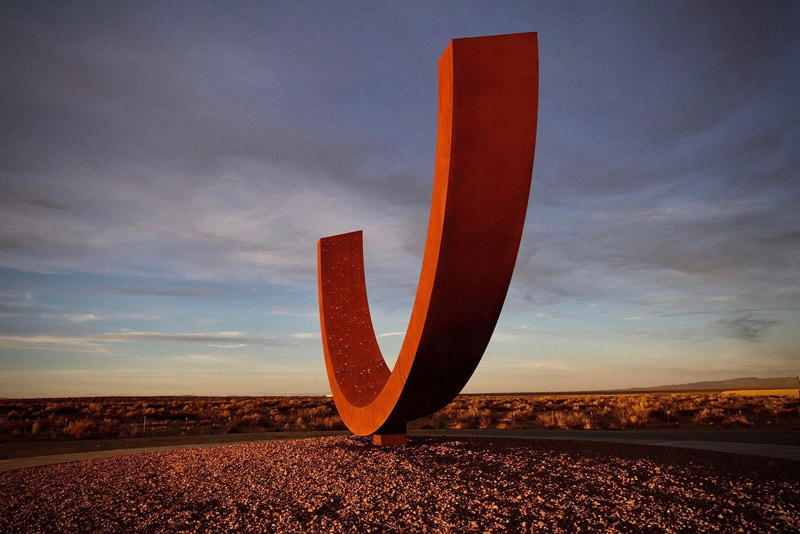 In 2015 he unveiled Genesis, a 24 by 40-foot steel and cast glass sculpture at Spaceport America in Truth or Consequences, NM, part of a commission he won from over 200 entries. It is an arc of COR-TEN steel that will continue to develop its patina of rust as its mirrored cast glass “stars” will mirror the stars above it as they appear at the summer solstice.
In 2015 he unveiled Genesis, a 24 by 40-foot steel and cast glass sculpture at Spaceport America in Truth or Consequences, NM, part of a commission he won from over 200 entries. It is an arc of COR-TEN steel that will continue to develop its patina of rust as its mirrored cast glass “stars” will mirror the stars above it as they appear at the summer solstice.
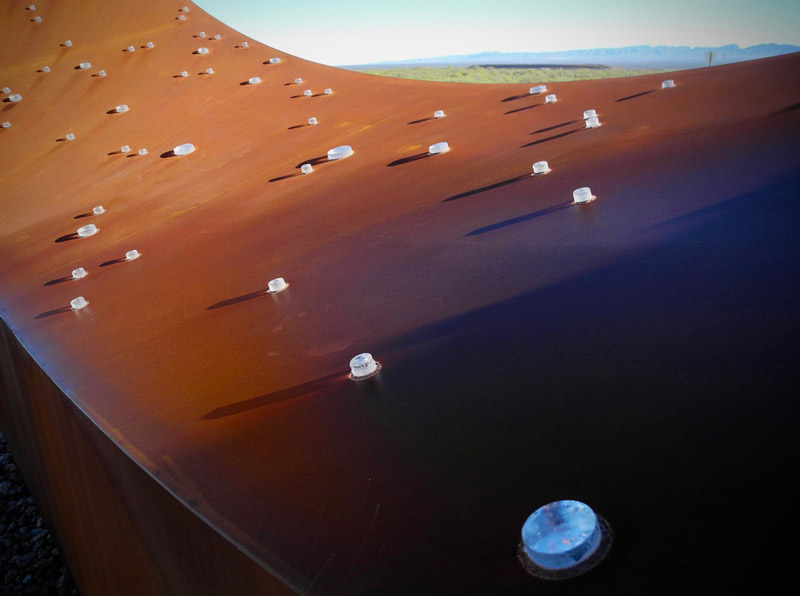
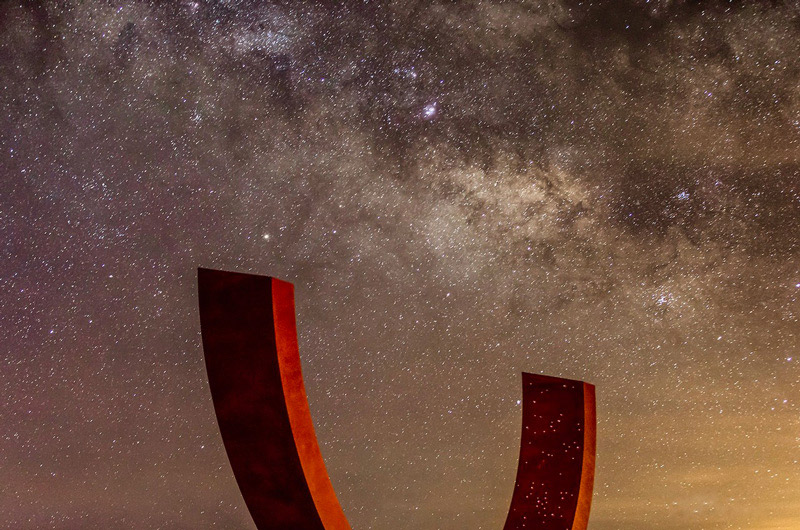 Otto’s weighty, substantial standing sculptures, his wall sculptures and his architectural installations have an unexpected lightness of being, life in the inanimate. As light animates Coming of Age and it reflects its environment, we’re given the opportunity to contemplate the complementary relationship of opposites.
Otto’s weighty, substantial standing sculptures, his wall sculptures and his architectural installations have an unexpected lightness of being, life in the inanimate. As light animates Coming of Age and it reflects its environment, we’re given the opportunity to contemplate the complementary relationship of opposites.
November 17, 2024
DANIEL SPRICK | Reclining Nude
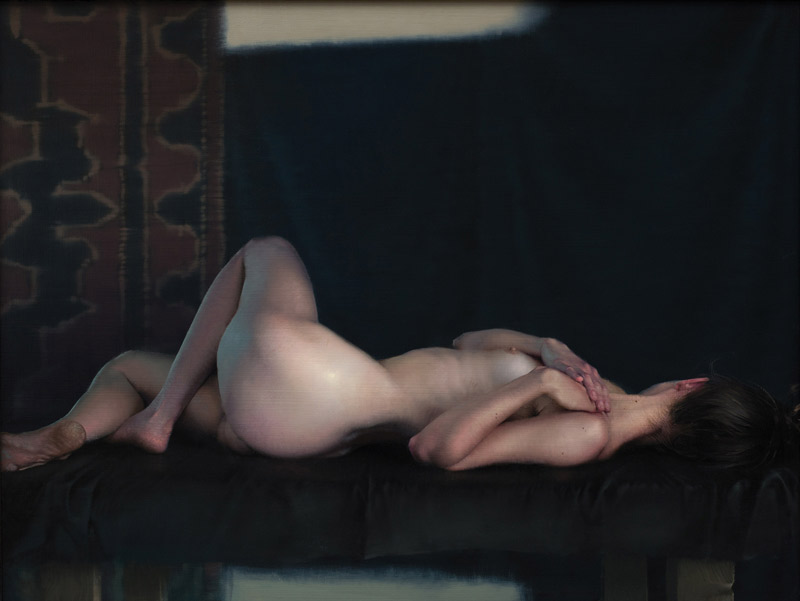
Some contemporary paintings have staying power. Daniel Sprick’s Reclining Nude, one of the finest figure paintings in the first quarter of this century, is one of them. I first saw it at Skotia Gallery which used to be around the corner from Evoke’s original location on Lincoln Avenue.
In 2009 when “American Art Collector” was preparing its fall issue on the nude, I pulled together a list of artists and their work to include in my introduction for the special section. I shared the list (which I had labeled “John’s Nekkid People”) with Kathrine whose immediate response was “You have to do a show!” In 2010, Reclining Nude was in Representing the Nude, the first of three exhibitions I curated at Evoke and it is now available at the gallery.
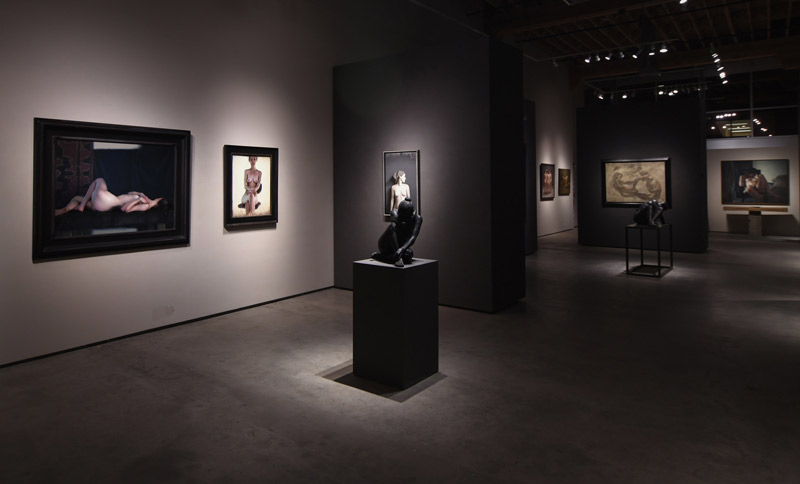 I wrote an article, Gravitas, in the January 2022 edition of “Evokation” and referred to Reclining Nude:
I wrote an article, Gravitas, in the January 2022 edition of “Evokation” and referred to Reclining Nude:
“In her poem Evidence, Mary Oliver writes:
As for the body, it is solid and strong and curious
and full of detail: it wants to polish itself; it
wants to love another body; it is the only vessel in
the world that can hold, in a mix of power and
sweetness: words, song, gesture, passion, ideas,
ingenuity, devotion, merriment, vanity, and virtue.
“Over the centuries, artists have used the human body as an object of beauty and as a means to express the non-corporeal ideas in Mary Oliver’s poem.
“Daniel Sprick refers to the representations of ‘a less obvious beauty’ in the paintings of Rembrandt and Courbet. ‘My subjects aren’t all beautiful,’ he acknowledges, ‘maybe 84% beautiful . . . There’s something marvelous about everyone.’
“When the painting was exhibited at Skotia, artists and non-artists clustered in front of it to appraise its surface and its depth, it’s lights and darks and its soft and hard edges. The model’s hip and left buttock are emphasized by her pose and by Dan’s use of light on her supple flesh. The light on her torso has a highlight that emphasizes her nipple. Her head is turned away, concealing her individuality and allowing us to look on her as the epitome of womanhood, formed by nature to bring life into the world and to nourish it. Despite her fecundity, in the lower left are her feet, the dried, cracked skin suggesting the transitory nature of her vitality.”
The surface of a Sprick painting is a constant push and pull between the reality of the image and the reality of the materials it is made of. If you get close enough to examine the surface you marvel at the technique that created the perfections of that watery eye or that glowing skin and then become aware of imperfections in the gessoed panel he has roughed up to better take the paint, and discover in a broad area of color a bit of dust or a broken bristle from his brush. He says that the pursuit of perfection can be a “thing that won’t set you free, ever.”
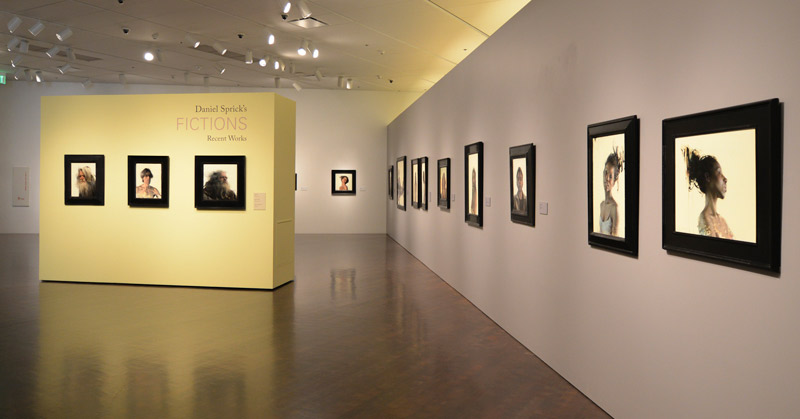 In 2014, the Denver Art Museum mounted the exhibition Daniel Sprick’s Fictions: Recent Work. At the time, Timothy J. Standring, now curator emeritus at the museum, commented, “Because he works in the vernacular of realism, viewers look for verisimilitude, as if his paintings were a mirror of reality—a reality you and I might encounter. The more we dwell on his paintings, the more we become aware that they are anything but a part of our world, and are, instead, poetic renditions of his own making.”
In 2014, the Denver Art Museum mounted the exhibition Daniel Sprick’s Fictions: Recent Work. At the time, Timothy J. Standring, now curator emeritus at the museum, commented, “Because he works in the vernacular of realism, viewers look for verisimilitude, as if his paintings were a mirror of reality—a reality you and I might encounter. The more we dwell on his paintings, the more we become aware that they are anything but a part of our world, and are, instead, poetic renditions of his own making.”
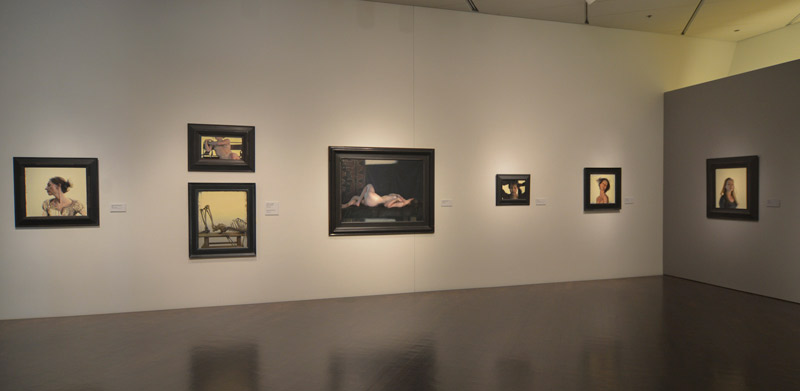 In 2015, Dan, Michael Bergt and I spent Thanksgiving at Michael’s sister’s home in Denver. We went to the Denver Art Museum where Dan was treated like royalty and then to the Clyfford Still Museum in a brilliant building designed by Brad Cloepfil of Allied Works Architecture. It was particularly thrilling for me since I had had dinner with Still and his wife several times when I worked at the then Albright-Knox Art Gallery in Buffalo.
In 2015, Dan, Michael Bergt and I spent Thanksgiving at Michael’s sister’s home in Denver. We went to the Denver Art Museum where Dan was treated like royalty and then to the Clyfford Still Museum in a brilliant building designed by Brad Cloepfil of Allied Works Architecture. It was particularly thrilling for me since I had had dinner with Still and his wife several times when I worked at the then Albright-Knox Art Gallery in Buffalo.
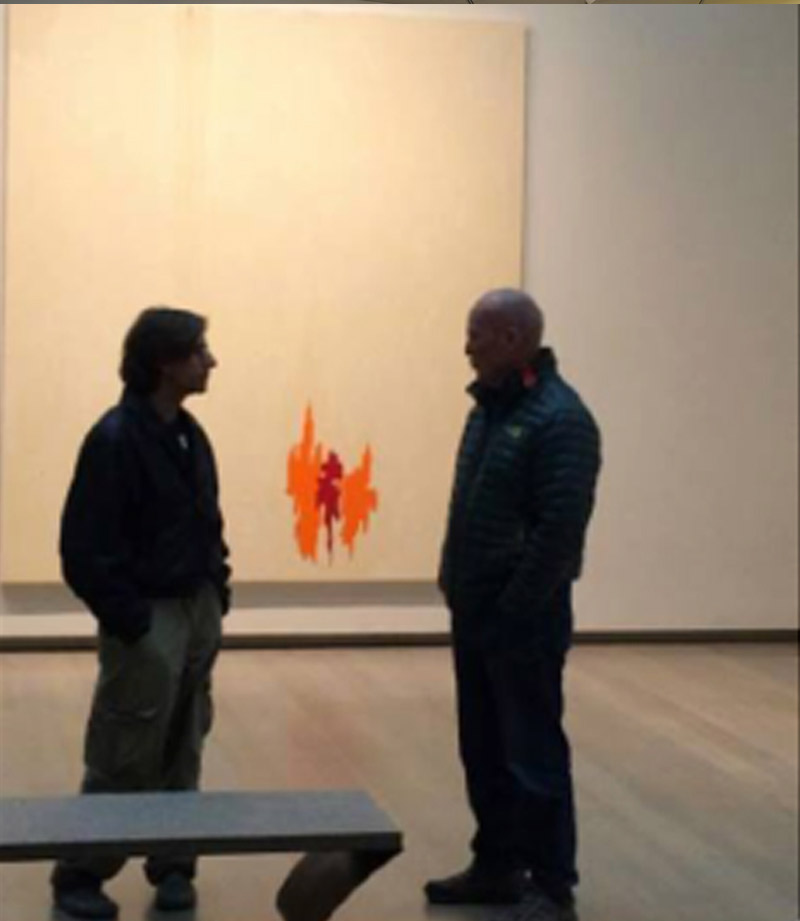 Over the weekend, Dan, Michael and I had sometimes intense conversations about art. Michael caught Dan and me in one of those exchanges, as if we had ignited a fire in Still’s painting PHX-27, 1953.
Over the weekend, Dan, Michael and I had sometimes intense conversations about art. Michael caught Dan and me in one of those exchanges, as if we had ignited a fire in Still’s painting PHX-27, 1953.
Earlier this year, the Madden Museum of Art of the University of Denver mounted the exhibition, Fleeting Presence: The Liminal Art of Daniel Sprick. It was the result of the combined efforts of 15 graduate and undergraduate students at the university’s School of Art & Art History who had the extraordinary opportunity to work with local curators and art professionals, as well as the artist himself. They assembled 54 works from over 4 decades, representing the breadth of Dan’s career.
The student curators of the section on portraiture wrote that his portraits “explore duality and ask questions of life, emotion and time… Sprick’s work has an ephemeral quality that highlights the temporary nature of existence. His intentional use of grays and blues instill an overarching sense of melancholy, and his utilization of light instills a ghostly and transient feeling in his portraits… Through depictions of himself and others, he brings together the inner and outer worlds. He explores the tenuous space between life and death and demonstrates the constant slippage between presence and absence. Sprick pairs these concepts and places us in a new world outside our own.”
He comments, “I mostly see the world as a pretty good place. I guess that’s what I want to come though my work—something life affirming or some sense of well being, some optimism, some hope—even though I load it with portents of mortality and so forth. You know, I haven’t forgotten that those things exist, and I don’t think that the world is just a field of puppies romping in the daisies or anything, but it’s a good place, I just realize that there’s razor blades and cigarette butts, too.”
November 10, 2024
DAVID T. ALEXANDER | My Head Remains in the Clouds as the Morning Starts
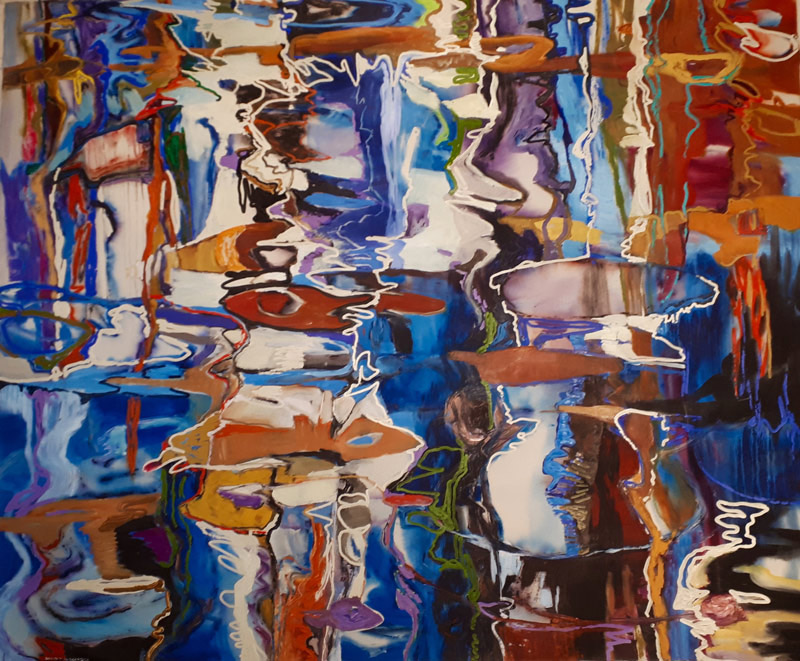
Reflecting on looking at and seeing David Alexander’s paintings, the conjunction of abstraction and representation arises. From time to time, people look at his paintings of reflections on water, declare them abstract and walk away.
On one occasion, he recounts, “I did one exhibition where I had about eight or nine large water paintings. People would walk in and say, ‘Oh, that's so abstract!’ I wanted to argue, but they're there for three minutes, what are we going to talk about that would make any sense? So the next day I took one painting down and I took another out of storage that had just a tiny strip of land across the top and I put it right in the middle so that when everybody walked in they got it right away.”
My first question to him was, “Let’s dive right in. Where did the reflections come from?”
Dave’s father was a tugboat operator on the coast of British Columbia for 51 years. “When I was a teenager,” he says, “I worked with him in the summer as a deckhand. Tugboats go slow, dragging lots of logs and barges. I had a lot of idle time between destinations and I was always drawing and painting. Looking at the water is mesmerizing. It's like sitting on the beach. First you watch the sunset and then you see things in the water. In summertime you see that phosphorescence on the waves. It fascinated me.
“We lived in Steveston, part of Richmond, BC, a Japanese fishing village. We moved from Vancouver to there and there was water everywhere around us. So it was a natural thing to just look at it. I had been making art before that and I started drawing tugboats. But then I started looking at the water. I would look at Egon Schiele’s paintings and say, ‘Whoa, look at the reflection that guy did.’”
Dave’s painting, My Head Remains in the Clouds as the Morning Starts, a 78" x 96”, acrylic on canvas, suggests the scene it depicts receding into the distance rather than being a static abstract painting. Its unexpected vitality brings to mind several observations by Schiele, who’s paintings of reflections on water had inspired to Dave to begin painting them.
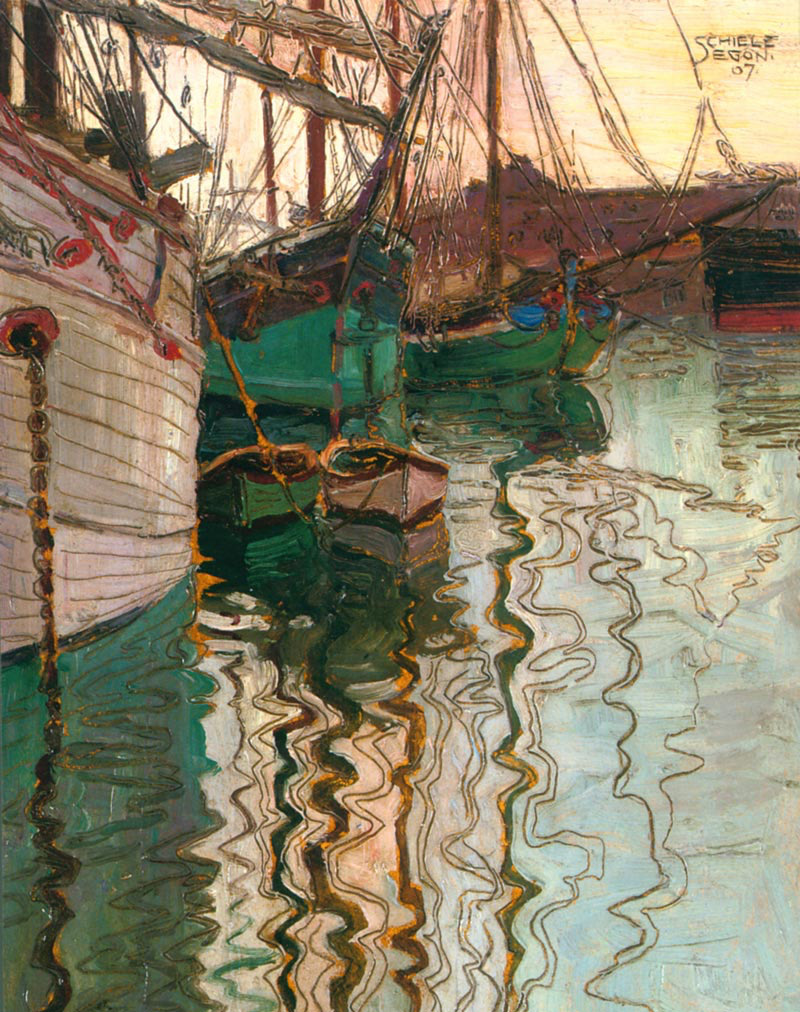 Schiele wrote, “At present, I am mainly observing the physical motion of mountains, water, trees and flowers. One is everywhere reminded of similar movements in the human body, of similar impulses of joy and suffering in plants...” And on the body, he wrote, “Bodies have their own light which they consume to live: they burn, they are not lit from the outside.”
Schiele wrote, “At present, I am mainly observing the physical motion of mountains, water, trees and flowers. One is everywhere reminded of similar movements in the human body, of similar impulses of joy and suffering in plants...” And on the body, he wrote, “Bodies have their own light which they consume to live: they burn, they are not lit from the outside.”
The “physical motion of mountains, water” and the fire of his passion inspires Dave’s own physical motion in applying paint. The abstract expressionists, whose work he first saw in New York, brought attention to the surface of their canvases with their gestural application of viscous paint. He showed me several of his well-used brushes—one of which was an eight-inch wallpaper paste brush cut in half. He commented, “I remember doing drawings of just water. But I was frustrated. I just didn't know what the line was about and then it became about the paint. Drawing came back into it and then mark making with those brushes became synonymous with what needs to be done with the paint. It was a natural thing for me to do.
“I'll use my fingers, scrapers, brushes, it doesn't matter. A tennis ball works sometimes. Just roll it across and you got a line you can't paint.”
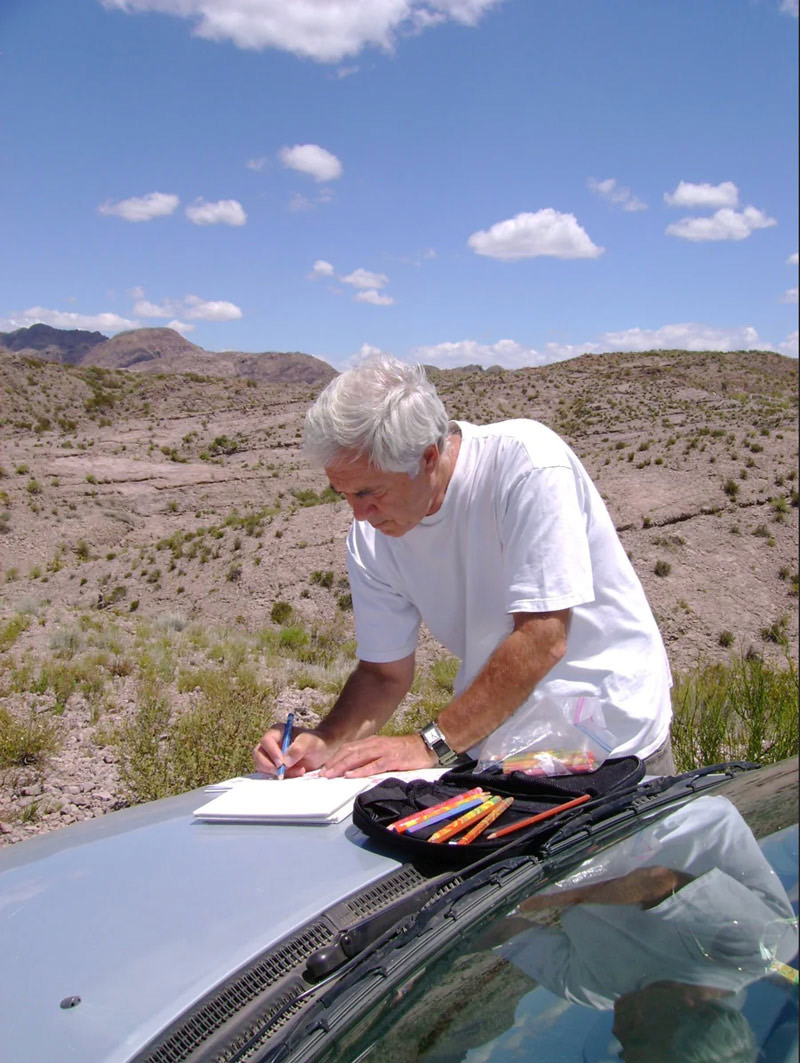 The vital, vibrant application of paint we see in his “wet” series also enlivens his paintings of the desert, his “dry” series.
The vital, vibrant application of paint we see in his “wet” series also enlivens his paintings of the desert, his “dry” series.
The vastness of the New Mexico landscape inspires him as much as a seascape. He says, “I instantly fell in love with the desert. I don’t know why, but I feel extremely comfortable there – well, not comfortable because it’s not a comfortable place in the desert physically – but visually I find it astounding.”
He sketches in the desert, capturing “what the land feels like.” Back in the studio, he begins painting and, eventually, lets the painting take over. He says, “It gives me great pleasure to see where I was and if I’ve captured that feeling of the place I was in.”
In a statement for his 2015 exhibition, Land We Have Not Synthesized, he wrote, “For those who love to paint, who can’t and won’t quit, painting continues to evolve in curious ways. A good painting takes time to be understood--it avoids being appreciated only in an instant or contained on-screen as a sum of bytes. This refusal by the painting allows the viewer to consider it over time, coming to understand more in every view.”
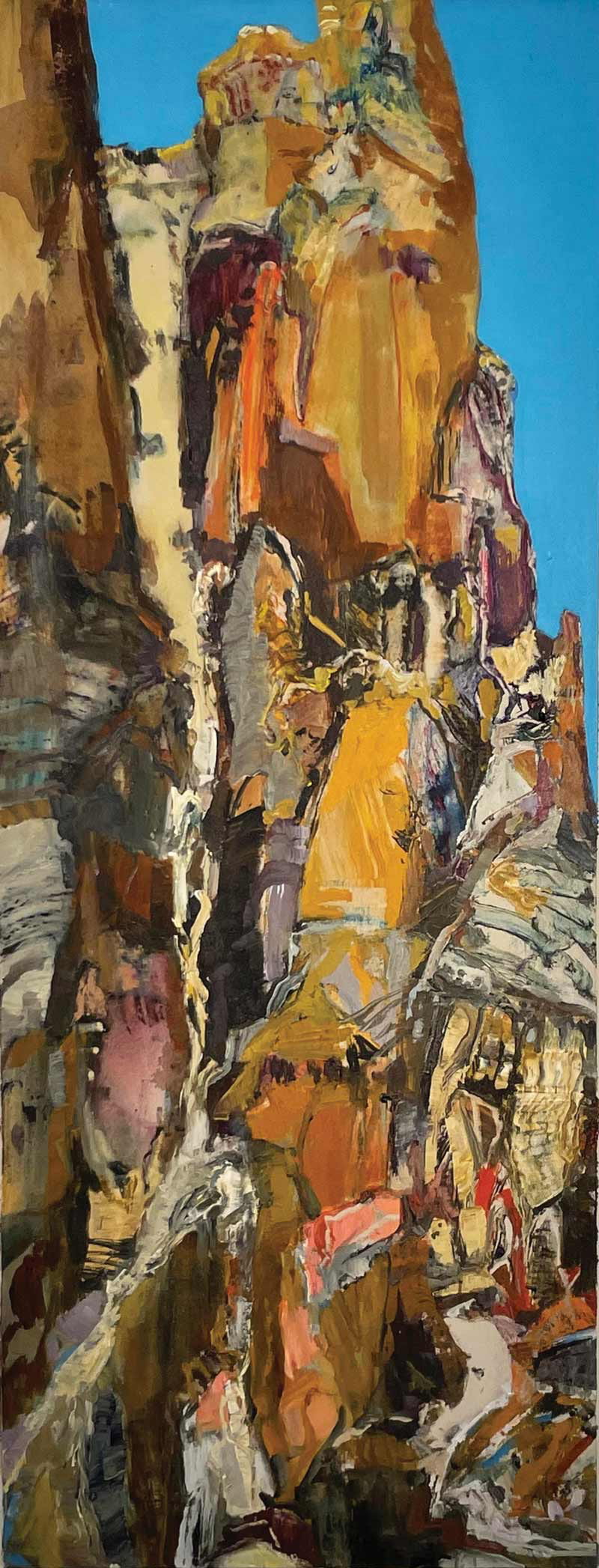 Acutely aware of the “impermanence, transience and vulnerability of land” he titled one of his paintings in his current Evoke exhibition, Almost a Stack, Erosion Wins Again. The vertical stone spire is cropped at the top and silhouetted against a small patch of blue sky.
Acutely aware of the “impermanence, transience and vulnerability of land” he titled one of his paintings in his current Evoke exhibition, Almost a Stack, Erosion Wins Again. The vertical stone spire is cropped at the top and silhouetted against a small patch of blue sky.
“In every painting here the blue is for hope,” he says. “Every blue is different. I've seen all those blues everywhere.
“The form is cut off. There’s no top to it. That bugs some people. But it's psychological. Your brain finishes it.”
The complex, abstract surfaces of his paintings and their often only slight suggestions of representation were described nicely by a writer in the Canadian newspaper, “The Globe and Mail”. Gary Michael Dault wrote that Dave is an artist who could “simultaneously make convincing the reality of the scene before him…and make manifest, at the same time, the highly abstract dazzle of the visual information that makes up what we see”.
November 3, 2024
ANDREW SHEARS | Migration
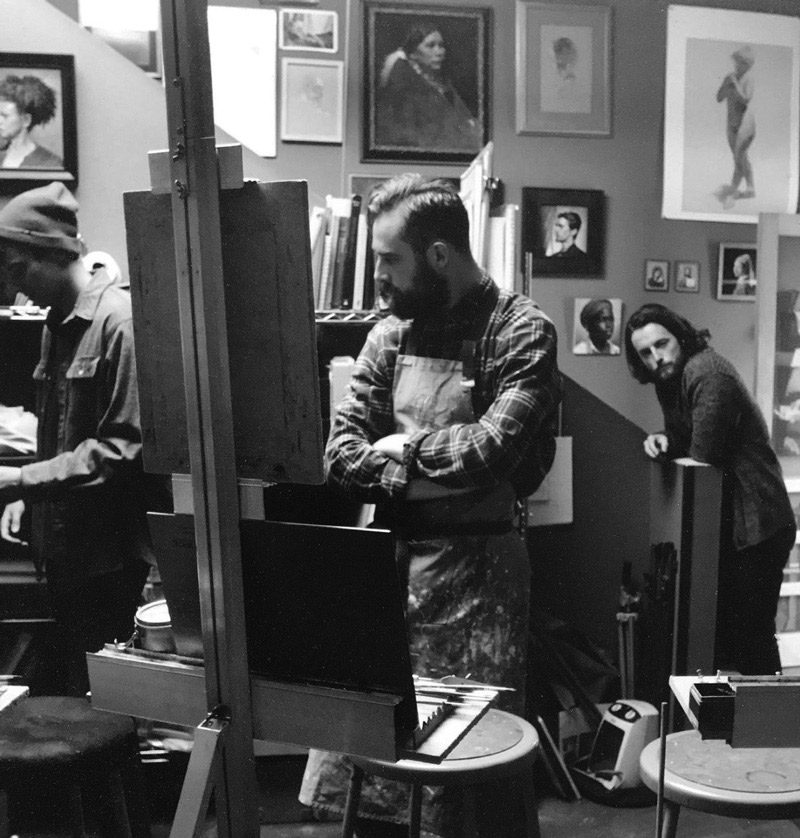
Andrew Shears grew up in Colorado and spent time in the backcountry backpacking with his father. “We would climb peaks but mostly just backpack through the landscape. It was more of a spiritual approach to the outdoors than technical climbing or conquering a mountain. I remember throwing rocks down a huge cliff when I was really young and my father just posed the question ‘How long do you think that rock was there before you tossed it down a cliff and it broke into1000 pieces?’ He didn't need to say anything else.
“Later, I went to the Outward Bound School--30 days in the San Juans. The whole idea is ‘leave no trace’. It's a much more spiritual kind of pursuit than, for example, those that are more technically driven.”
His reverence and awe of nature comes from those experiences and is manifested in his drawings and paintings.
“My father is an architect,” he relates, “I grew up learning about the importance of drawing. He would often show me stuff through drawing—drawing instead of speaking. It was so powerful.
“I was driving up through Colorado with my mom maybe two Thanksgivings ago. We were on E-470 and all of a sudden we looked up and there were millions of birds in the sky. It was absolutely crazy. It looked like Hitchcock’s movie “The Birds”. But it was also just so beautiful. People were pulling over. There was kind of an apocalyptic, orange/pink sky behind it all--very subtle. I had never seen anything like that. I was just arrested by the whole thing, so I decided I was going to make a painting someday.”
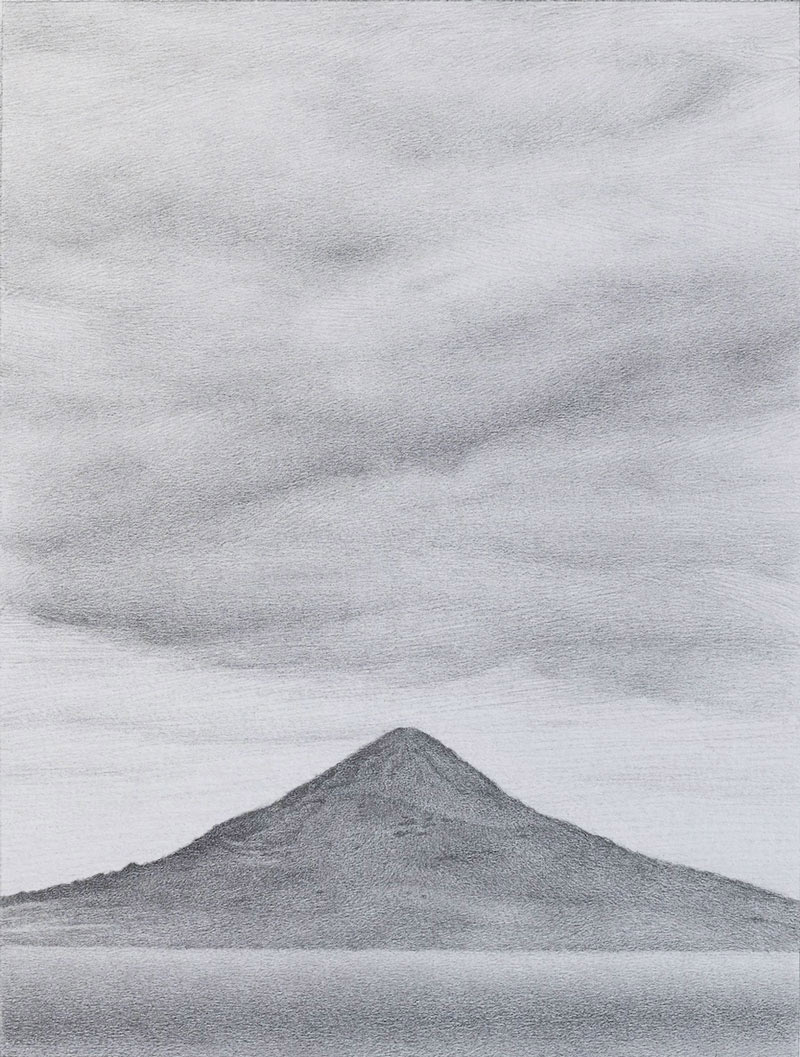 The painting may appear in his next solo exhibition at Evoke in November, 2025. In the meantime, he has done a drawing, Migration, which appeared in this year’s Summer Salon at the gallery. When I walked into the gallery, Andrew’s four, small, 8 x 6” drawings grabbed my attention from the larger, colorful works throughout the exhibition.
The painting may appear in his next solo exhibition at Evoke in November, 2025. In the meantime, he has done a drawing, Migration, which appeared in this year’s Summer Salon at the gallery. When I walked into the gallery, Andrew’s four, small, 8 x 6” drawings grabbed my attention from the larger, colorful works throughout the exhibition.
I’ve always been partial to drawings, I think because of their immediacy and their subtlety. I admire them even more after having spent a summer in Paris during graduate school studying architectural drawing and realizing that I have barely passable drawing skills.
Andrew’s drawings have the immediacy, subtlety and skill that I admire and relate comfortably and logically to his paintings—suggesting, perhaps, new directions in the future.
Following up on last week’s email about my misperception of the size of the figure in Wade Reynold’s Madonna and Nude, I told Andrew that I liked that the birds in Migration are flying toward the sun. He replied, “That's interesting. I had them going to the right and then I looked at it one day and it felt like they were going to the left.
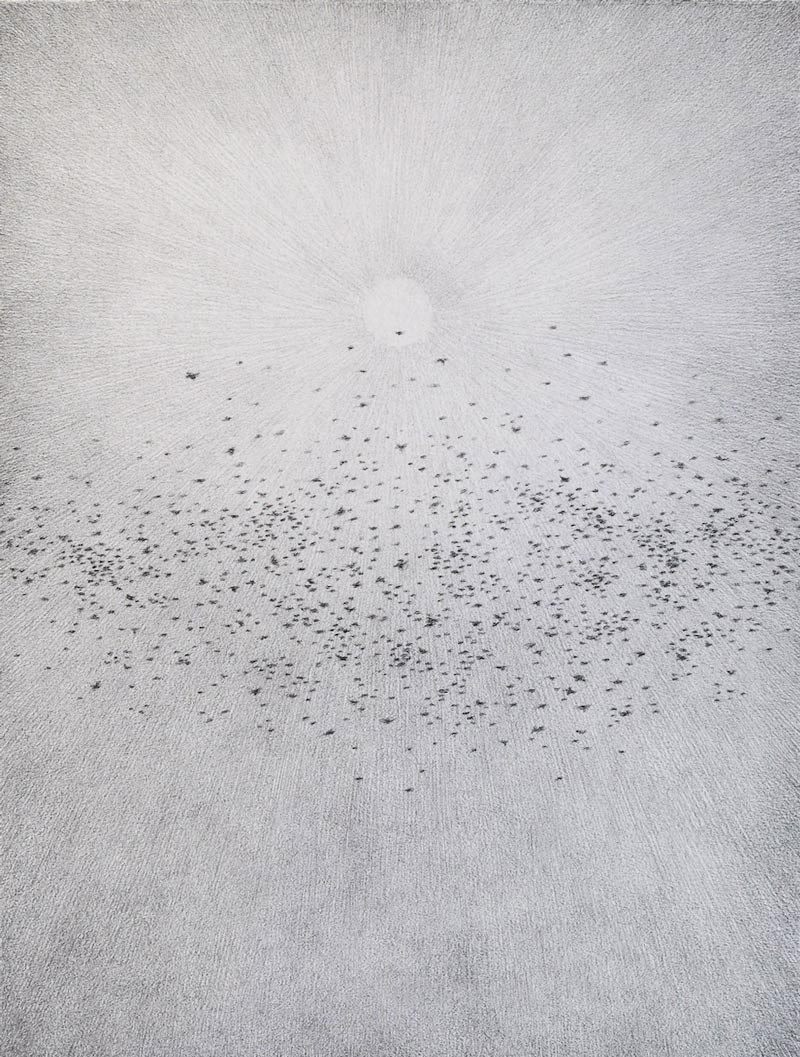 “It’s like when you’re with a group of people lying down looking at a cloud in the sky, and everyone sees something different. Someone says I see this and you can just switch your perspective and see what they're seeing.
“It’s like when you’re with a group of people lying down looking at a cloud in the sky, and everyone sees something different. Someone says I see this and you can just switch your perspective and see what they're seeing.
“I've been thinking more about paintings as objects. Some of my favorite paintings are by abstract expressionists.
“I make realistic pictures or use realistic imagery, which just comes naturally to me. It's my natural sensibility, I think, to draw realistically. But, I love looking at things that function both abstractly and representationally and you can just kind of flip your perspective. That's really appealing to me. The migration idea felt like a perfect opportunity to start doing that. The nature of painting birds from so far away-- you can't just paint every little detail, obviously, so painting those objects lends towards abstraction and this over all pattern of little dots restricted within a rectangle.”
A year from now, we’ll see where his thinking on abstraction and representation has taken him in his drawings and paintings, especially in scale and color.
Andrew first went to journalism school to study advertising. He decided to take some time off and when he returned, he changed course and applied to and was accepted by Pratt Institute in Brooklyn, NY, where he received his BFA degree in 2017. He then studied drawing at Grand Central Atelier for a year before coming to Santa Fe.
“I was reading Cormac McCarthy,” he explains, “and I was listening to a lot of bluegrass music. I was thinking about the west.”
In 2019, he came to Santa Fe to study at the Ryder Studio and is still here today.
After reading Cormac McCarthy, he read “Portrait of the Artist as a Young Man” by James Joyce. “When I learned about Joyce, I started to think about his idea of ‘aesthetic arrest’. I thought, well, what could possibly be more important in our life than that that feeling.”
In an essay on Andrew and his work, his friend Susan Guevara cited Joseph Campbell who commented on Joyce’s concept, “The aesthetic experience is a simple beheading of the object . . . You experience a radiance. You are held in aesthetic arrest… When we are in the presence of great beauty our minds go still.”
“I started to think about my time when I was younger,” Andrew relates, “climbing with my dad. We used to do that a lot. I began thinking about what it feels like to stand in front of a massive peak or being in a huge thunderstorm where you're just suspended out of time. You're just totally arrested by it. I simply can't think of anything more important than trying to evoke that feeling in my work. I don't think I've ever achieved it, but it's something to strive for. With my next show at Evoke, I'm going to make some big paintings. I think it's more likely to happen at that scale.
“I love the process of painting but, I think, ultimately, I want people to look at something and have an experience. There’s something so compelling about creating an image that could provide an experience for someone. Some of the most powerful moments in my life have been in front of paintings.
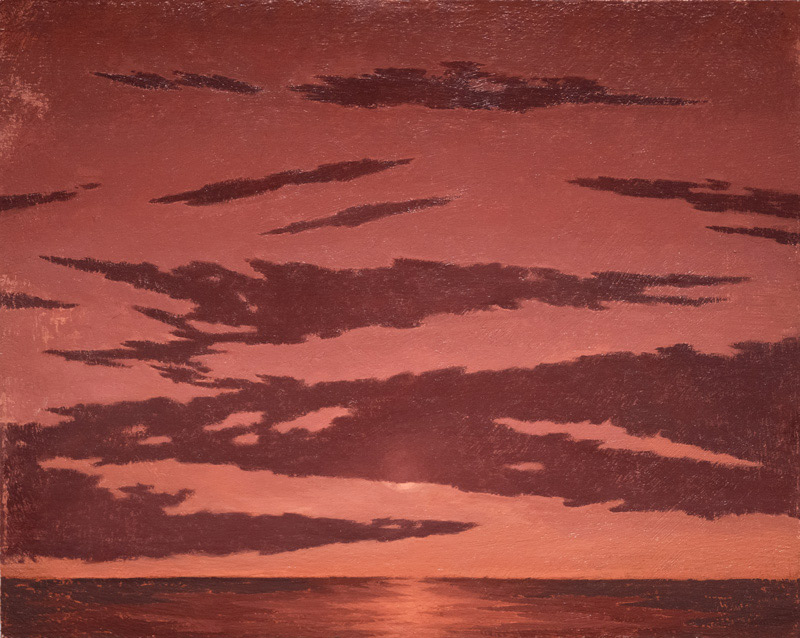
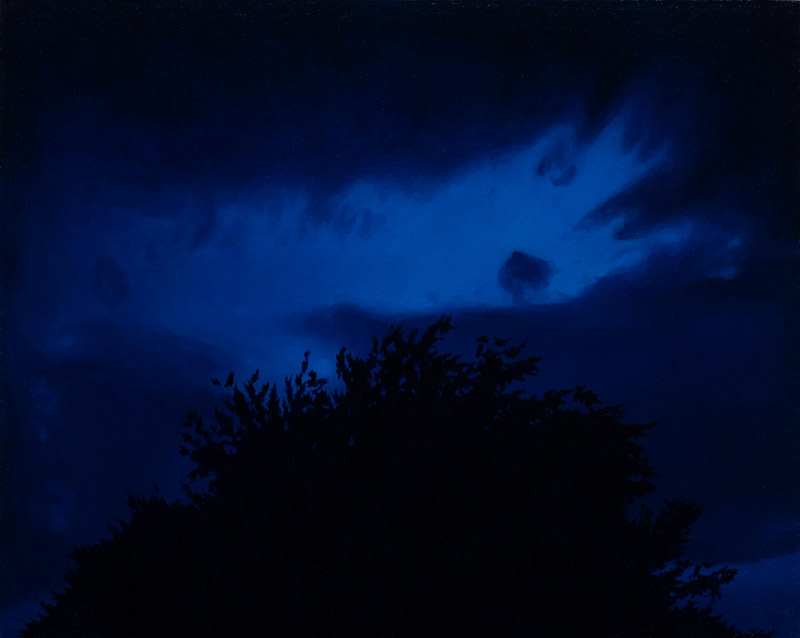
“It's the nature of painting. You make it to be seen, and it has to be seen. Otherwise, what's the point? What's its function? I absolutely love painting, but it can be really hard.”
October 20, 2024
JAVIER MARÍN | Cabeza Hombre II
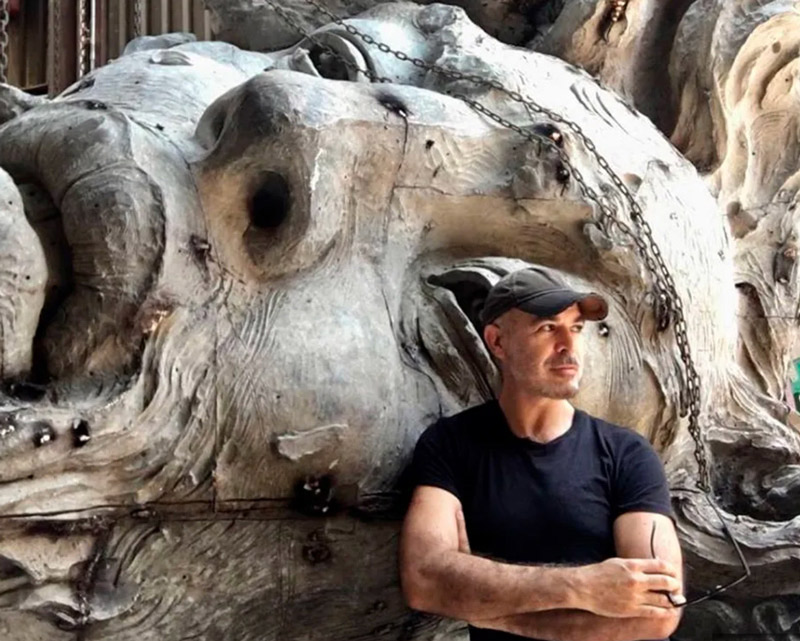
In 1996/97, I included Por Ti, a ¾-length, 67-inch, male nude clay sculpture by Javier Marín in the exhibition Re-presenting Representation III at the Arnot Art Museum. It arrived in several sections which we carefully stacked one on top of the other. When I asked the lender, who lived in Los Angeles, what he did in an earthquake he said, “We run and hold on to it!” It commanded the two-story gallery.
In 2001, I included a large clay Cabeza with Medusa-like hair in the exhibition Re-presenting Representation at the Corning Gallery downstairs from the Steuben showroom on Madison Avenue in Manhattan. We installed it in front of a wall we had painted Pompeiian Red at the bottom of the flight of glass stairs. It looked spectacular.
Both pieces were in clay from Oaxaca and Zacatecas--traditional, precolonial sources. The clays and clay slips gave each piece a richly mottled warm orange and red color. The permanently assembled parts of Por Ti were held together by metal staples. The sculpture came with a box of staples which we placed in their corresponding holes once we had stacked the sections.
I was attracted by the passion of the sculptures—in the pose and facial expression of Por Ti and in the ferocious intensity of the Cabeza. But Marín’s intense modeling of the clay was equally captivating. Since the figures were fired clay, I knew that he had moved his tools right there and there’s where he moved the clay around with his fingers.
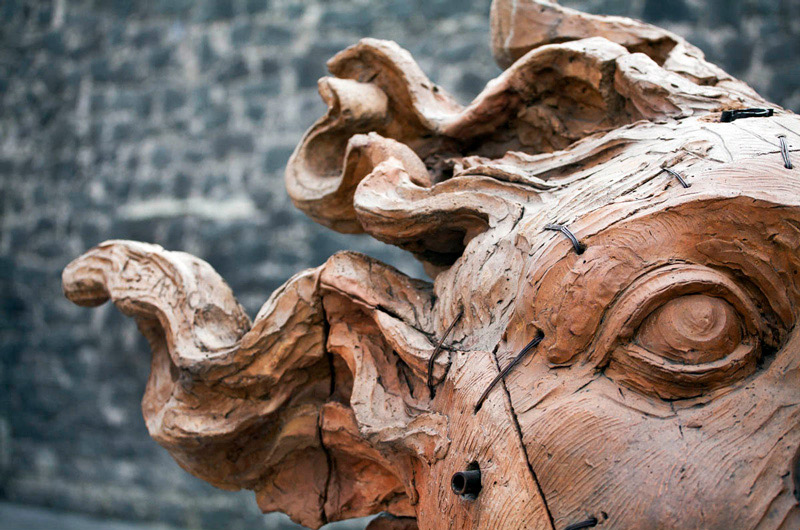 Passion was on my mind, it seems, when I wrote the text for the Arnot catalogue. “Preconceptions of the Latin temperament and unbridled passion confront the viewer of the sculpture of Javier Marín. Teresa del Conde, director of the Museo de Arte Moderno in Mexico City, has written of Marín’s work: ‘Most of the sculptures seem to be affected by psychomachia—that is, they suggest a battle between good, seen as pleasure, and evil, seen as suffering. Pleasure is sensual and in many cases, sexual, even orgiastic. It is accompanied though by the warning of the finiteness of such pleasure and of a concomitant suffering.’ If the viewer’s preconception is that pleasure is evil and suffering, good, another level of interpretation or a mental shutdown occurs. Modeled traditionally in clay, the sculptures are assembled as fragments, the fragments themselves combining to create only the fragment of a figure. They remind the viewer of the modeling of man from clay by the biblical god, the fragmentation brought about by The Fall, and the captivating attraction to the erotic, dark unknown we find in the works of Gabriel García Márquez.”
Passion was on my mind, it seems, when I wrote the text for the Arnot catalogue. “Preconceptions of the Latin temperament and unbridled passion confront the viewer of the sculpture of Javier Marín. Teresa del Conde, director of the Museo de Arte Moderno in Mexico City, has written of Marín’s work: ‘Most of the sculptures seem to be affected by psychomachia—that is, they suggest a battle between good, seen as pleasure, and evil, seen as suffering. Pleasure is sensual and in many cases, sexual, even orgiastic. It is accompanied though by the warning of the finiteness of such pleasure and of a concomitant suffering.’ If the viewer’s preconception is that pleasure is evil and suffering, good, another level of interpretation or a mental shutdown occurs. Modeled traditionally in clay, the sculptures are assembled as fragments, the fragments themselves combining to create only the fragment of a figure. They remind the viewer of the modeling of man from clay by the biblical god, the fragmentation brought about by The Fall, and the captivating attraction to the erotic, dark unknown we find in the works of Gabriel García Márquez.”
As I wander into octogenarianhood I’m reminded of a different observation by Márquez: “It is not true that people stop pursuing dreams because they grow old, they grow old because they stop pursuing dreams.”
Marín was 34 when I first showed his work. He has since gone on to cast his clay sculptures in bronze and polyester resin as well as to produce multi-colored sculptures by polymer 3D printing. The quality of his casts, fortunately, captures the immediacy of his mark making in clay.
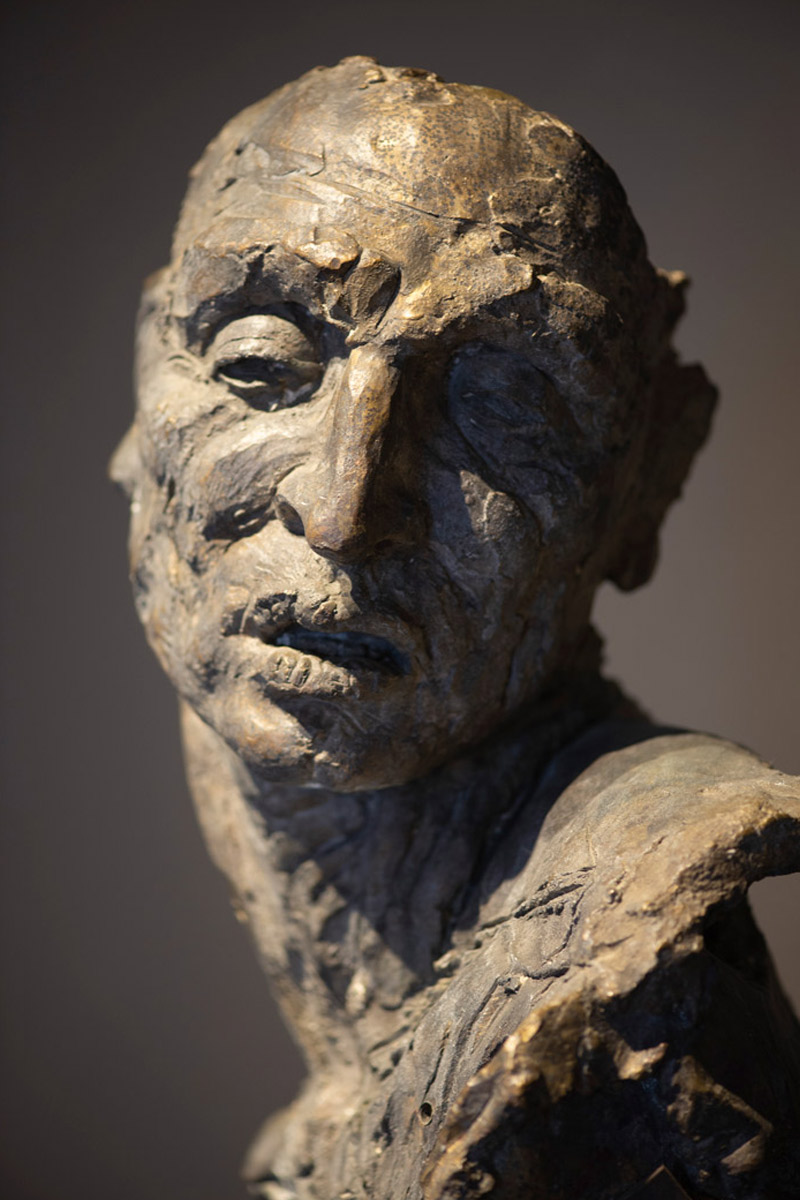 Some years ago, when Evoke was being born at its Lincoln Avenue location, I stopped in to say “Hi” to Kathrine. She brought out a catalogue of Marín’s sculptures and asked, “Do you know this artist?” I replied in my characteristically understated way, “JAVIER MARÍN?!” I knew then that she and I were on the same wavelength. Scary, but true.
Some years ago, when Evoke was being born at its Lincoln Avenue location, I stopped in to say “Hi” to Kathrine. She brought out a catalogue of Marín’s sculptures and asked, “Do you know this artist?” I replied in my characteristically understated way, “JAVIER MARÍN?!” I knew then that she and I were on the same wavelength. Scary, but true.
Since then, a number of his gorgeous bronze and resin sculptures have been shown at the gallery. The bronze sculpture, Cabeza Hombre II, is now on view and is an example of the passion and immediacy I admired in his clay sculptures nearly 30 years ago despite its comparatively diminutive size.
The passionate art of the Baroque period broke from the almost impossible ideals and beauty of the Renaissance.
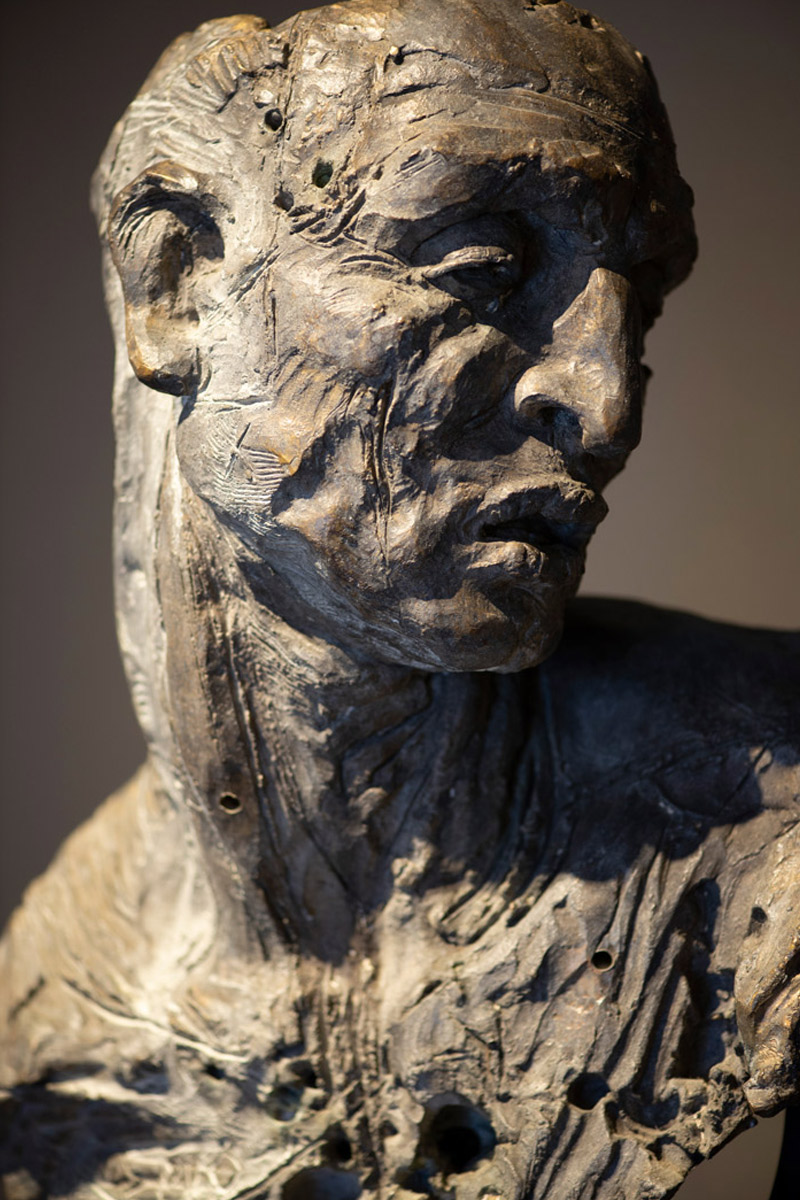 Cabeza Hombre II embodies that passion and the beauty of the not-ideal. We see the intense emotion in the downcast eyes, the expressive lips and the twist of the body of this hombre. We see into him through holes in his chest and the back of his head. The artist’s passion is visible in the marks and movements of his modeling. Just as the clay in the early pieces is expressive of itself in its color variations, the bronze is reused, “made out of all the junk you can imagine,” he says. “The result is a bronze with a very stained skin, really dirty… I want to respect that, if it’s stained it’s for some reason. Plus, it is very beautiful.”
Cabeza Hombre II embodies that passion and the beauty of the not-ideal. We see the intense emotion in the downcast eyes, the expressive lips and the twist of the body of this hombre. We see into him through holes in his chest and the back of his head. The artist’s passion is visible in the marks and movements of his modeling. Just as the clay in the early pieces is expressive of itself in its color variations, the bronze is reused, “made out of all the junk you can imagine,” he says. “The result is a bronze with a very stained skin, really dirty… I want to respect that, if it’s stained it’s for some reason. Plus, it is very beautiful.”
The piece makes us aware of the process of its making, a process that reflects our own making and our remaking as well as our pursuing our dreams.
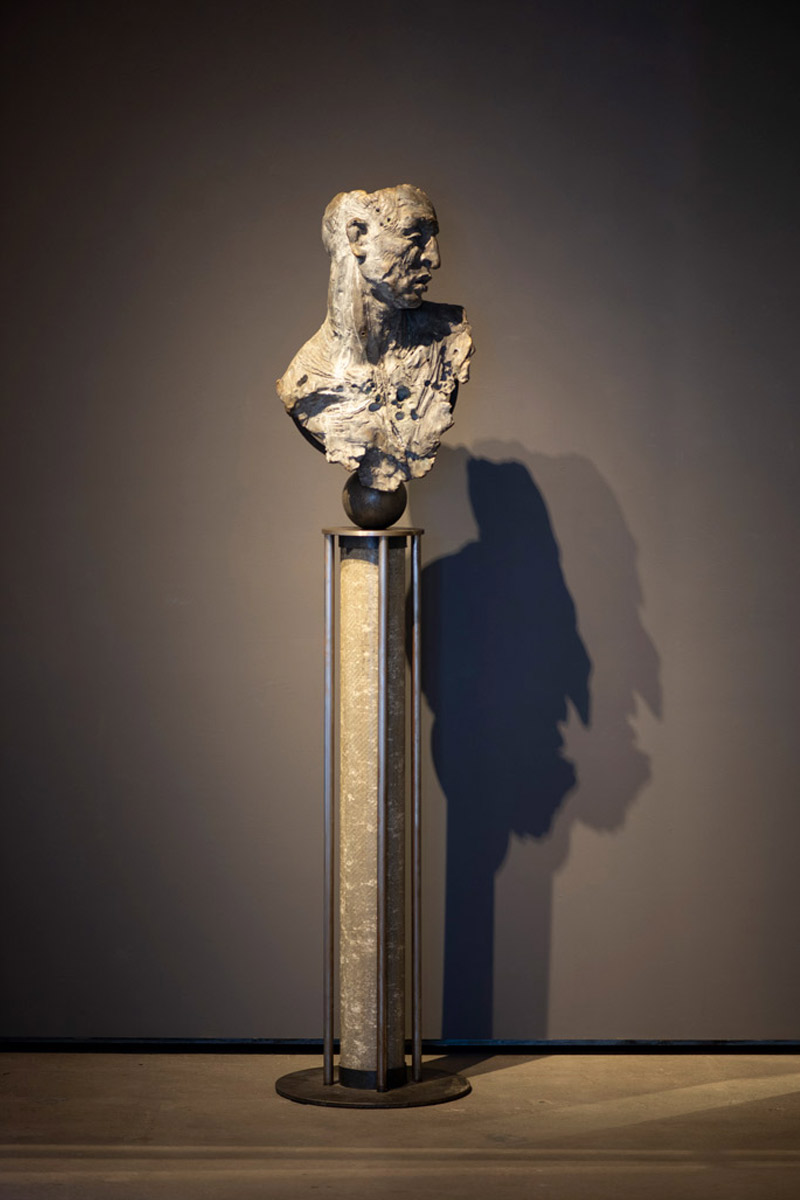 Marín has widely broadened his scope since I first showed his work in 1996. My favorite is the spectacular Retablo, the composition-winning multi-figure altarpiece for, appropriately, the Cathedral Basilica of Zacatecas, Mexico.
Marín has widely broadened his scope since I first showed his work in 1996. My favorite is the spectacular Retablo, the composition-winning multi-figure altarpiece for, appropriately, the Cathedral Basilica of Zacatecas, Mexico.
In 2013 he created the Fundación Javier Marín. The foundation states, “We harness the creative nature of human beings as a tool for social development. We build programs that support the professionalization of artists, artisans, designers and different actors involved in cultural activity.”
October 13, 2024
KRISTINE POOLE | Duende
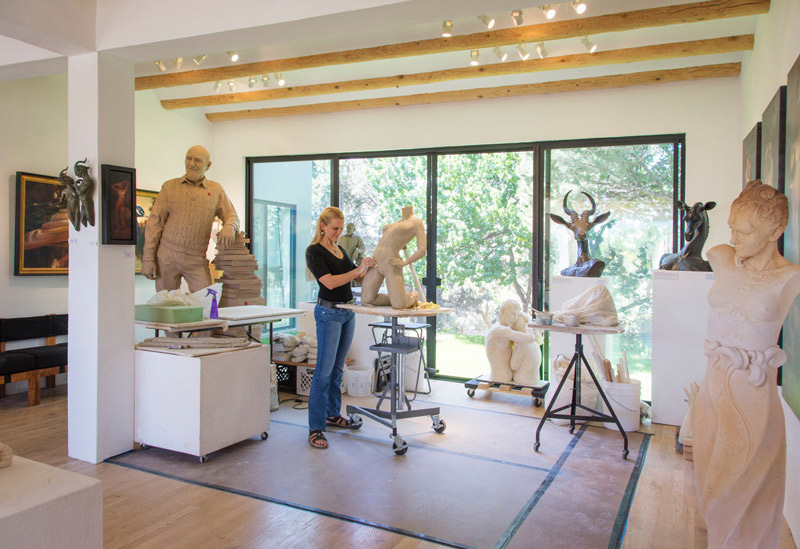
Kristine Poole’s mother saved a paper she wrote when she was 9 and in the fourth grade. I’ve always found that fourth graders are full of curiosity and willing to express their ideas, not caring what their peers think. The fourth grader, Kristine, kept that curiosity and confidence, and exhibits it in her sculpture today.
“I wrote that I wanted to be a professional artist,” she relates. “I wanted to know what that was like. I was also concerned about saving animals. We had tons of animals as kids—dogs and cats and birds and hamsters. The third thing was I wanted to know why there was war—why humankind thought they had to do that, what the purpose of it was—although my generation grew up in probably the most peaceful time ever in human history.
“I think there’s a thread that goes through your life. I think most of us forget what we thought about as a child, that kind of very simple thinking. We get involved in school and learning and doing other things. I think my concern with the relationship between humans and animals has been part of me forever. I think it was a natural occurrence that it would start to show up in my work. Hopefully it will continue.
“I grew up in a very religious, fundamentalist family. We were not allowed to dance or wear makeup or earrings or drink alcohol. I’ve been thinking about that early resistance in my life and thought of a quote from Henry Ford who wrote, “When everything seems to be going against you, remember that the airplane takes off against the wind, not with it.
“When I was in high school, I was always drawing dancers because I thought they were such beautiful creatures, the way they moved. I had done a picture of a beautiful dancer, and I was in a dark hallway, kind of peeking around, looking.
“I think it was the beginning of a lifelong fascination with the human form and what the human form can do and how we express ourselves with it. Dance is all about body language. Body language is universally powerful. It communicates across cultures, often impacting us with a visceral intensity we find hard to explain. Verbal and written communication on the other hand, have the potential to express subtle nuances of thought and ideas. In skilled hands, words can shift perspectives, create realities and change the course of civilizations.
“In school, I also made little busts of people. I think we had a reasonable art program in the public school I went to. I was pretty shy and I think the way that I always processed the world was different. The way I experience things is very 3-dimensional. I always found the linear nature of words challenging to a point where it was difficult. To take all of your thoughts and distill them into a linear sentence is a bit of a miracle.
“Following my passion in life, my path has swerved all over the place. But I've never questioned that if I felt a fascination towards something, I would go and do it. I remembered that J.R.R. Tolkien said, ‘Not all those who wander are lost.’”
Kristine went on to college and received her BFA (summa cum laude) in ceramic sculpture from Northern Michigan University. “My senior exhibit statement was all about questions,” she relates. “Most of the time, I would think of somebody graduating with a degree in art as thinking they had solved a certain amount of things. Everything I had to say was about questions. I think my path has been more about following where these questions lead.”
Her imagined difficulty with linear thinking has not got in the way of her reading and using language—even incorporating words into (or onto) her sculpture—and remembering the highlights of what she has read and incorporating the ideas into her life and her work.
She even reminded me of a statement I had written in an essay for Decadence, an exhibition I had curated for Evoke in 2011. Kathrine and I had wrestled (figuratively) with the title and what it meant. I eventually decided, “Perhaps decadence is simply romping with abandon through the vastness of life.” Kristine took that to heart as supporting her passion for her life and her work.
Along the way, she discovered ballroom dancing, learning how the body moves and more about “body language”. Dance became one of those passions she followed and, in the process, she met Colin Poole whom she would marry and with whom she often collaborates making sculpture. Before Kristine and I retired to the patio of their home studio and gallery to talk about her work, Colin whipped up delicious crumpets for a treat. I topped mine with apricot/citrus preserves made from an apricot tree in their garden.
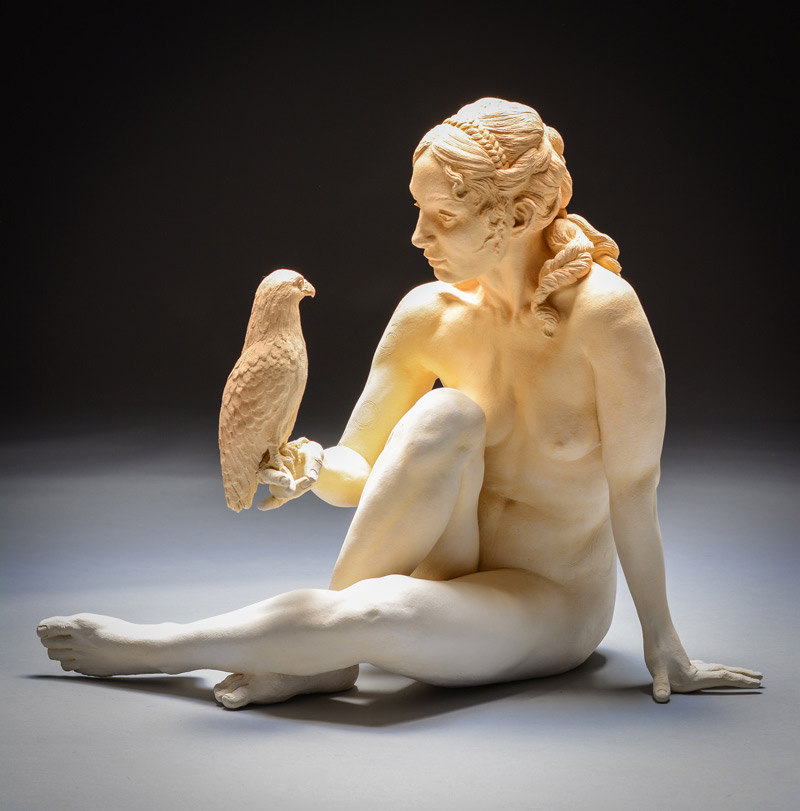 Our conversation focused on her sculpture Duende. She has written, "Duende is a quality of passion and inspiration. This sculpture is about following your passion in life, represented by the bird, a Brahminy Kite. The design work on the bird's chest flows onto the woman's arm and continues across her back, highlighting the connection and communication between them. It also embodies the blossoming that occurs when passion is your guide through life.
Our conversation focused on her sculpture Duende. She has written, "Duende is a quality of passion and inspiration. This sculpture is about following your passion in life, represented by the bird, a Brahminy Kite. The design work on the bird's chest flows onto the woman's arm and continues across her back, highlighting the connection and communication between them. It also embodies the blossoming that occurs when passion is your guide through life.
“The Brahminy Kite is often associated with Garuda, a powerful Hindu protector having the power to fly anywhere. The word Garuda has its origins in the verb "gri" - to speak. An important aspect of being guided by passion and inspiration is the ability to speak to yourself and others what is true for you. This opens the door to the unique path that is yours alone to wander.
“Adding another level of meaning, her right hand that the Kite rests on is in the "Palli Mudra" --a hand symbol that represents listening to your inner voice and having confidence in yourself.”
She has also written, “Some of the imagery in my work is based specifically in allegory, incorporating body language and symbols that hint at stories for the viewer to imagine. Other works integrate figures with text that highlight the inherent narrative qualities of the human form.”
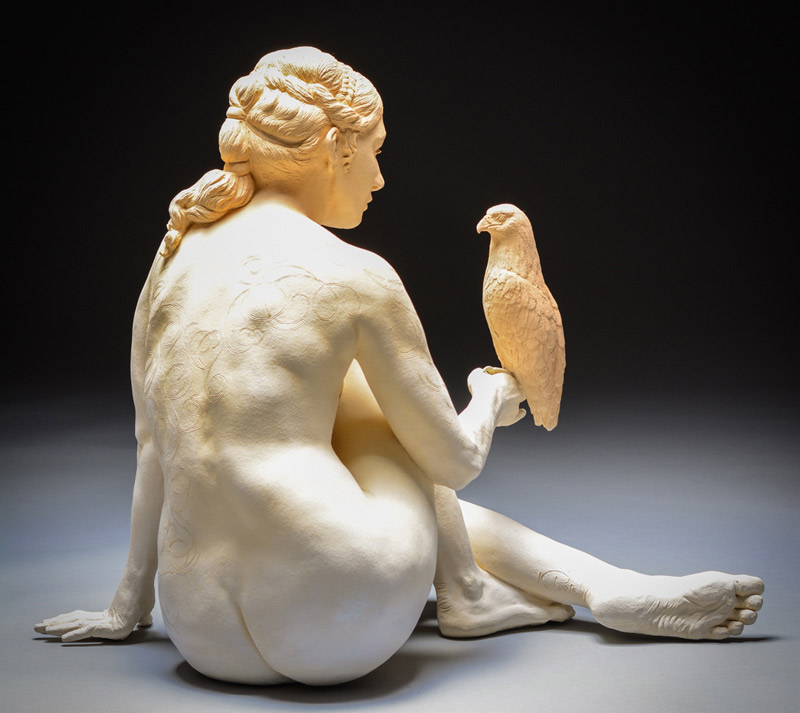 Her sculptures effortlessly contain and elicit meanings that belie the arduous task of constructing them. Working with live models and photographs, she models arms, legs and torsos from slabs of clay that she then assembles into the final form, defining the tension and relaxation of the muscles and adding details as she progresses.
Her sculptures effortlessly contain and elicit meanings that belie the arduous task of constructing them. Working with live models and photographs, she models arms, legs and torsos from slabs of clay that she then assembles into the final form, defining the tension and relaxation of the muscles and adding details as she progresses.
“To build the bigger sculpture,” she explains, “if you built it solid, you'd be working with 500 pounds of clay and that involves designing and making big armatures. So I rolled slabs. If you think of the human form as simple geometry, a calf would be a tapered cylinder, the arm is a tapered cylinder. The torso is basically 2 tapered triangles. So, I picture the human body that way. I roll the slab into the form and I attach it. I can get my hand inside and push. If you think of the thigh, I can push the quads out, the hamstrings and the adductors, to create the rough shape.” She acknowledges, “In terms of process, clay doesn't like to do any of this, so you see these braces all over. If they weren't here, the sculpture would collapse. Once it's been fired, it will stay.”
Often, she incorporates text on her figures and had thought she would continue to do that in Duende. When she had incised the design that continues from the body of the kite to the woman’s back, she realized “I actually preferred the subtlety of that.” The symbolism of the Brahminy Kite remains despite her having reduced its relative size to suit the artistic proportions of the sculpture.
The sculpture speaks to me of the interrelatedness or the oneness of animal life and life in general—the oneness of all creation.
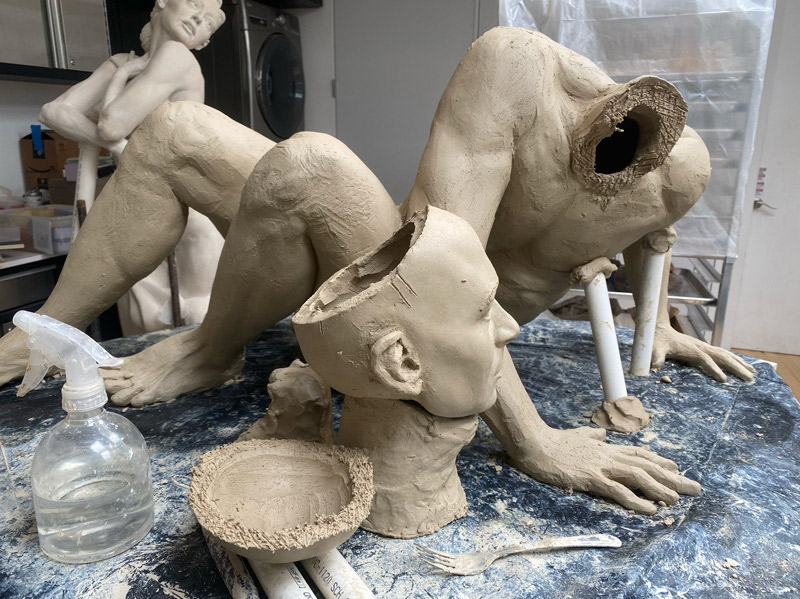 “Obviously my life has been about being a creative person and I think creativity is fundamental to humanity,” she says. “I think it gets beaten out of us in school--creativity and imagination. I’ve thought about figuring out a way for people to be able to experience creativity, whether they're actually making things themselves or experiencing it through what they see on social media or whatever else they experience. I think that can change the world. I believe that. It might be wishful thinking, but I think that if people actually got to experience the fulfillment of creativity, they would be happier. It changes the way that you see the world. It changes the way that you see people. It changes your excitement, your inspiration to get up every day.
“Obviously my life has been about being a creative person and I think creativity is fundamental to humanity,” she says. “I think it gets beaten out of us in school--creativity and imagination. I’ve thought about figuring out a way for people to be able to experience creativity, whether they're actually making things themselves or experiencing it through what they see on social media or whatever else they experience. I think that can change the world. I believe that. It might be wishful thinking, but I think that if people actually got to experience the fulfillment of creativity, they would be happier. It changes the way that you see the world. It changes the way that you see people. It changes your excitement, your inspiration to get up every day.
“I could do all of this and just keep it to myself, but I think there's an element of putting it out there and creating a connection with other people--maybe creating a moment of curiosity or a moment of understanding for other people that then circles around and brings fulfillment to your life. Fulfillment comes from sharing with others.”
October 6, 2024
JAY BAILEY | I've Never Been to Duckwater, but I Know Jack Malotte
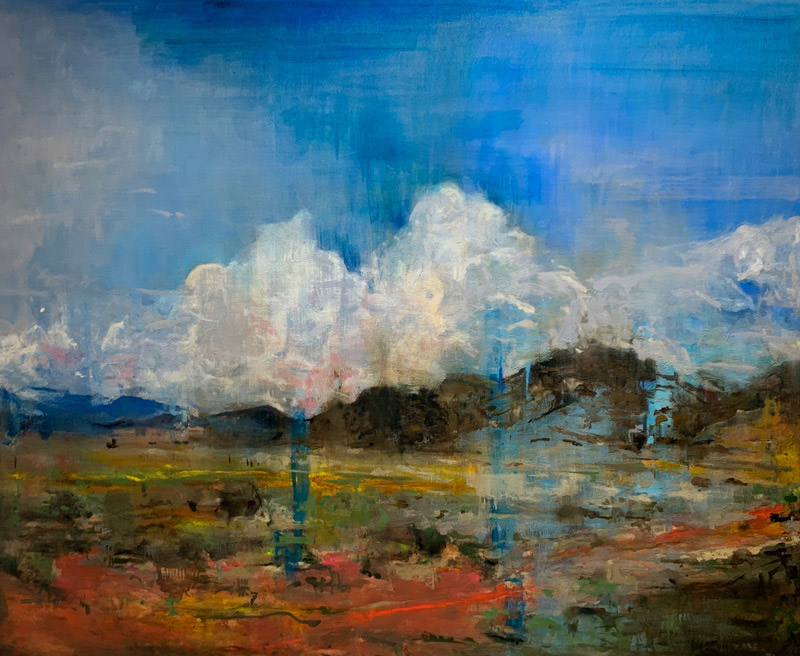
Jay Bailey has never been to Duckwater, Nevada, but he does know Jack Malotte. Jay was born in Reno and Malotte was brought up there--nearly a quarter century earlier. But their paths crossed.
“I was a quiet kid,” Jay says. “I was very insular. My parents were always supportive of my interests, Little League, my BMX, art. I was a latchkey kid and I was allowed to run around on my bike with the Sierra Nevada rising in the distance. I took the landscape for granted when I was young. In my 20s I lived in San Francisco, then Las Vegas,Texas. They never felt like home despite the initial comfort I felt being there. As I’m getting older, I’m trying to find home again in my work. My paintings are love letters to what I understand to be home despite the dilemma of ‘is home a place or a feeling?’”
Jay writes, in an artist statement, “The landscape of the American West has always calmed me and steadied my heart. I need to paint these spaces. Spaces with which I feel kinship. Spaces which make me feel like I’m home. They are the blur of my childhood memories. They are sediment and mountain shaped by time immortal. A dissolve of sunlight in the particles of parched air that carry sound, still and long. They are adorned with draught shaped wonders and skies of flowing stone. They are lonesome and demonic, pure in their inhospitable grandeur and uncaring of their sapien witnesses.”
When he was in elementary school, he met Jack Malotte and his parents arranged for him to take private art lessons. Malotte (Western Shoshone and Washoe) had attended California College of Arts and Crafts in Oakland, and was an editorial illustrator for the then Nevada State Journal. Later, in the 1980s, he became involved in Native American and environmental causes. In 1999, he arrived in the remote community of Duckwater to paint a mural in the school gymnasium . . . and never left. In 2019, The Nevada Museum of Art produced a traveling exhibition of his art.
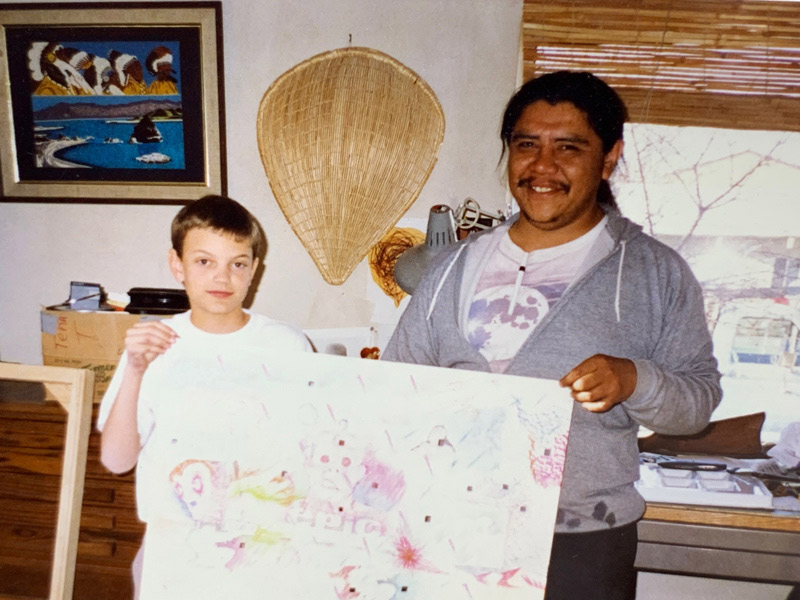 Jay’s painting I’ve never been to Duckwater, but I know Jack Malotte is an homage to his mentor with whom he has reconnected on Facebook. “We would make work together,” Jay reminisces. “He showed me what an artist does, how to be an artist. The work was free-form, non-restrained. Many of his works are great desert landscapes.
Jay’s painting I’ve never been to Duckwater, but I know Jack Malotte is an homage to his mentor with whom he has reconnected on Facebook. “We would make work together,” Jay reminisces. “He showed me what an artist does, how to be an artist. The work was free-form, non-restrained. Many of his works are great desert landscapes.
“I was a pretty cautious young person. I drew because I liked comic books. It was easy to go from Marvel comics to the Sistine Chapel with the same muscular figures. Jack had been influenced by the artists of the Bay Area from Chuck Close to psychedelic alternative comics.”
Jay received his BA in Fine Art from the University of Nevada in Reno, studied at the San Francisco Art Institute, and received his MFA from the University of Nevada, Las Vegas (UNLV).
“When I was an undergrad,” he says, “I didn’t connect with Jackson Pollock. I didn’t know why people were enthralled with his paintings. When I was at the Art Institute I went to the San Francisco Museum of Modern Art and saw my first Pollock in person. “I instantly got it. It was like a religious experience. It unlocked a new experience that I merged that with my figurative work. Seeing Picasso’s Guernica in Spain when I was a kid had a big impact on my drawing the figure. Seeing the Pollock in person allowed me to step away from the figure and toward landscapes. The figures may creep back but losing them allowed me to become a better painter.
“In the landscape, there’s the horizon, sky and ground. That gives some leeway. It leaves room to play, to find more expression.
“There isn’t a ton of color in the desert. I had seen a piece by Jack on Facebook in which he had extended the color range. The art critic Dave Hickey was a professor at UNLV and gave a talk here in Reno. He said he loved folklore because it contains truth even if it’s not true.
“There are a lot of paintings rusty brown things in the desert. The more I’ve painted I’ve tried to find the right rusty brown. It pushes me to express the colors of the desert further even though I don’t see them directly. It’s visceral. I know when it feels right. The blue sky in Nevada doesn’t feel quite right when I paint it blue. When I disrupt it, it feels more honest. It needs to be undone a bit.”
Jay doesn’t lay out a sketch on the canvas. He just starts painting. Mark making, to him, has as much purpose as making an image. “I’ll talk to the marks,” he says. “I’m not in control. I’m responding to what happens. There are multiple responses. A mark can communicate a certain vitality. If the image becomes too rendered, it’s not satisfying to me.”
Pollock’s process was similar. He wrote, “When I'm painting, I'm not aware of what I'm doing. It's only after a get acquainted period that I see what I've been about. I've no fears about making changes for the painting has a life of its own.”
Jay comments, “I want to experience the landscape through the lens of what paint can do. Cormac McCarthy saw landscape as a character in his novels. I want to depict that character in a way.”
In “Blood Meridian, or, the Evening Redness in the West”, McCarthy commented on the sameness and diversity of the desert. “In the neuter austerity of that terrain all phenomena were bequeathed a strange equality and no one thing nor spider nor stone nor blade of grass could put forth claim to precedence. The very clarity of these articles belied their familiarity, for the eye predicates the whole on some feature or part and here was nothing more luminous than another and nothing more enshadowed and in the optical democracy of such landscapes all preference is made whimsical and a man and a rock become endowed with unguessed kinship.”
Although Jay calls himself an “indecisive painter,” his instinct and willingness to destabilize the conventions of landscape painting make his landscapes “feel more real. I’m finding the edge of where a thing is and where it isn’t.”
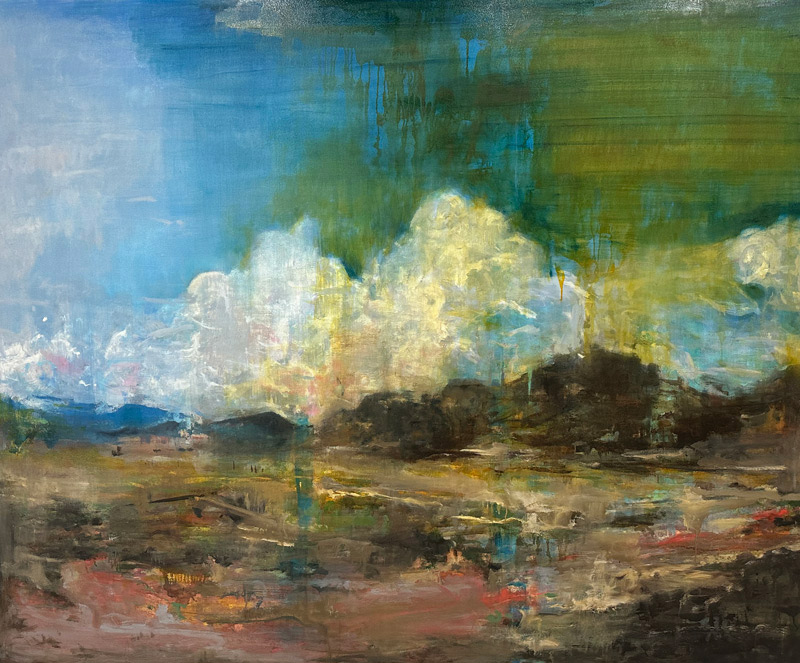 Painting in layers, he knows that “one color influences the colors on top of it. The impossible blue sky in an early state of I’ve never been to Duckwater… gets a yellow wash that becomes green as the blue shows through, and the white clouds allow the yellow to be yellow.
Painting in layers, he knows that “one color influences the colors on top of it. The impossible blue sky in an early state of I’ve never been to Duckwater… gets a yellow wash that becomes green as the blue shows through, and the white clouds allow the yellow to be yellow.
Jay comments, “After months of thinking this painting was finished, I layered in more weirdness that only those who have spent time in the high desert know to be true. Colors melt out there.”
September 29, 2024
FRANCIS DIFRONZO | Crossing Paths, Part 2
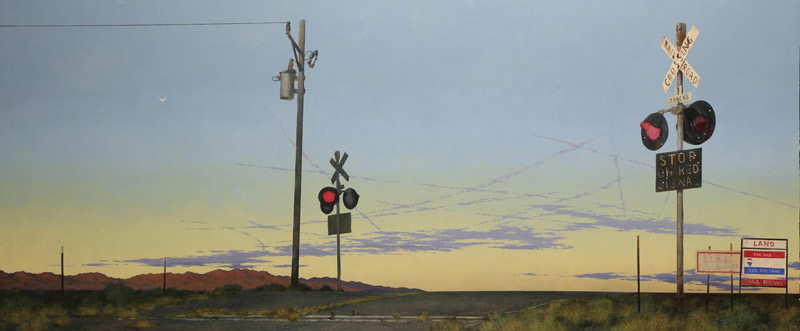
When Francis DiFronzo was a beginning art student at California State University, Fullerton, he finished his drawing quickly in a life drawing class and went outside for a smoke. His teacher, who felt he was talented but not really applying himself, stopped him and said, “If you’re done, change your position and do a second drawing.” By the end of the semester,he admits, “I was more competent at drawing the figure. My teacher told me that he wished he could lock me in the desert for a year to see what I could do without distractions. A couple of years later I felt under pressure to find my own voice. I thought maybe I should go to the desert. I was too influenced by other artists and my teachers.
“I went to Bell Mountain near Victorville in the Mojave Desert. I found a house that had been turned into a duplex and half was for rent. It was super cheap--2 rooms and a bathroom. After 8 or 9 weeks I didn’t know what to draw or what to paint. There was no radio and it was a 30 minute drive to the nearest phone. I was 21 and knew I was not ready to be on my own all the time.
“Interestingly, last year I purchased a negative to digital converter. I did take photos in the desert. When I converted them I was afraid to look at them at first.”
There were visual and spiritual experiences, however. “I remember sitting at the front door of my house, at sunset” he recalls. “I was looking toward the east rather than at the setting sun. It was the nicest experience, how the Belt of Venus appeared in the sky above the shadow of the earth. Night rises as the sun sets.” Explaining the Belt of Venus, the BBC states, “To properly see the Belt of Venus, all you need is a clear sky, shortly before sunrise or after sunset, and an unobstructed horizon.” Francis had unobstructed horizon in abundance to observe the pink band named after the Greek goddess of love and beauty and the girdle she wore that had the power to inspire passion. His “nicest experience” was the beginning of his passion for the desert.
He left the desert and attended graduate school at the Pennsylvania Academy of the Fine Arts. He found he was still trying to find his voice and, later, decided to return to the desert. “I wanted to shake myself up. I wanted to spark something. I said, ‘You’re not who you were back then.’ When I arrived in Bell Mountain, the house was gone. There was a pile of wood where the house had been and a clean concrete slab. That ended up to be the impetus to move on.”
And move on, he did. He has always admired the work of Andrew Wyeth and Edward Hopper and says, “I want to portray the desert with the same passion and attention to detail as the east coast artists did with their environment. In simple tonal paintings, I want to portray how I feel about the southwest and the timelessness of nature—nature as continuum.” The fading signs and rusting box cars in his paintings may outlive us and the concrete slab of his home in the desert will undoubtedly outlive human life on the planet.
Along the way, he was awarded a Stobart Foundation Fellowship in the Arts as well as a Pew Fellowship in the arts. In 2015, 5 of his paintings were featured in the second season of the award-winning television series “Better Call Saul”.
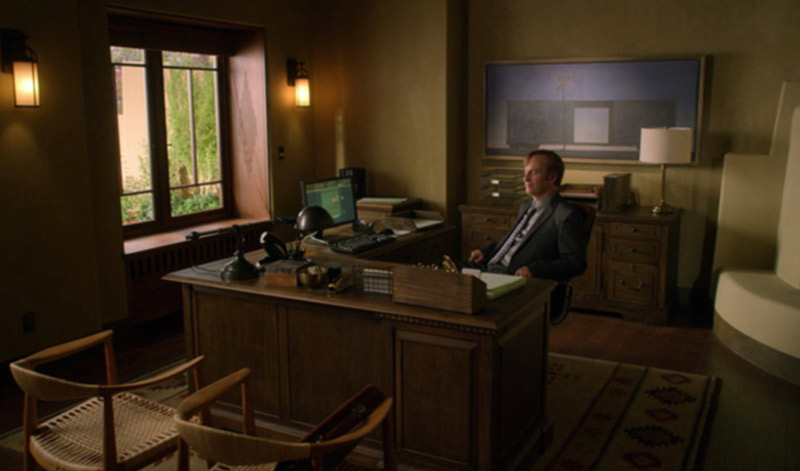 Among his paintings at Evoke is Crossing Paths, Part 2. A summation of many of his experiences imagined into a cohesive composition that invites the viewer’s exploration and response. He says, “I think the thing that makes good art is a sense of mystery. I like being a little opaque. I draw people into my world and give enough information so they know there’s a meaning.”
Among his paintings at Evoke is Crossing Paths, Part 2. A summation of many of his experiences imagined into a cohesive composition that invites the viewer’s exploration and response. He says, “I think the thing that makes good art is a sense of mystery. I like being a little opaque. I draw people into my world and give enough information so they know there’s a meaning.”
On the far right of the 5-foot panel are faded signs for real estate, symbolic of failed dreams. One still legible sign bears an active phone number.
“In general, he explains, “the Crossing Paths paintings are about transportation, the mark that humankind leaves everywhere, like the concrete slab of my house in the Mojave. Worlds cross, airplane contrails cross in the sky. And there are unseen crossed paths. The thought or premise is how human lives interact, how lives cross paths. In , I wanted to give some sort of reference to my own life, how opportunity comes and goes. Call that phone number.”
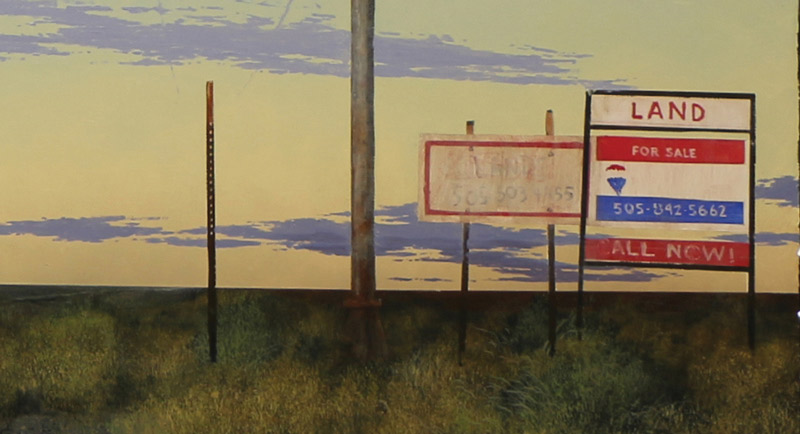 The railroad crossing signs are self-explanatory and are a fortuitous link to an art installation just down the street from the gallery at the New Mexico Museum of Art Vladem Contemporary. Last year, the museum’s first artist in residence, Colombian artist Oswaldo Maciá. created a sound sculpture installation, El Cruce—“cross” or “crossing” and all its meanings. He incorporates the sounds of crossing from migratory bats and the sounds of wind in the desert to the sounds of the railyard just below the sculpture terrace where his piece is installed.
The railroad crossing signs are self-explanatory and are a fortuitous link to an art installation just down the street from the gallery at the New Mexico Museum of Art Vladem Contemporary. Last year, the museum’s first artist in residence, Colombian artist Oswaldo Maciá. created a sound sculpture installation, El Cruce—“cross” or “crossing” and all its meanings. He incorporates the sounds of crossing from migratory bats and the sounds of wind in the desert to the sounds of the railyard just below the sculpture terrace where his piece is installed.
In an essay I wrote for the museum, I refer to crossing. “Today, it continues to refer to intersections but also to transitions (‘crossing over’, ‘crossing borders’) and, in the case of sculpture, ‘crossing the limits of perception’. Maciá refers to the migration of the Spanish and colonists to Santa Fe and the migration of artists drawn by the desert and its extraordinary light. He refers, as well, to present day migrants crossing through Central America to our southern border.”
People have come and gone from the desert of the southwest. Among the photos Francis took when he first lived in the desert were several of a long-abandoned church. Painted on a rafter was a passage from Genesis—“Why are you distressed, and why is your face fallen”—words God spoke to Cain after he accepted Abel’s offering and rejected Cain’s.
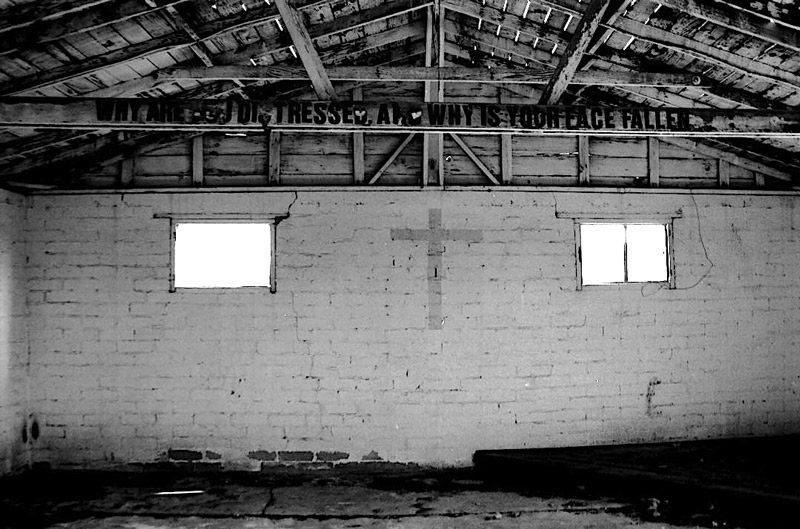 Francis incorporated the quote in his painting, The Cathedral. “I often imagined what those words would mean to a child,” he explains. “There’s no reason God favored Abel. As a child myself, I loved the sense of community, of a family coming together. In this painting I was thinking about how in the old days, religious people used to travel and spread the Word in cars and wagons and would open a temporary church.
Francis incorporated the quote in his painting, The Cathedral. “I often imagined what those words would mean to a child,” he explains. “There’s no reason God favored Abel. As a child myself, I loved the sense of community, of a family coming together. In this painting I was thinking about how in the old days, religious people used to travel and spread the Word in cars and wagons and would open a temporary church.
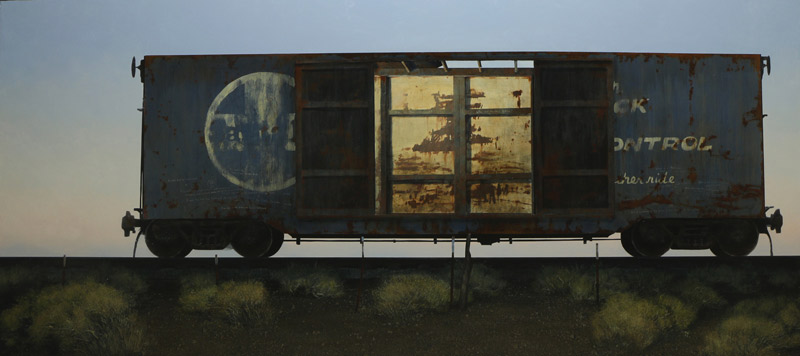
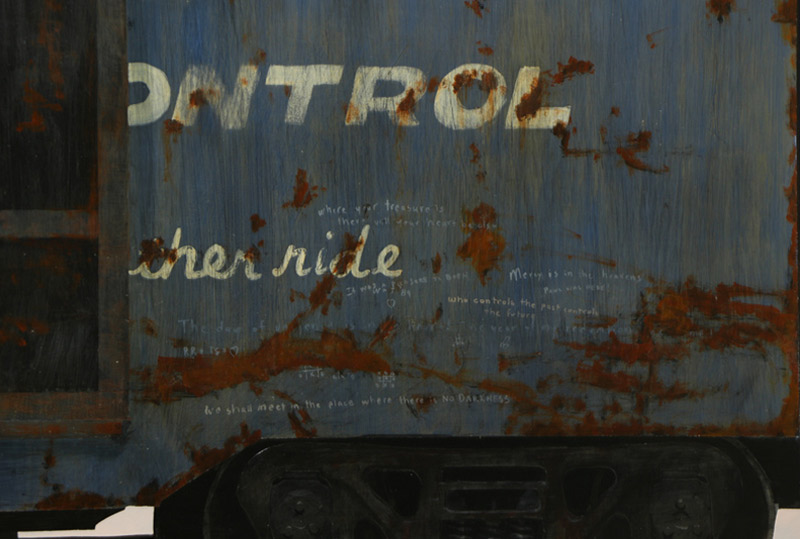 “I had envisioned people who had gathered together inside the cathedral, the younger generation writing on the side of the box car the things they heard inside, repeating what they learned. In the tic tac toe games, they make the same mistakes over and over again. We should learn from our mistakes.”
“I had envisioned people who had gathered together inside the cathedral, the younger generation writing on the side of the box car the things they heard inside, repeating what they learned. In the tic tac toe games, they make the same mistakes over and over again. We should learn from our mistakes.”
Francis is now teaching drawing and painting at California State University, Fullerton. David Hockney wrote, “Well you can't teach the poetry, but you can teach the craft.” Francis teaches the craft from stretching canvas to understanding chroma. “I also introduce them to pathways they can use to tap into their creative impulses. They have to find their own way. You learn it from yourself.”
September 15, 2024
Judith Stewart | Flora II
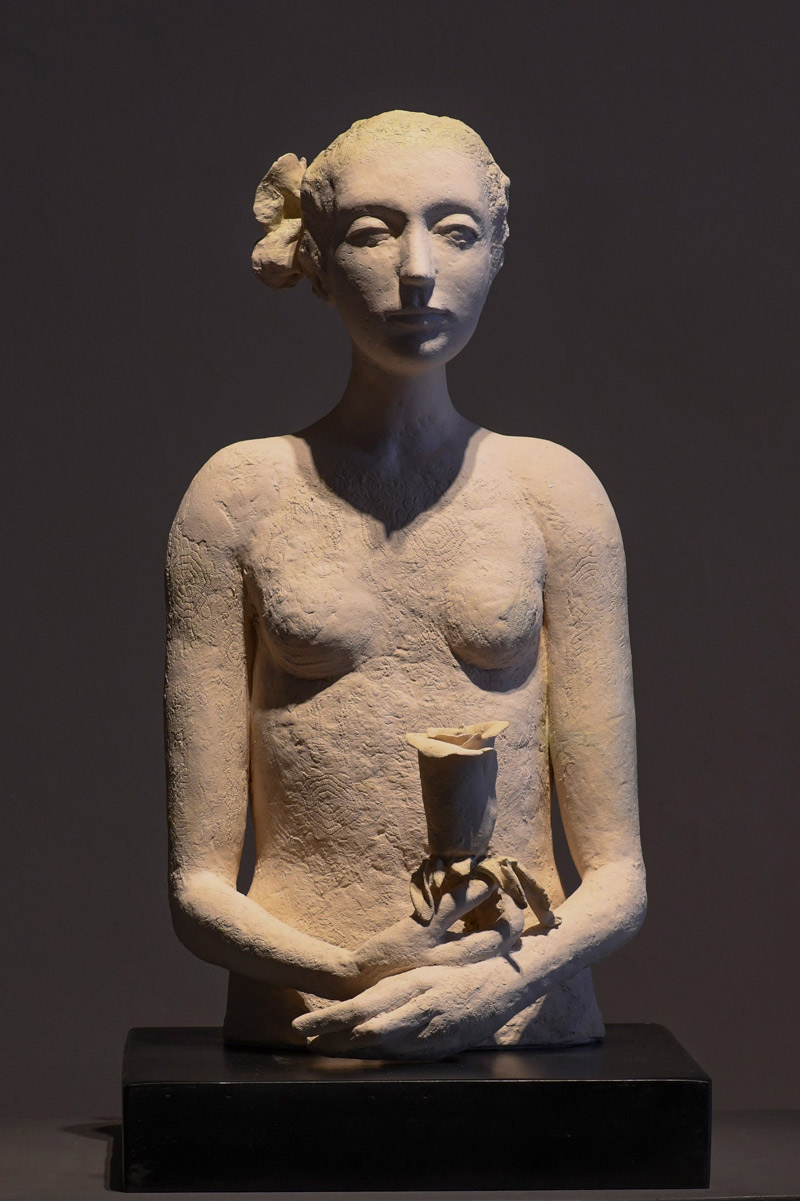
In his extraordinary autobiography, the historian Henry Adams wrote, “A teacher affects eternity; he can never tell where his influence stops.”
As an undergraduate student of painting at Syracuse University, Judith Stewart studied with the sculptor Dominick Angelo who introduced students to the work of the contemporary Italian sculptors Marino Marini and Giacomo Manzú. His lasting influence was that he “taught students to ‘see’ sculpture not frontally, but at the edge, along the contour, where form is established.
Later, when teaching painting at the University of West Florida, Judith received a grant to go to Italy where the subject of her paintings was “Roman sculpture in the context of today, as encountered in museums, in the forums and public spaces of the cities, often as fragmented remnants in unexpected places.”
While in Florida, she took a class in bronze casting. Part of the process was “pouring wax out onto wet a cloth and when it was cool enough, ripping it up into random pieces and sticking them together to see what you get,” she says.
Today, the beauty and immediacy of the process continues in her work in clay, maneuvering large slabs into female forms. “Clay gives me a lot of freedom to make form,” she explains. “50% of each piece is suggested by what the clay wants to do. That’s very important to me-- the back and forth between process and the idea. I’m open to the surprises.”
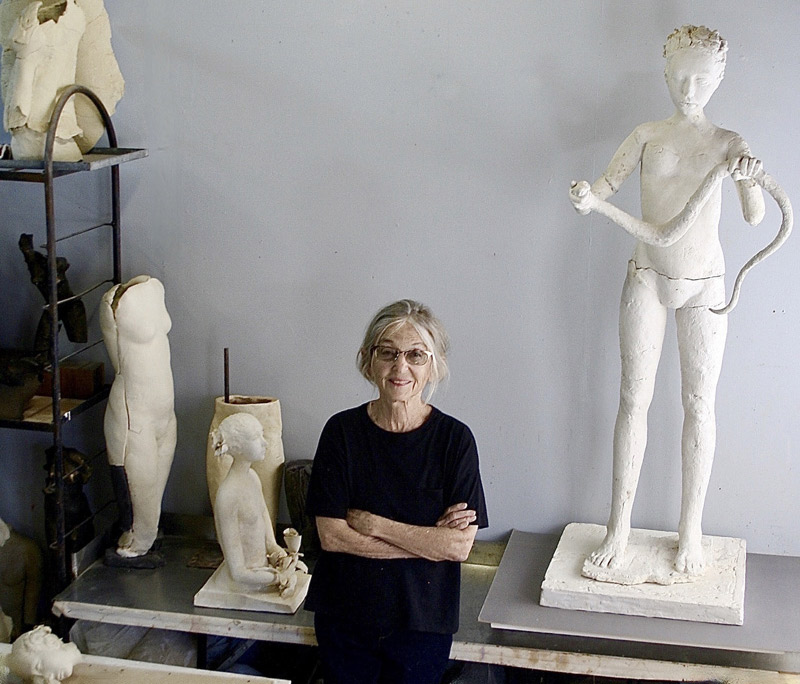 She writes, “New figures are not conceived externally, as drawings or models fully realized. Rather they exist inwardly, unformed, waiting to be formed. My pieces are never anything I have seen, but a merging of many things I have seen, images, histories and memories accumulated throughout my life. Intuition guides the building and shaping of a sculpture, bringing ideas forth while allowing the materials used to declare and keep their own rich natures. The demand put upon materials to hold form, and the hope that a human presence will emerge with a unique identity, is for me the fascinating part of creating sculpture about the human body.”
She writes, “New figures are not conceived externally, as drawings or models fully realized. Rather they exist inwardly, unformed, waiting to be formed. My pieces are never anything I have seen, but a merging of many things I have seen, images, histories and memories accumulated throughout my life. Intuition guides the building and shaping of a sculpture, bringing ideas forth while allowing the materials used to declare and keep their own rich natures. The demand put upon materials to hold form, and the hope that a human presence will emerge with a unique identity, is for me the fascinating part of creating sculpture about the human body.”
The human presence emerges in her sculpture Flora II at Evoke. She is titled Flora II because the first Flora collapsed in the kiln--one of the hazards of clay firing. The figure was inspired by Renaissance portraiture, especially profiles and the line of the edge of the figure.
“The edge tells me if it’s right or not,” Judith explains. “You can see the muscle, how the back curves to buttocks and the hips. The construction of the human form is amazing. When people look at a sculpture, they usually look at the center and identify it. That’s good enough for most people. I’d like them to see the form at the edge--off the shoulder to the elbow to the wrist. If the sculpture is displayed on a rotating pedestal, the edge changes. You see the full beauty of the line.
“The essence of Flora’s pose is her repose,” she continues. “She is quiet fully occupied with holding the flower and being quiet.” The word repose has its roots in the Greek and Latin words for pause and rest. Flora, herself, is the Roman goddess of flowers and spring.
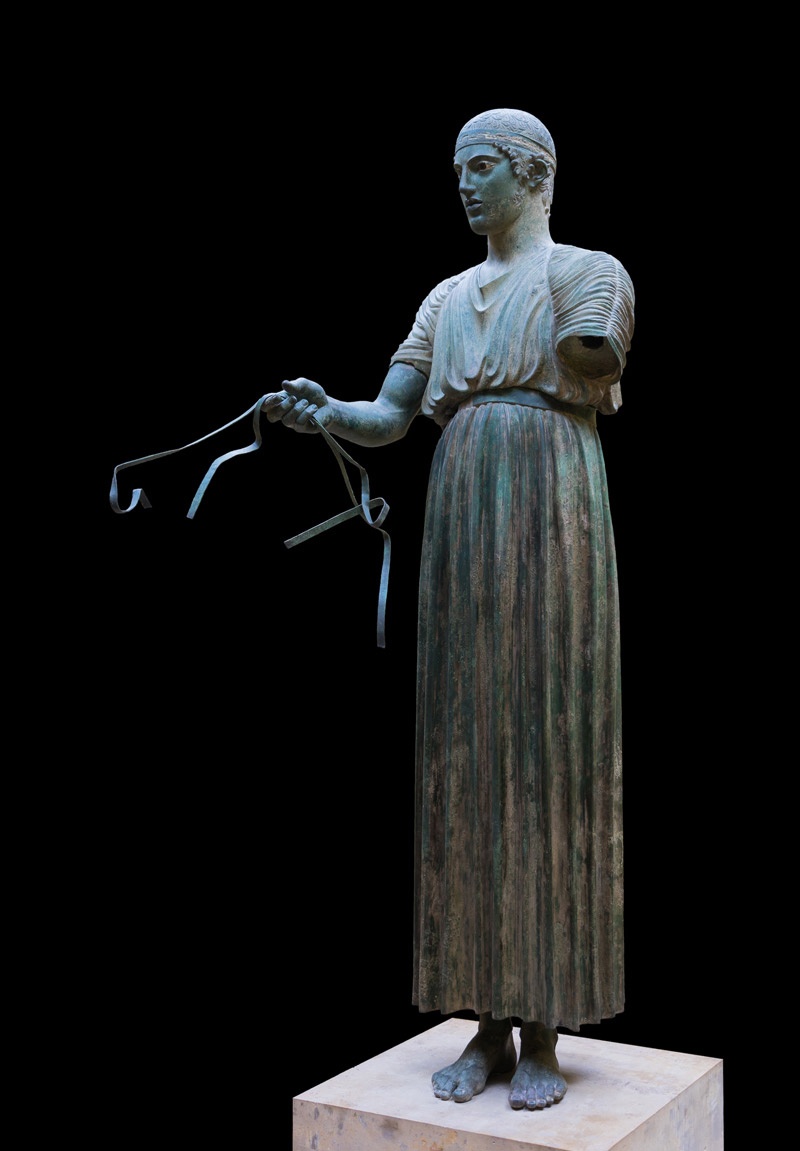 My own response to Judith’s sculpture is one of calm, similar to settling into a state of meditation. She is a physical presence in her natural nudity, united with the rest of Nature as she holds a simple flower. Judith comments that the tulip-shaped flower “echoes the uprightness of the torso. I didn’t set out to do a figure that’s quiet. I was fully occupied with the shape of the torso and the line of the back. I don’t know if I was aware of the quietness at the time.
My own response to Judith’s sculpture is one of calm, similar to settling into a state of meditation. She is a physical presence in her natural nudity, united with the rest of Nature as she holds a simple flower. Judith comments that the tulip-shaped flower “echoes the uprightness of the torso. I didn’t set out to do a figure that’s quiet. I was fully occupied with the shape of the torso and the line of the back. I don’t know if I was aware of the quietness at the time.
“A feeling for calmness comes from my admiration for the sculpture of the Greek Charioteer at Delphi. There’s a subtle little twist to his body. He’s totally self-possessed, ‘I’m internal.’ He has presence. It’s like observing people when they don’t know their being watched. They’re quietly being themselves.”
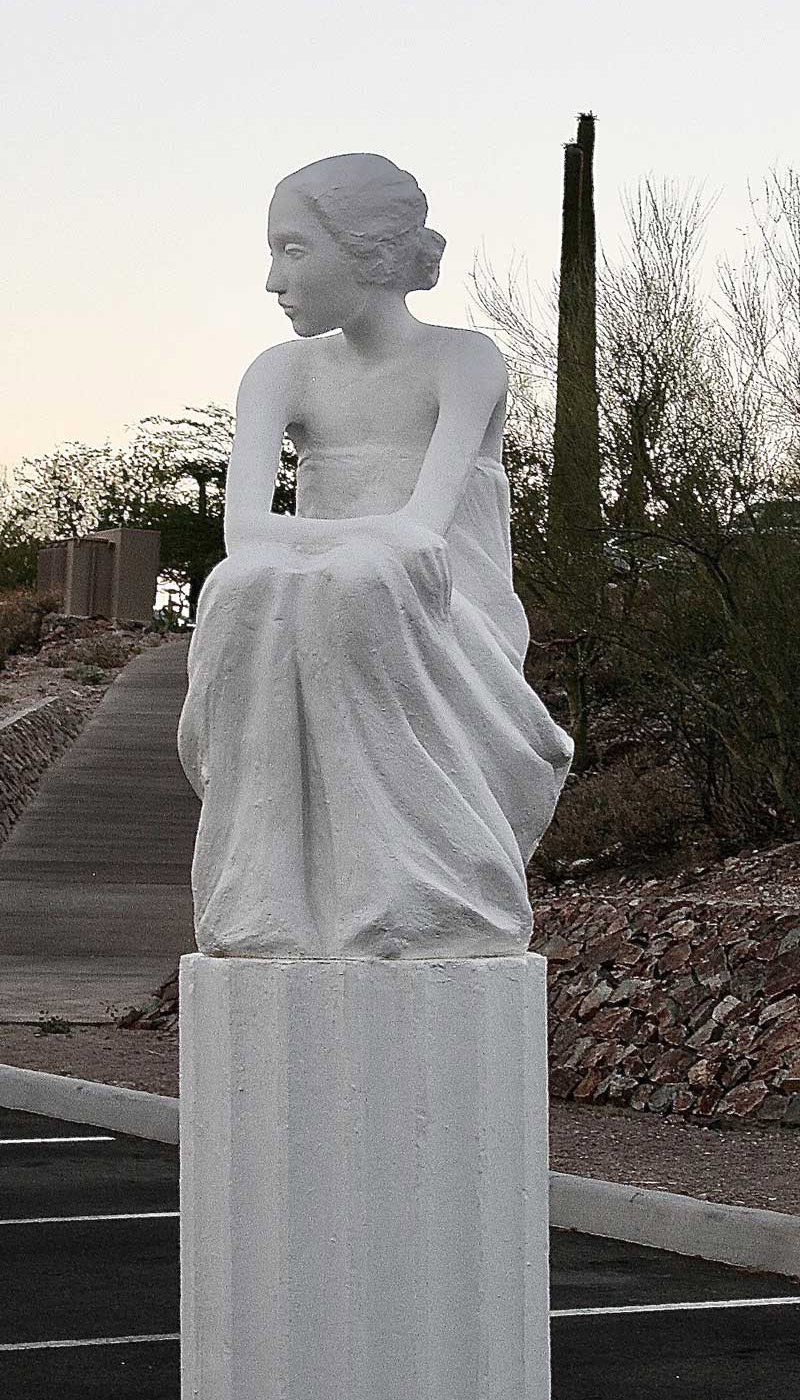 A reference to Greek sculpture also occurs in her sculpture Large Oracle. “I liked the clay study of this pose so much that I had it scanned and enlarged in foam that I dressed out from there in plaster.” The draped figure recalls the caryatids who support the porch roof of the Erechtheion on the Acropolis in Athens. This one has decided to take a rest.
A reference to Greek sculpture also occurs in her sculpture Large Oracle. “I liked the clay study of this pose so much that I had it scanned and enlarged in foam that I dressed out from there in plaster.” The draped figure recalls the caryatids who support the porch roof of the Erechtheion on the Acropolis in Athens. This one has decided to take a rest.
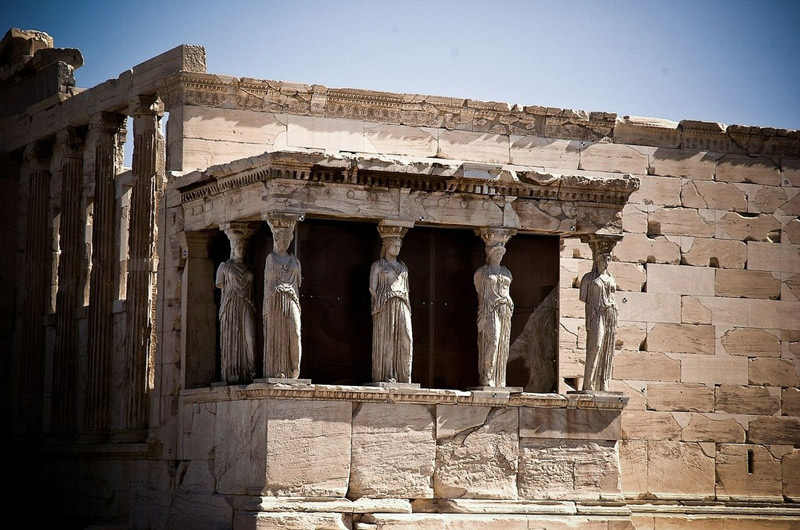 Oracle, Arizona, is where Judith lives, in the Rancho Linda Vista Arts Community. She had traveled through Arizona when her father worked in the oil fields and remembered the area “the purple shadows and the feel of the desert.” Looking to move from Florida she visited a friend in Tucson and visited the office of the local arts council where she was told to visit Rancho Linda Vista. “I saw a woman coming out of the post office,” she relates, “and since she looked like an artist I followed her and asked her about arts opportunities. She told me she knew the woman running the guest artist program at Rancho Linda Vista. When I met her, she signed me up. I came here in 1991and I knew I wanted to stay. Art is the center of the community and I’m surrounded by other artists. It’s my forever home.
Oracle, Arizona, is where Judith lives, in the Rancho Linda Vista Arts Community. She had traveled through Arizona when her father worked in the oil fields and remembered the area “the purple shadows and the feel of the desert.” Looking to move from Florida she visited a friend in Tucson and visited the office of the local arts council where she was told to visit Rancho Linda Vista. “I saw a woman coming out of the post office,” she relates, “and since she looked like an artist I followed her and asked her about arts opportunities. She told me she knew the woman running the guest artist program at Rancho Linda Vista. When I met her, she signed me up. I came here in 1991and I knew I wanted to stay. Art is the center of the community and I’m surrounded by other artists. It’s my forever home.
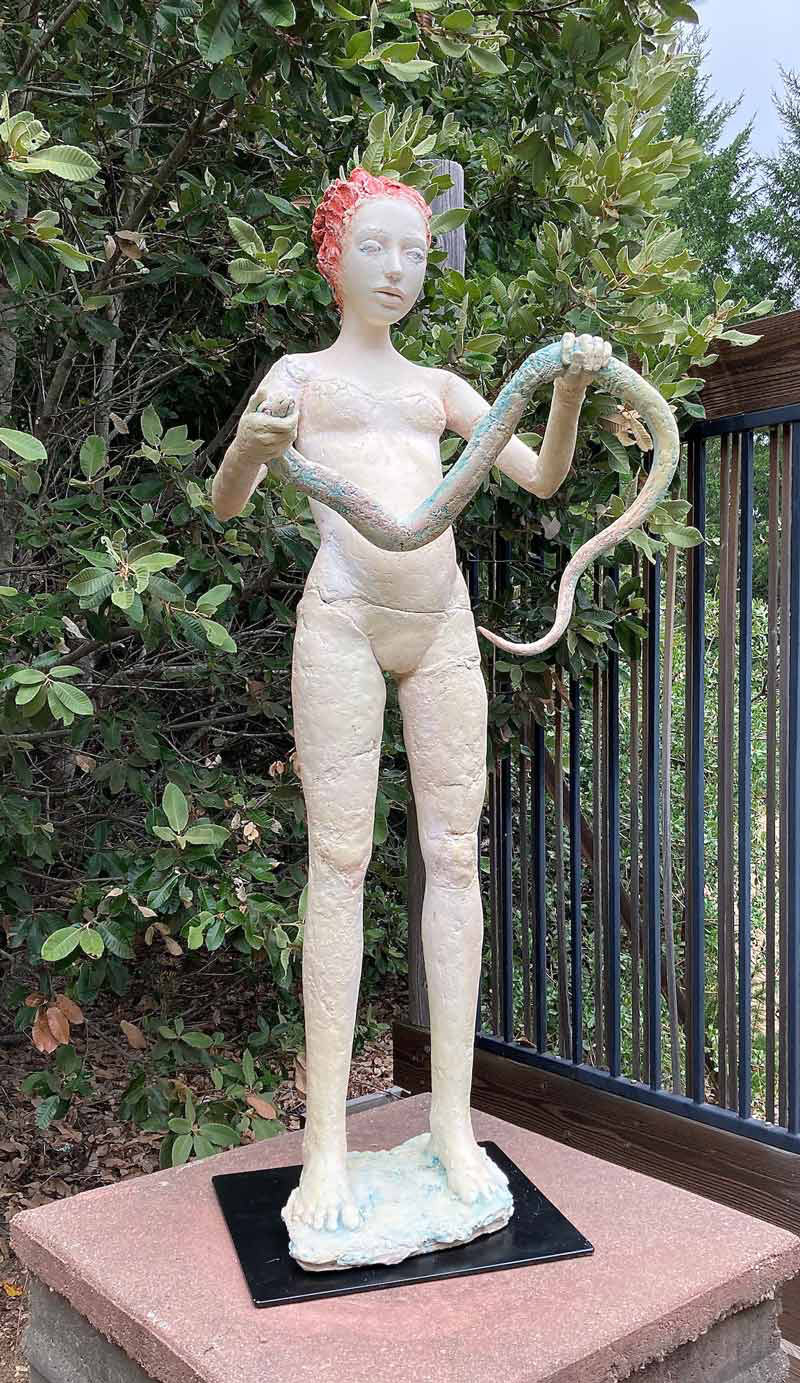 In Oracle, she came upon a vintage photo of a local woman dressed in jeans and a checked shirt and holding a snake. “It said something about a strong woman,” she relates. “I took it to the next level.”
In Oracle, she came upon a vintage photo of a local woman dressed in jeans and a checked shirt and holding a snake. “It said something about a strong woman,” she relates. “I took it to the next level.”
Girl Holding a Snake is an example of her constructed figures and her fending off realism. “I don’t want to fake that I’m trying for super realism,” she says. “She has arms that are stuck together. I want people to also admire the material”. On a whim she decided to paint the girl’s hair with red acrylic and to highlight the texture of the snake in blue.
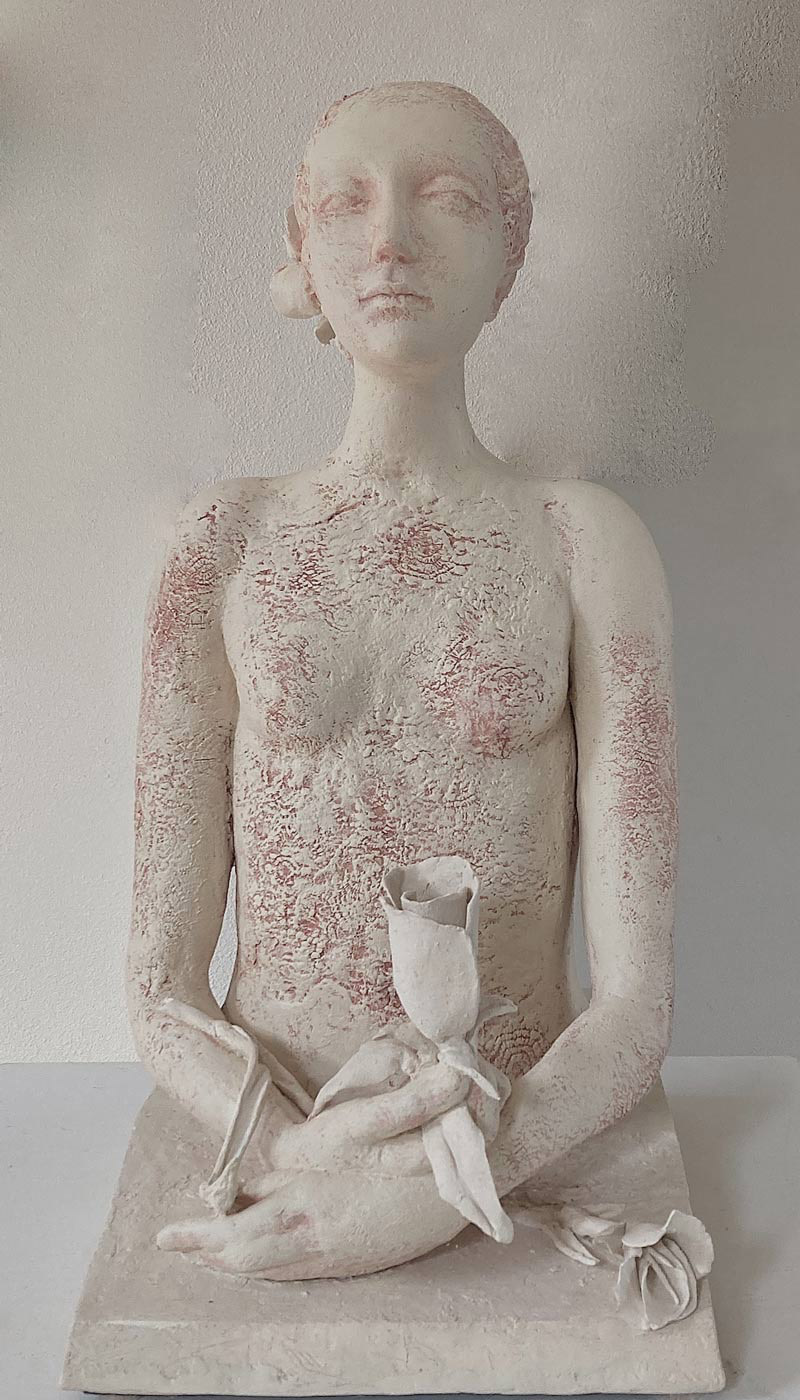 Her experiments with color carried into Flora 3 in which a color wash highlights the pattern of the lace she pressed into the surface of the wet clay before it was fired.
The nudity of Flora is softened by the lace, removing it from being seen as possibly prurient nakedness. “I wondered how to protect the figure and not make it sexualized,” she comments. “The lace is a boundary to the invasive idea.
“I have an empathy for the female form. I know it very well. The essence of the feminine is built into the form. I want people to get enjoyment from the beautiful lines and everything the female figure contains.”
Her experiments with color carried into Flora 3 in which a color wash highlights the pattern of the lace she pressed into the surface of the wet clay before it was fired.
The nudity of Flora is softened by the lace, removing it from being seen as possibly prurient nakedness. “I wondered how to protect the figure and not make it sexualized,” she comments. “The lace is a boundary to the invasive idea.
“I have an empathy for the female form. I know it very well. The essence of the feminine is built into the form. I want people to get enjoyment from the beautiful lines and everything the female figure contains.”
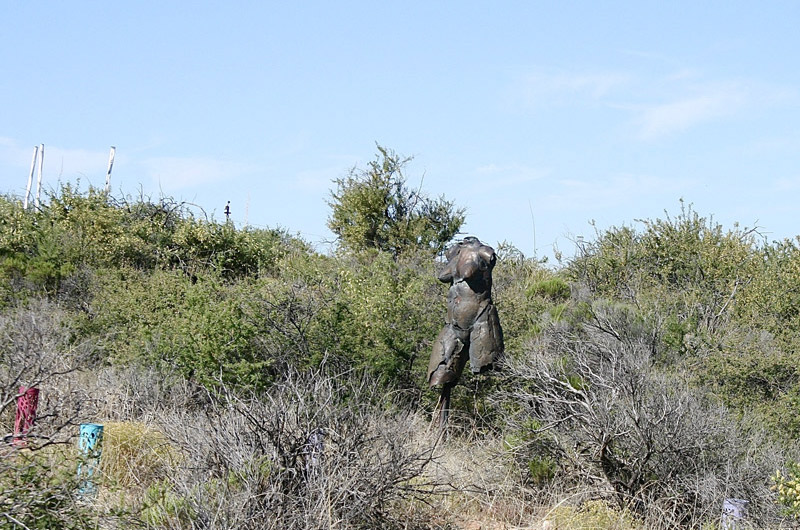
September 8, 2024
Thomas Vigil | Know Way, Know Truth, Know Life
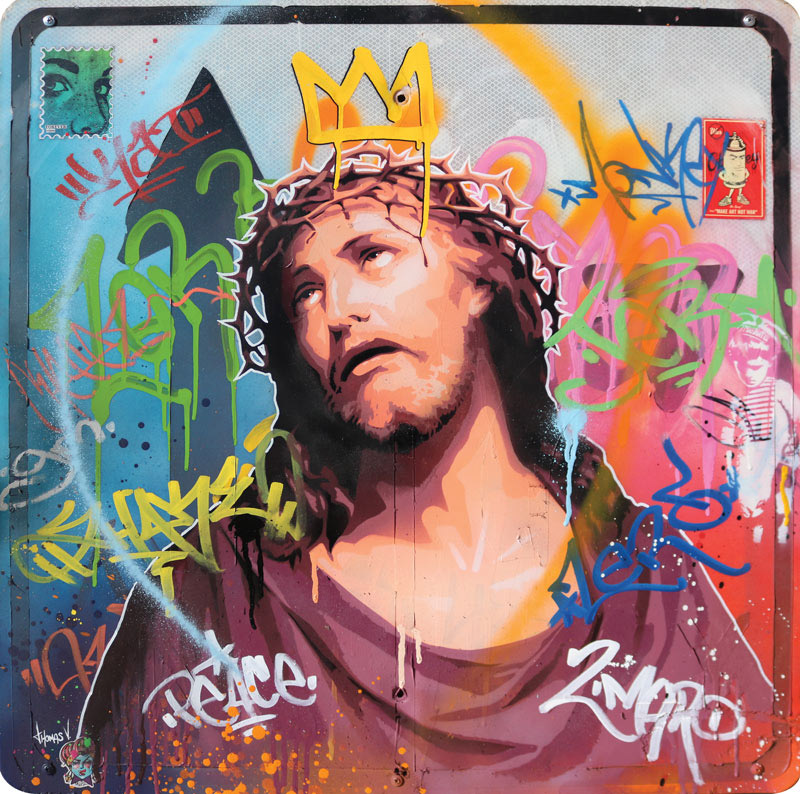
Thomas Vigil grew up in a devout Catholic family in northern New Mexico. Attending Mass, however, he was more interested in the paintings and sculpture by local artists than in the sermons delivered from the pulpit.
“My parents were about church and going to church and following the Bible,” he says. “In church, I loved looking at the artwork. We have so many amazing santeros that donated their art to the church, like full stations of the cross. It's something that I benefited from, because I got to go to church and look at these images all the time.”
Among the other artistic influences was graffiti that he saw all over his hometown of Española. Visiting his brother in Los Angeles, however, he saw that graffiti was a much bigger phenomenon. “I’ve always had an eye for graphic arts,” he says. “Graffiti changed the definition of ART for me. I developed an addiction for art in public spaces at a young age. I indulged in my fair share of unlawful expression. It was in the streets that I received an education that I would have never found at any conventional art school.”
Today, when he visits other cities he asks friends, “’What’s a good street to check out?’ and I'll go and I'll explore and take photographs of graffiti. It’s just continued inspiration. That's the art I love.”
Today, his own art is a rich combination of his early fascination with iconic religious images painted with intricately-cut stencils on mundane supports like street signs and license plates. The free application of often dripping spray paint from his days as a street artist contrasts with his subtle control of the spray to create his posterized portraits.
In the posterization process, he reduces the full tonal range of an image to fewer tones that result in an abrupt change from one tone to the next. One of his many skills is applying the paint with his stencils and spray cans so that there isn’t an overlap of tones or, worse, a gap between them.
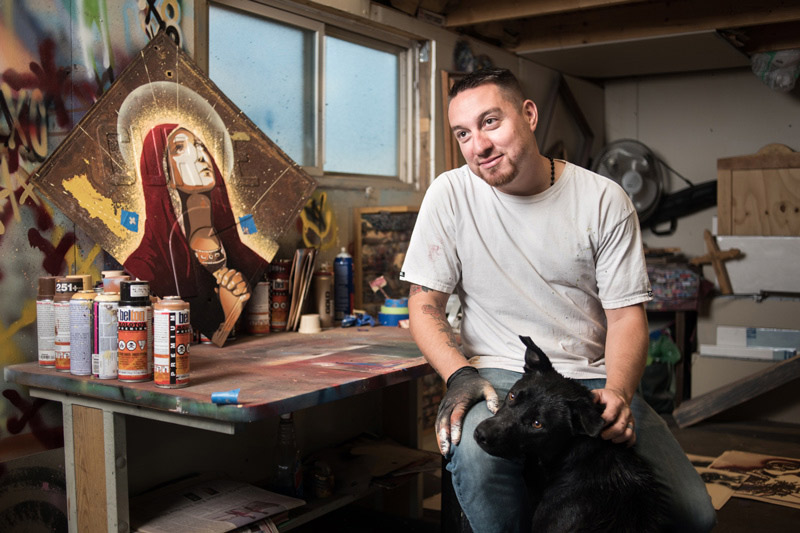 The layers of imagery in works like Know Way, Know Truth, Know Life--street sign, a posterized interpretation of a classic image of Jesus, and freely-sprayed graffiti tags, are inspired by his love for the layered graffiti on the streets. “It's just something that strikes me when you see just random graffiti everywhere. It's beautiful. And then a street artist will come up and throw an image over it, whether it be iconic or otherwise. And that's great. you get this kind of overlay of graffiti on top of this image.”
The layers of imagery in works like Know Way, Know Truth, Know Life--street sign, a posterized interpretation of a classic image of Jesus, and freely-sprayed graffiti tags, are inspired by his love for the layered graffiti on the streets. “It's just something that strikes me when you see just random graffiti everywhere. It's beautiful. And then a street artist will come up and throw an image over it, whether it be iconic or otherwise. And that's great. you get this kind of overlay of graffiti on top of this image.”
The transition of street art to the gallery setting isn’t an easy one. Thomas relates that people would be attracted to the bright colors of his work in his booth at Contemporary Hispanic Market. “As a graffiti writer,” he says, “I know how to use contrasting colors and complementary colors. That's what we do to create a striking image that is visible from a far distance.” Sometimes, however, when he would explain to his visitors that the paintings are created with spray paint they would turn around and walk out.
In the early 90s when I was beginning to develop the Re-presenting Representation exhibitions at the Arnot Art Museum, I sought imagery that spanned from nearly abstract to photorealistic and declared that the sculptures, drawings and paintings only needed to portray “stuff you can recognize”. I also sought different ways of using media. It was bad enough that I had chosen to promote contemporary realism which my museum peers thought was even more passé than passé, but I also included images painted with an air brush rather than animal hairs at the end of a stick.
Air brush is simply a more controlled application of paint than spraying from a can and has become more accepted among painting purists. Spraying directly from the can, not so much.
“What I love to see out there in the streets is what I'm trying to incorporate in my fine art,” Thomas explains. “I want to have that authentic street feeling but still be aesthetically pleasing to the general collector. It's a really hard balance. I don't know that I've bridged that gap yet. I think there are some people that are very enthralled by what I'm doing and then other people that are just like, well, ‘That’s messy.’ I know it in my heart that Kathrine and Elan at Evoke have taken a huge chance on me as a young artist especially among their collection of artists. Some of those people are international artists, very, very well known. It's intimidating for me to have my artwork hanging next to theirs. But at the same time, it's motivating.”
Know Way, Know Truth, Know Life bears tags, the stylized monograms of graffiti writers. Thomas explains, “I repeat a lot of the tags in my backgrounds. I use “shake”, my former graffiti name, the words ‘peace’ and ‘2maro’ (as in tomorrow). These symbolize a hope for a better tomorrow.”
When I told him that I first read in my mind, “No Way….” He explained that the title has several interpretations, among them his hope that those with no way, no truth and no life will come to know them.
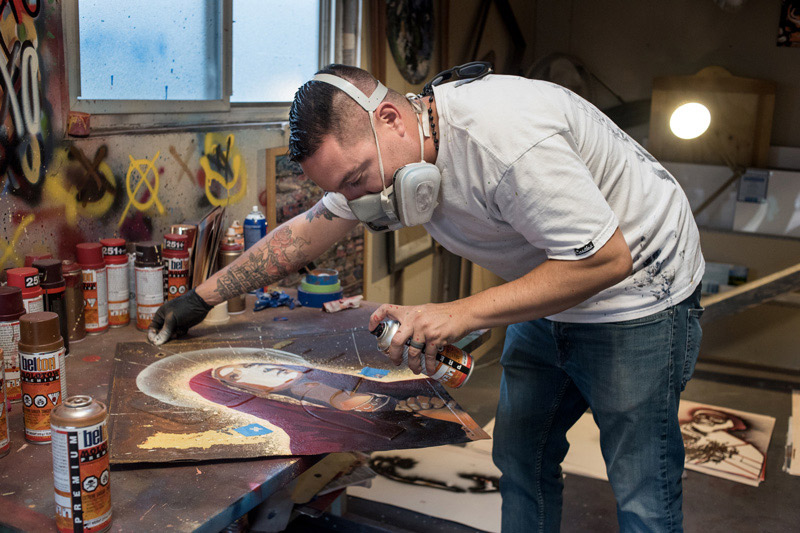 He has done a series of paintings of Lost Prophets that Evoke exhibited last year.
He has done a series of paintings of Lost Prophets that Evoke exhibited last year.
“This is the most in depth meaning that I've tried to put into any of my work. It was circulated around an issue that had been eating at me for years. I've lost several friends and family members to drug addiction and suicide and other mental health issues. When fentanyl hit Española we didn't know what was going to happen the next time the phone rang. Many of my friends was just falling victim to this and it was something that was bothering me quite a bit. Just like the homeless crisis in Española. People were more irritated about the fact that they had to deal with this crisis than having sympathy towards the people that were going through it. These people were my friends and family members, so I was sympathetic because when I see people, I see people. Everybody's a person, and I guarantee everybody in this world has made bad choices. Maybe some of them worse than others. That doesn't dictate who they are.”
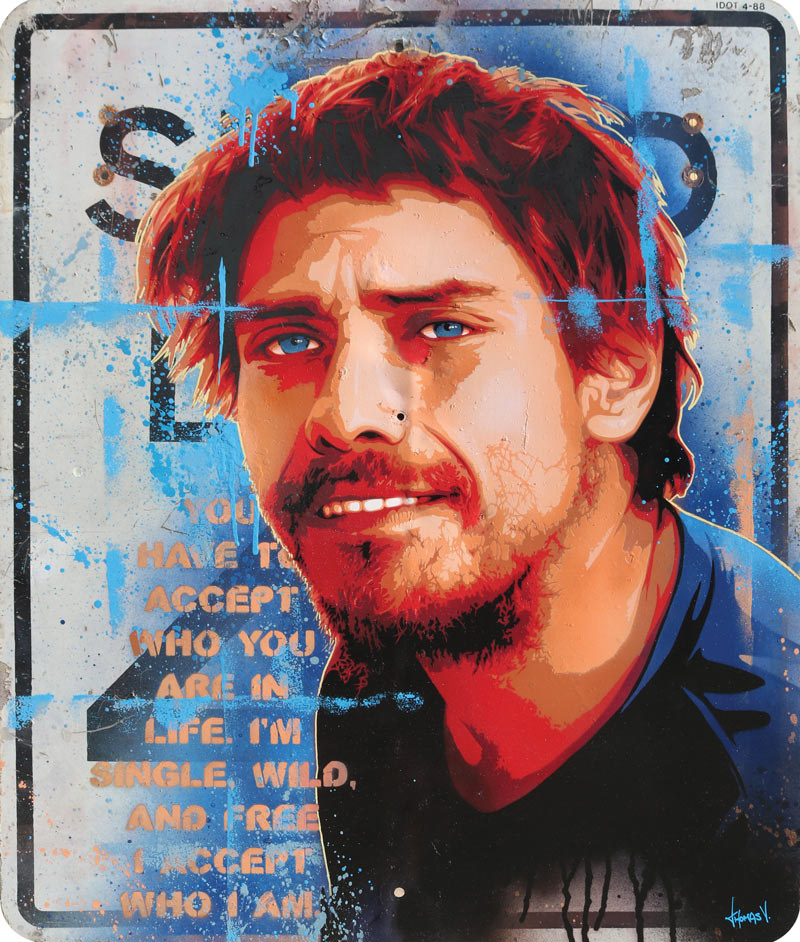 One of the paintings in Lost Prophets (which references the iconic saints and prophets in many of his paintings) is Mad Max, painted, prophetically, on a speed limit sign. Thomas wrote the following to accompany the painting:
One of the paintings in Lost Prophets (which references the iconic saints and prophets in many of his paintings) is Mad Max, painted, prophetically, on a speed limit sign. Thomas wrote the following to accompany the painting:
When I met Max he was talking to himself and singing songs. As I approached him he was very inviting, asking me to sit down, offering me a cigarette, and even some tortillas. Max has the type of face that can change from completely happy and full of life to completely lost in a moment. Max is 27 and says he's lived on the streets most of his life. He lived with his brother a few years back in Santa Fe, but was kicked out after a physical altercation that left his brother hospitalized. I asked him if he had any other family. His mom lives in California, but he hasn't seen her since he was an adolescent. He left home in his teens to pursue "girls, music, and drugs:' He left home for the music and girls, but stayed for the drugs. Max is addicted to Methamphetamines and "blues" (blues referring to an illegally manufactured pill form of Fentanyl flooding the Española Valley.)….
Despite his situation, Max is hopeful. He doesn't feel like his life is over. He believes he can find a job and a home. I asked him if he could go back, what he would do differently. He answers quickly with a smirk. "I wouldn't do anything different. You have to accept who you are in life:” His smile grows. "I'm single, wild, and free. I accept who I am!"
Thomas is married with two children and has a full-time job at Los Alamos National Labs where he manages a nuclear waste facility. “I am very, very structured at work. I am very much about rules and regulations and I'm strict about it. I want that facility to be safe and compliant and everybody to do as they're told all the time. It’s necessary because what we do is important and dangerous, not just for the workers but for the environment and the public.”
Then there is the 38-year-old rebel and the rule breaker who transcends the preconceptions about street art to create colorful, complex and meaningful works of fine art.
Prominent on his arm, among other religious tattoos is Exodus 3:14. “This is one of the most relatable scriptures that I could think of from the Bible,” he relates. “Moses asked God, ‘Who do I tell people you are?’ and God answered, “I am who I am.” I’ve always felt that way. I'm unapologetically me.”
View work by Thomas Vigil ►
September 8, 2024
Nicholas Herrera | San Isidro II
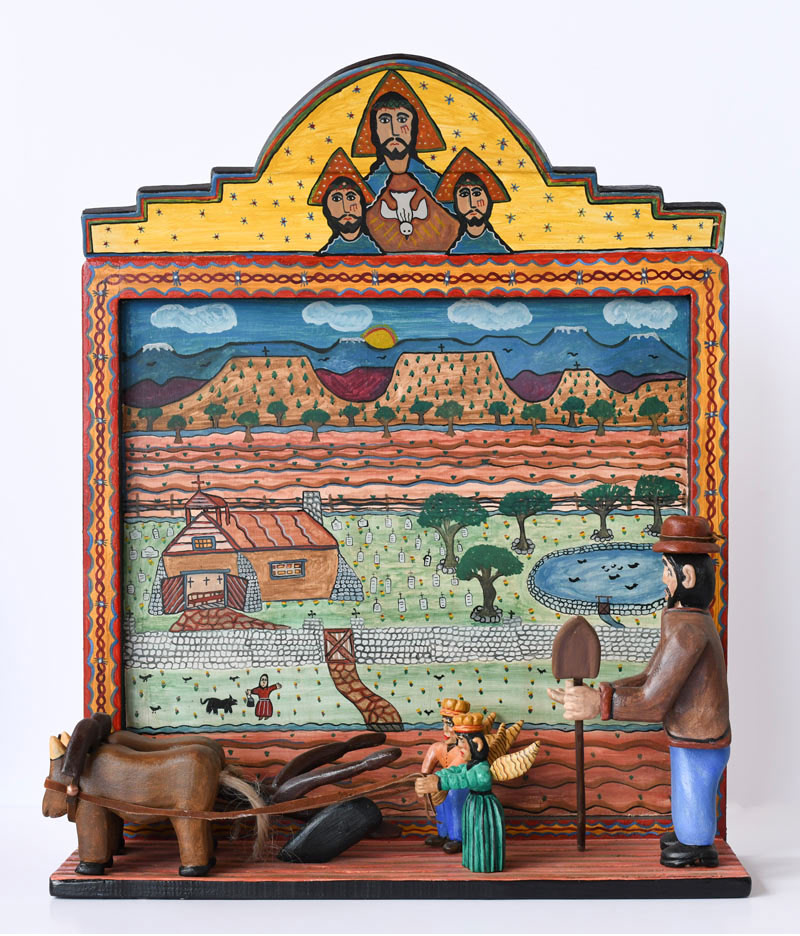
Nicholas Herrera is a man of the land—land that his family has worked since the 1820's. “My family came from Extremadura, Spain, through the Canary Islands then to Mexico. They came into New Mexico in 1598 with the earliest Spanish settlers and then some came later with de Vargas.”
Those earliest Spanish settlers crossed the Rio Grande near El Paso and claimed the land to the north for Spain which became the New Spain territory of Santa Fe de Nuevo México. Diego de Vargas came about 100 years later and became its governor.
“So these people, when they came, there was nothing here,” Nicholas explains. “They had to clean up all these lands, they had to plow it and you know, take all the rock out and dig all the ditches.” The ditches, or acequias, are gravity-fed channels that bring water to the fields and gardens. He still maintains them today.
When I visited him recently in El Rito, north of Santa Fe, I met his horses, dogs, a very noisy rooster and ate peaches from his orchard. The land is flat beneath the El Rito Mountains where his ancestors grew potatoes. “The first settlers that were up there were killed by the Comanches. One of my great, great, great grandfathers decided to reclaim it. He started planting potatoes and he knew how to make vodka.”
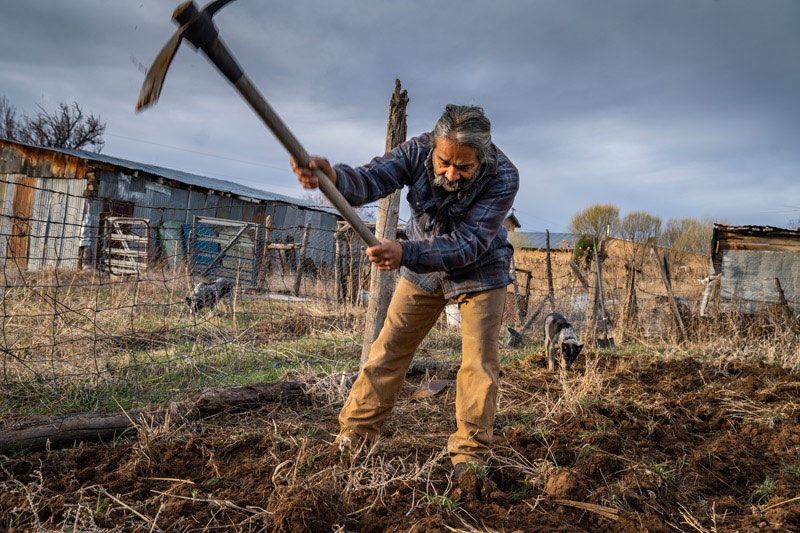 He says, “You know, I'm always in the mountains alone and I pray to God and I do my thing. You know what I mean? I try to be nice to people because before that, I wasn't that nice. Before that wreck. You know, everything changed. Because you realize that life is too short.”
He says, “You know, I'm always in the mountains alone and I pray to God and I do my thing. You know what I mean? I try to be nice to people because before that, I wasn't that nice. Before that wreck. You know, everything changed. Because you realize that life is too short.”
The “wreck” was a car accident when he was in his early 20s that left him in a coma in the hospital. His life as a rebel came to an end and he emerged with a vision to become a santero, a saint maker. The vision was of a muerte, a death figure, carved by his great uncle José Inés Herrera known as the Santero de la Muerte (Saint-maker of Death) because he specialized in carving death carts and death figures. His Death Cart, carved at the beginning of the last century, is in the collection of the Denver Museum of Art.
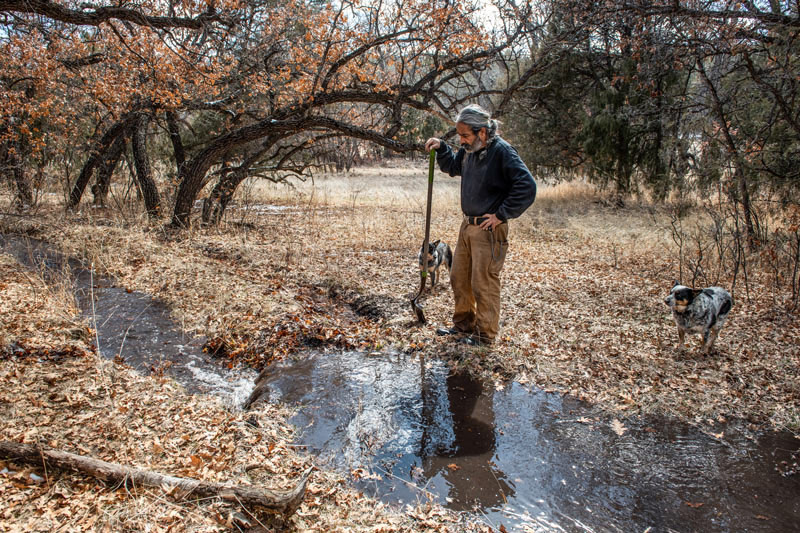 On September 21, the Harwood Museum in Taos will open Nicholas Herrera: El Rito Santero, his first solo museum exhibition. The museum notes, “As a modern santero, Herrera creates bultos, retablos, and large-scale mixed media works, many of which detail rich and often challenging chapters in his storied life. Through varied mediums, this exhibition surveys Herrera’s personal identity, family history, relationship to place, and political ideology. Still a ‘village artist,’ Herrera continues to reside, regenerate, and create on the land of his family.”
On September 21, the Harwood Museum in Taos will open Nicholas Herrera: El Rito Santero, his first solo museum exhibition. The museum notes, “As a modern santero, Herrera creates bultos, retablos, and large-scale mixed media works, many of which detail rich and often challenging chapters in his storied life. Through varied mediums, this exhibition surveys Herrera’s personal identity, family history, relationship to place, and political ideology. Still a ‘village artist,’ Herrera continues to reside, regenerate, and create on the land of his family.”
Self-taught and carrying his youthful rebellion into his art, Nicholas found himself among the great santeros with works in the Smithsonian and major museums across the country.
“There's a lot of sophisticated artists that were well educated at the university,” he says. “They went to art schools. I’m the bandido, that came from the mountains. You know what I mean? It's like I'm competing with big time artists, but you know, I'm my own deal. I got my own thing going.
“I was just doing art that I liked. My mom used to work for people. There was this woman called Eleanor Haas and her husband Lez Haas and they were artists. There were all these artists and my mom would go clean their homes and they became friends. And I would sometimes go with my mom. They give me brushes and canvases, so I just got into it.”
While getting into art he also got into trouble, ending up in jail in Los Alamos for a few months. While there, a guard admired his drawings and he started trading them for cigarettes.
“He was a really cool guy, Native American. When I was gonna get out, he says, well, my wife's a curator at the Fuller Lodge and she wants you to have a show. So, it's like the good Lord put everything in place for me. Like, you have a chance now do it. If not, that's going to be the end. So that's when I went all the way with my art. I just started hustling with my art. Just going to museums. Some of them laughed at my work and wanted nothing to do with it. They were all freaked out, like it's a little too crazy.”
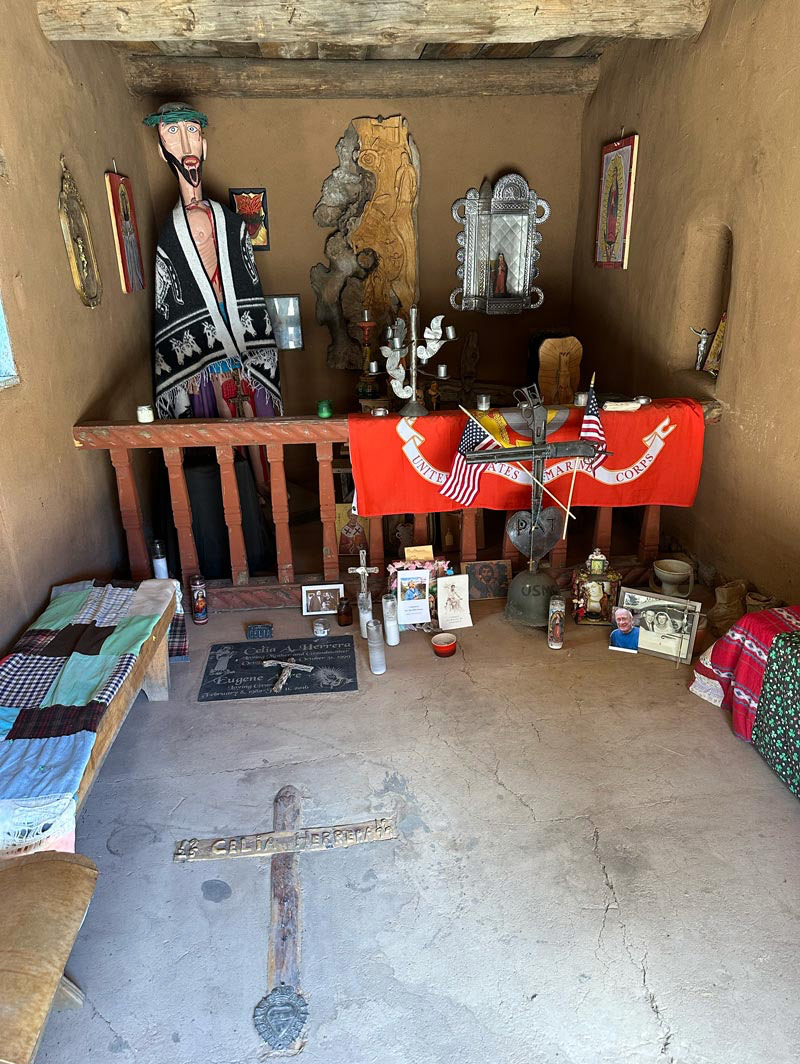 In the early aughts I was a novice in the world of the art of the American West and what is referred to as contemporary Spanish Colonial art. My friend Stuart Chase was executive director of the then Rockwell Museum of Western art in Corning, NY, where I lived, and introduced me to the best of the best. He always said, “You’d love Santa Fe!” to which I always responded, “Who the hell wants to go to Santa Fe?” Having lived here for 17 years now, I can attest to this being not only the “Land of Enchantment” but the “Land of Entrapment.” Stuart and his wife, Julie, now live in nearby Chimayó.
In the early aughts I was a novice in the world of the art of the American West and what is referred to as contemporary Spanish Colonial art. My friend Stuart Chase was executive director of the then Rockwell Museum of Western art in Corning, NY, where I lived, and introduced me to the best of the best. He always said, “You’d love Santa Fe!” to which I always responded, “Who the hell wants to go to Santa Fe?” Having lived here for 17 years now, I can attest to this being not only the “Land of Enchantment” but the “Land of Entrapment.” Stuart and his wife, Julie, now live in nearby Chimayó.
I first came to the area at the invitation of Michael Bergt whose work I had shown in an exhibition. I kept coming back and on one visit went to a gallery on Palace Avenue and saw a piece by one Nicholas Herrera. It wasn’t work I expected to see from a santero.
La Virgin Nos Guia Pro el Camino (The Virgin Guides Us Down the Road) was an image of the Virgin of Guadalupe behind an old car grill and two headlights (one lit and one unlit) above a rusty license plate and a car bumper.
Nicholas explains, “It was inspired by an event in my own life that happened when I was in my 20’s. I remember going down the road one night back, all drunk. I was seeing three roads in front of me and I knew I might not get home. I prayed to the Virgin of Guadalupe to get me home safely. Then I closed one eye and saw just one road and I was able to follow that. So that is way just one of the lights is working and why I carved and placed the Virgin behind the grill.
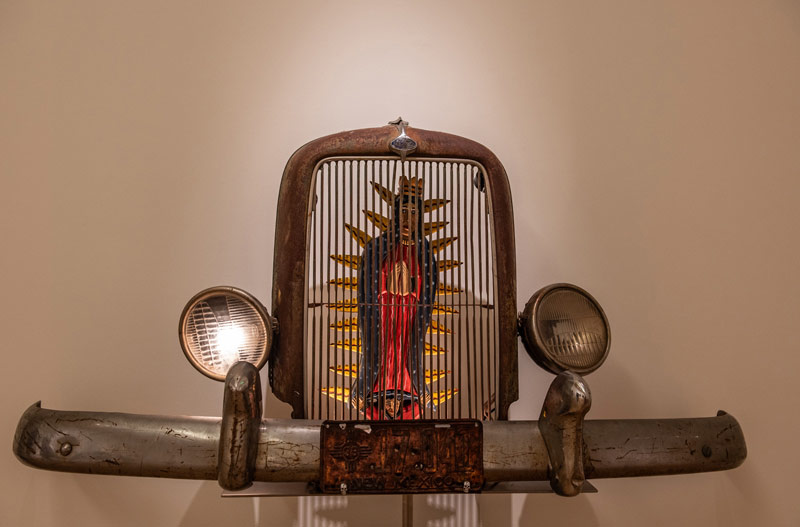 The car parts come from a pile of “collectibles” he has brought home since he first went with his father to what we used to call “the dump”. Walking into the field of accumulated stuff I saw a rusted car that was still recognizable as a Studebaker--minus the bumper that I had seen in the sculpture.
The car parts come from a pile of “collectibles” he has brought home since he first went with his father to what we used to call “the dump”. Walking into the field of accumulated stuff I saw a rusted car that was still recognizable as a Studebaker--minus the bumper that I had seen in the sculpture.
Some of the stuff composes sculpture placed around the property, including La Corona, inspired by COVID-19, the Coronavirus.
“To me,” he says, “this sculpture is a reminder that this virus is real and happening all around us – it represents the Angel de la Muerte or Angel of Death, who can come for any of us at any time. She holds the scales of heaven and hell, weighing your sins. She is made of recycled vintage car and tractor parts – the main body is a hood from a 1947 Chevy Master Deluxe, the ribcage is a Case tractor from the 1940’s, the bumper is from a 1930’s Chevy and the head is formed from a headlight from a 1929 Dodge. The hair is made from snow chains and the crown is an old chamber pot or pail. The head of the raven on her arm is an auto horn from the 1920’s and the feathers are cut from an old 1920’s Dodge hood. She holds a scythe from the 1800’s.”
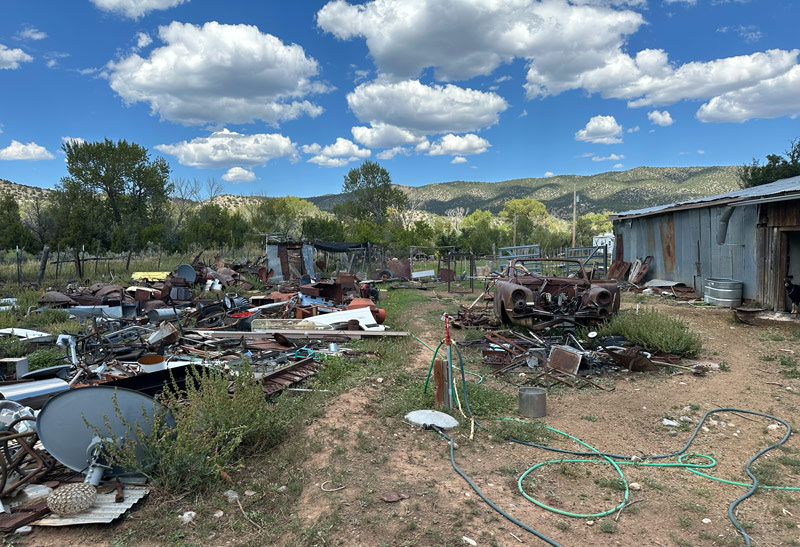 When I referred to Nicholas as a man of the land, I was thinking of a smaller, carved and polychromed bulto of San Isidro Labrador, the patron saint of farmers and rural communities. I live in Agua Fria Village, a Traditional Historic Community founded in 1640 and whose local church is dedicated to San Isidro. I often attend the traditional blessing of the fields and river on the saint’s feast day.
When I referred to Nicholas as a man of the land, I was thinking of a smaller, carved and polychromed bulto of San Isidro Labrador, the patron saint of farmers and rural communities. I live in Agua Fria Village, a Traditional Historic Community founded in 1640 and whose local church is dedicated to San Isidro. I often attend the traditional blessing of the fields and river on the saint’s feast day.
As a farm worker in Madrid, San Isidro would attend Mass in the morning while his fellow workers began their hard labors. They complained to the landowner that he was shirking his duties but they found that while he was at Mass, two angels had been doing his work in the fields.
 San Isidro II depicts the saint with 2 angels carved in wood, polychromed, and mounted in front of a painting of a village church with its open doors and pews and stations of the cross visible inside. Generations of ancestors are buried in the churchyard.
San Isidro II depicts the saint with 2 angels carved in wood, polychromed, and mounted in front of a painting of a village church with its open doors and pews and stations of the cross visible inside. Generations of ancestors are buried in the churchyard.
I looked and saw a lot of art when visiting Nicholas in El Rito, but San Isidro II, in a way, sums him up—his faith, his dedication to the land and to those who came before, and his unique talent for creating art with roots in tradition that is capable, sometimes, of making people “all freaked out”.
“You know,” he says, “I do traditional art, but like I completely changed it--to my way.
It's a new time. It's a new era. You know my grandfather, my ancestors, did their thing in their time. Now it's my turn.”
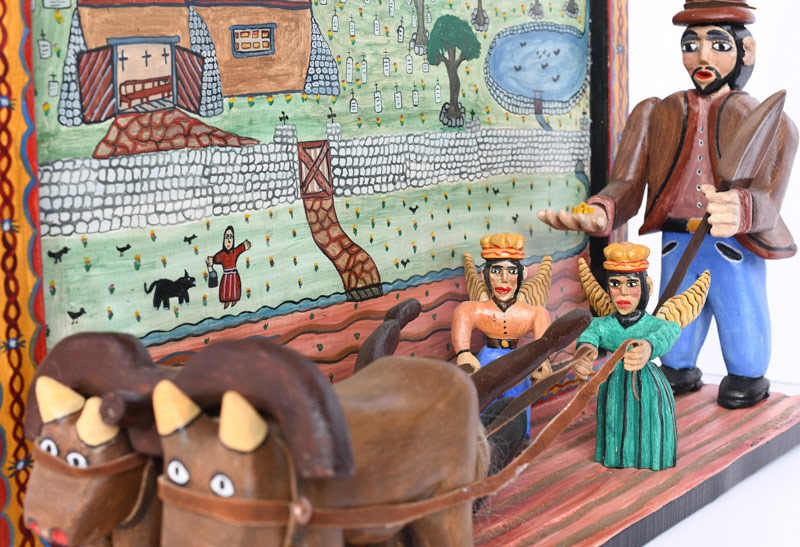 When I referred to Nicholas as a man of the land, I was thinking of a smaller, carved and polychromed bulto of San Isidro Labrador, the patron saint of farmers and rural communities. I live in Agua Fria Village, a Traditional Historic Community founded in 1640 and whose local church is dedicated to San Isidro. I often attend the traditional blessing of the fields and river on the saint’s feast day.
When I referred to Nicholas as a man of the land, I was thinking of a smaller, carved and polychromed bulto of San Isidro Labrador, the patron saint of farmers and rural communities. I live in Agua Fria Village, a Traditional Historic Community founded in 1640 and whose local church is dedicated to San Isidro. I often attend the traditional blessing of the fields and river on the saint’s feast day.
As a farm worker in Madrid, San Isidro would attend Mass in the morning while his fellow workers began their hard labors. They complained to the landowner that he was shirking his duties but they found that while he was at Mass, two angels had been doing his work in the fields.
View work by Nicholas Herrera ►
August 30, 2024
BRIAN REGO | Faulkner's Cabin
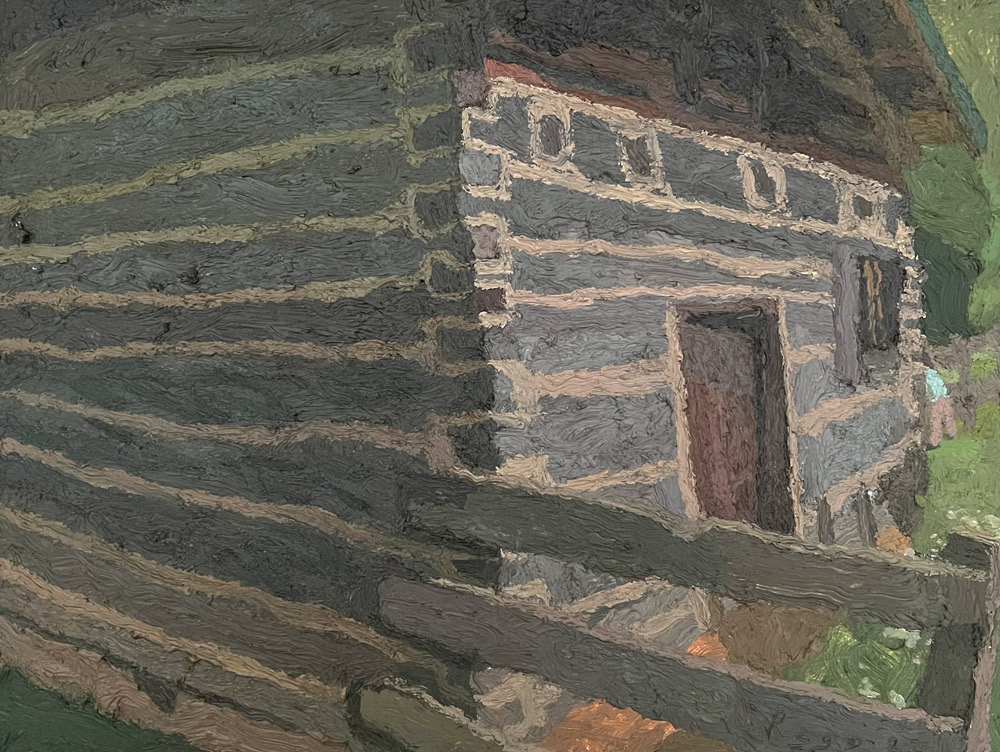
The art world is a small one. Within it, the world of representational art is even smaller.
The painting I’ve chosen for this week’s ramble is Brian Rego’s Faulkner’s Cabin. As I watched his videos and looked at his art, I kept asking myself “How do I know this guy?” I decided to run a search of my Dropbox folders for “American Art Collector” and, lo and behold, in May 2014, I had written an article on Perceptual Painters, an artists collective that Brian had founded with a group of friends and fellow artists.
At the time, Brian told me the artists paint from nature and the model, relishing “the kind of energy that exists working directly from the motif. We don’t work from photographs. I think there is an exchange between the motif, the painting, and the painter that only occurs working from life. That’s one of our core sensibilities.” As he has grown in his art and observational skills, that remains a core sensibility.
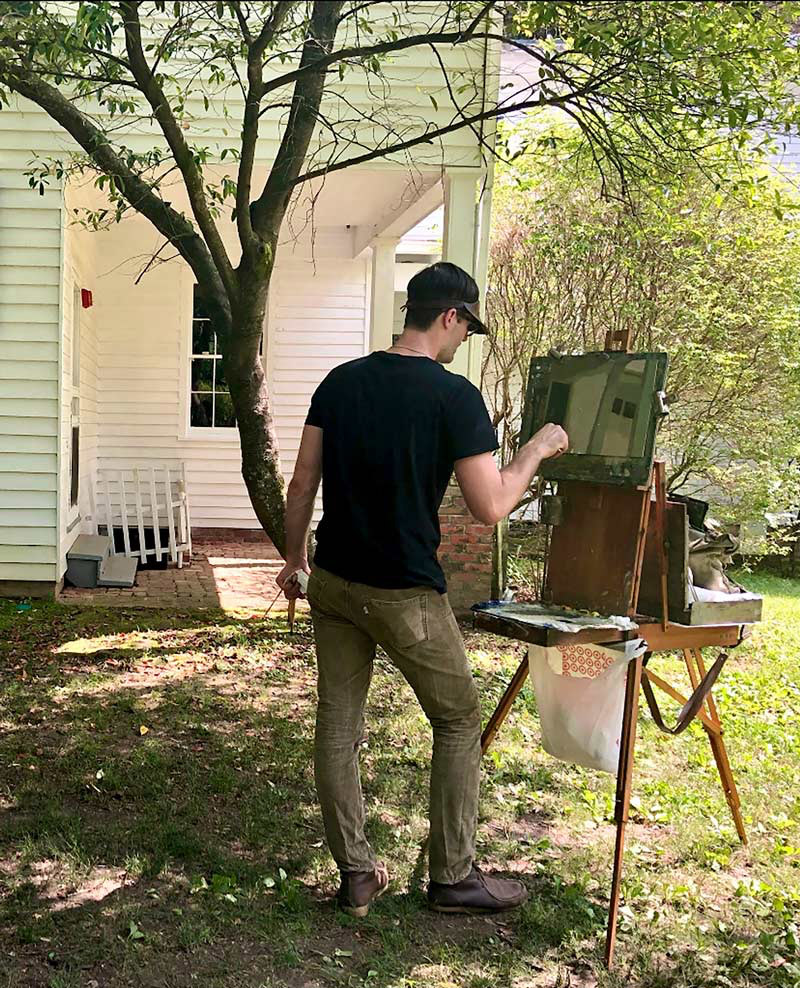 Back home, Brian painted Faulkner’s Cabin at Rowan Oak, William Faulkner’s home in Oxford, Mississippi. He has often shared workshop teaching duties with his close friend Philip R. Jackson, Associate Professor of Art and Painting Area Head at the University of Mississippi Oxford. One of their frequent subjects is Rowan Oak.
Back home, Brian painted Faulkner’s Cabin at Rowan Oak, William Faulkner’s home in Oxford, Mississippi. He has often shared workshop teaching duties with his close friend Philip R. Jackson, Associate Professor of Art and Painting Area Head at the University of Mississippi Oxford. One of their frequent subjects is Rowan Oak.
I had met Philip in 2005 when he was an art instructor at Columbus College of Art and Design in Ohio when I was there to give a lecture on contemporary representational art.
Faulkner acquired the run-down property in 1930 and named it Rowan Oak after two trees: the rowan or mountain ash tree of Scotland, a symbol of peace and security, and the live oak of America, a symbol of strength and solitude. He used the 1840s log cabin to house his milk cow and lawn tools.
When Brian was studying for his MFA at the Pennsylvania Academy of the Fine Arts (PAFA), he felt the kind of art he and his friends were interested in wasn’t supported strongly enough. He explains, “There was a small faction of us who were thriving and Scott Noel was an advocate for what we were interested in. He introduced me to painters I had not been aware of and provided a space for us to explore. He was like our guiding light in that environment.”
Scott, who began teaching at PAFA in 1980, also figures in Brian’s Rowan Oak experience. He suggests that passages in Faulkner’s novel The Sound and the Fury were very poetic and his “observations were so painterly”. One of my favorite passages is “I could smell the curves of the river beyond the dusk and I saw the last light supine and tranquil upon tideflats like pieces of broken mirror, then beyond them lights began in the pale clear air, trembling a little like butterflies hovering a long way off.”
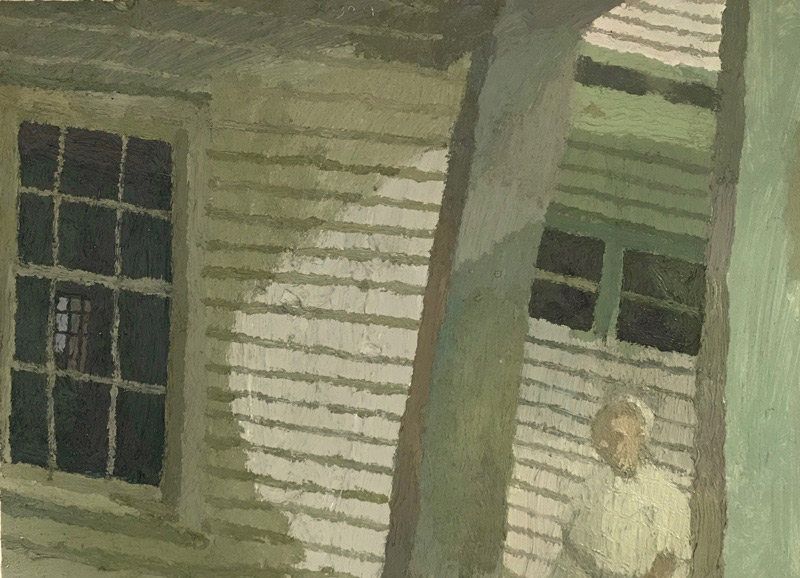 Another painting Brian produced at Rowan Oak is Faulkner's House, the writer’s 1840s Greek Revival home. There is a photo of Brian painting it on site—before the addition of a figure that you can see in the finished painting.
Another painting Brian produced at Rowan Oak is Faulkner's House, the writer’s 1840s Greek Revival home. There is a photo of Brian painting it on site—before the addition of a figure that you can see in the finished painting.
The composition of Faulkner’s Cabin is complex. I like paint and was immediately drawn to the painting because it appears that Brian built the cabin out of paint applied in thick impasto. The fence rails, emerging from the lower right of the composition are nailed onto the finished logs of the cabin, forming a line that continues off the edge of the panel on the left. There is more activity in the space to the right of the juncture of the cabins side and front walls.
The solid space of the cabin and the air around it aren’t static, he explains. “Space cannot be inanimate. It’s completely animated. Forms in space are constantly moving, concealing and revealing. The shape of the space is constantly changing.”
Always hung up on narrative, I asked him if the figure in the painting is Faulkner working in his garden. “The figures emerge from the subconscious,” he replied. “They’re compositional. I always ask, ‘Where does this figure need to exist?’ In this painting, I wanted to compress the scale of the cabin. The role of the figure is not to establish a narrative but I Iove to hear the narratives people bring to the paintings.”
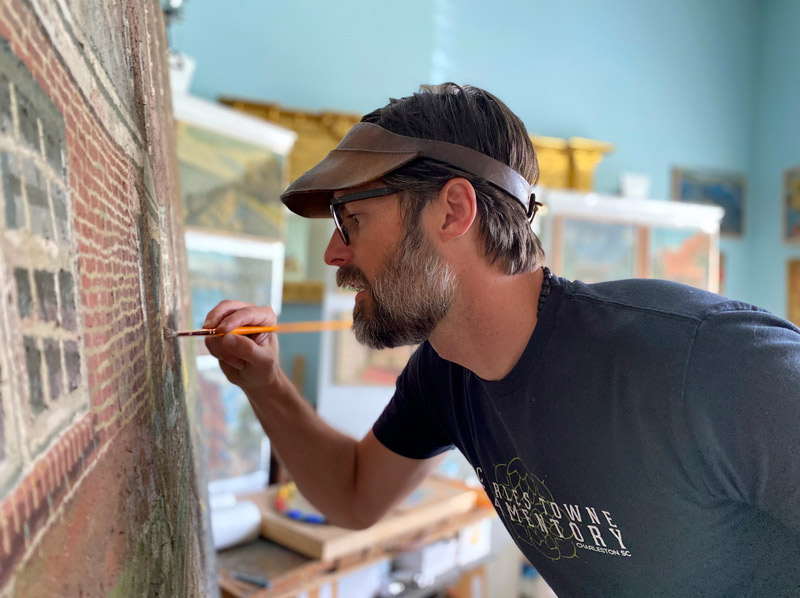 Brian’s orientation to nature is spiritual. “We sense a kinship with nature. It’s part of us and we’re part of it. On a physical level we come from it and we return to it. There’s beauty and unpredictability, order and disorder, reconstruction and reconstruction. There’s the intelligence of nature. There are visual phenomena and those that can be described by physics, and there is the metaphysical. I sense all that happening at once. It’s profound, both present and timeless. It’s the miracle of existing, the fact that it even exists and even seems to exist beyond itself.”
Brian’s orientation to nature is spiritual. “We sense a kinship with nature. It’s part of us and we’re part of it. On a physical level we come from it and we return to it. There’s beauty and unpredictability, order and disorder, reconstruction and reconstruction. There’s the intelligence of nature. There are visual phenomena and those that can be described by physics, and there is the metaphysical. I sense all that happening at once. It’s profound, both present and timeless. It’s the miracle of existing, the fact that it even exists and even seems to exist beyond itself.”
When I ran an architecture unit for the Western New York Institute for the Arts in Education for children from kindergarten through high school, I found fourth graders to be the most exciting. They had insights and the confidence to express them. A few years later, peer pressure and the constaints of culture discouraged their expression.
Brian has found the same situation working with students and observes, “It’s the rare older student who has that innocence.” In his own work, as he manipulates the physicality of the paint to express volume and space and to communicate symbolically something that exists beyond the observable subject, he maintains a sense of innocence and wonder, “going out into the landscape and finding something I didn’t anticipate."
View work by Brian Rego ►
August 25, 2024
GUGGER PETTER | Dog with 3 People and Child
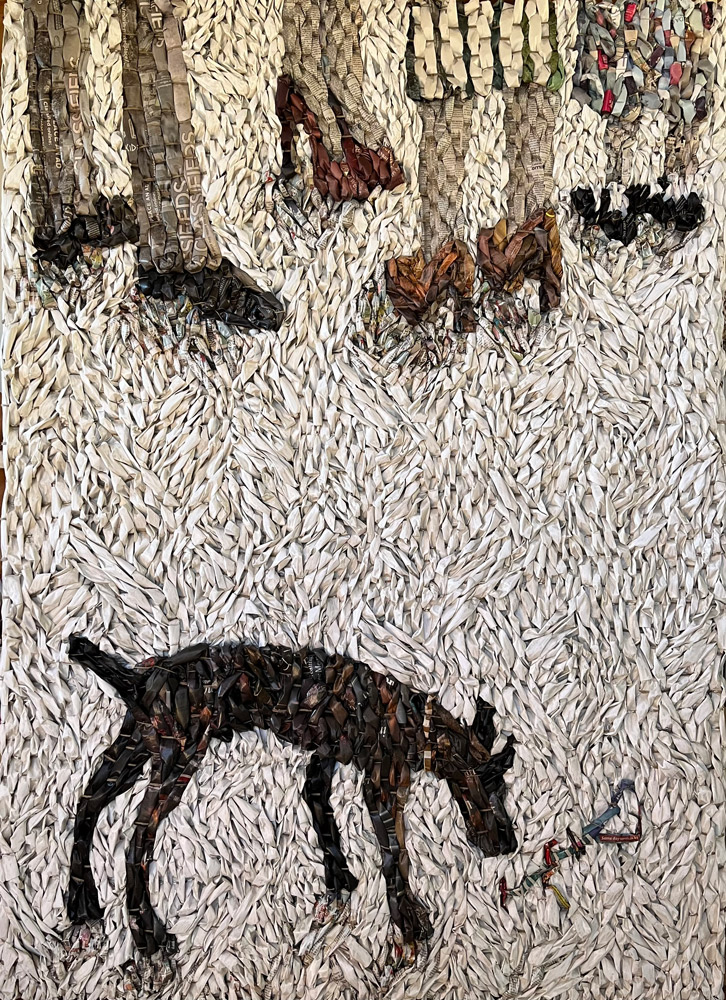
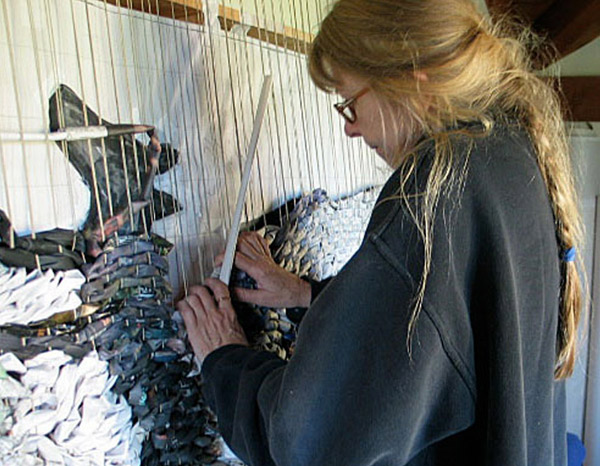 When I was a kid and rolled up sheets of newspaper and tied them into knots for kindling, little did I know that many decades later I would meet an artist who created portraits of Barack Obama, Bill Clinton and Crown Princess Mary of Denmark with rolled newspaper. Gugger Petter has done just that and shows her current work at Evoke.
When I was a kid and rolled up sheets of newspaper and tied them into knots for kindling, little did I know that many decades later I would meet an artist who created portraits of Barack Obama, Bill Clinton and Crown Princess Mary of Denmark with rolled newspaper. Gugger Petter has done just that and shows her current work at Evoke.
My parents bought what became our family home when I was 3. My mother had told her friends when she moved to Scituate, MA, that she would one day own that particular house. They laughed. After having married my father, had my brother and, 8 years later, me, my father charmed Annie Edson, the wonderful old Yankee lady who owned the house into selling it to them. Her stipulation was that she would live there until she died. She lived in the apartment on the second floor in the 1833 residence that she had run as an inn. Annie often took me by the hand and, carrying a basket, would have me pick up twigs in the yard that she would use for kindling in her fireplace.
My aunt would drop off the Sunday papers after early Mass and when we would later wander into the living room, Annie would be sitting there in my father’s chair reading the papers, dropping the pages around her on the floor. She taught me to roll the pages, make a knot, and she took them upstairs for additional kindling.
When Gugger moved to California 1986 she was intrigued by the way the sun yellowed newspapers and began to think about how she could use newspapers as a medium in her art. Its limited color palette and fragility posed a problem but she found if she rolled the paper into a tube and actually limited her palette to the colors available she had the building materials for making 3-D wall and floor sculptures.
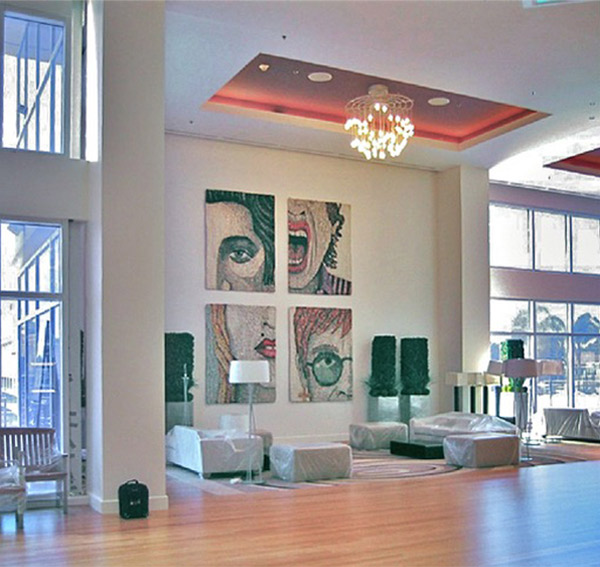 She had learned basic tapestry weaving in Mexico and adapted it to her own unique way of weaving the newspaper roles on a metal frame and varnishing it to make nearly indestructible compositions. They are so indestructible, in fact, that several survived the total destruction of the Hard Rock Hotel in Biloxi, MS, in Hurricane Katrina. When she saw video of the aftermath, on top of one of the piles of rubble was one of her 4 panels of rock stars that had been installed days before the grand opening that would never take place. When the hotel was rebuilt, Hard Rock dedicated a private space in the attic for relics of the disaster, including two of Gugger’s panels. The other two had floated out to sea.
She had learned basic tapestry weaving in Mexico and adapted it to her own unique way of weaving the newspaper roles on a metal frame and varnishing it to make nearly indestructible compositions. They are so indestructible, in fact, that several survived the total destruction of the Hard Rock Hotel in Biloxi, MS, in Hurricane Katrina. When she saw video of the aftermath, on top of one of the piles of rubble was one of her 4 panels of rock stars that had been installed days before the grand opening that would never take place. When the hotel was rebuilt, Hard Rock dedicated a private space in the attic for relics of the disaster, including two of Gugger’s panels. The other two had floated out to sea.
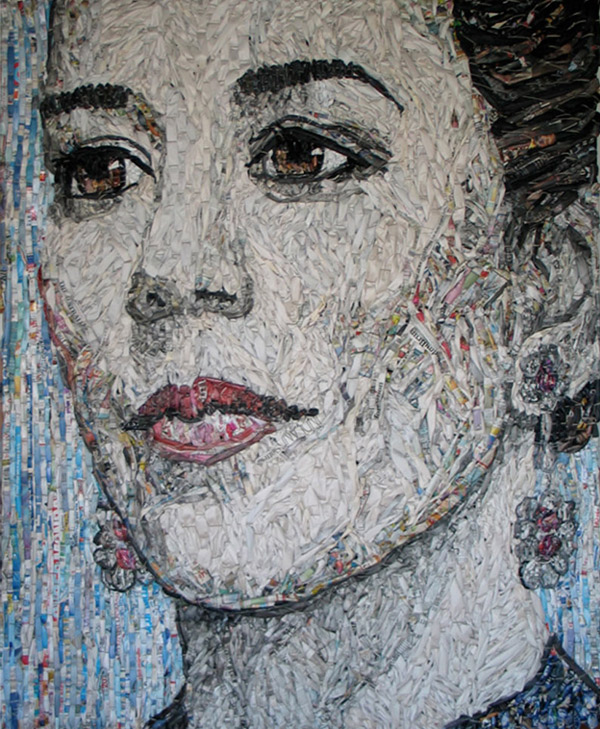 Lady Luck smiled on her after that, however, when, in 2007, her brother-in-law asked her to do a portrait of Barack Obama for his presidential campaign headquarters in Chicago. The ambassador of her native Denmark had seen the monumental portrait and asked later if he could borrow it for his official residence in Washington, DC. He kept asking for an extension of the loan and to thank her, invited her to lunch with Crown Princess Mary and Crown Prince Frederick of Denmark. (The couple are now king and queen.)
Lady Luck smiled on her after that, however, when, in 2007, her brother-in-law asked her to do a portrait of Barack Obama for his presidential campaign headquarters in Chicago. The ambassador of her native Denmark had seen the monumental portrait and asked later if he could borrow it for his official residence in Washington, DC. He kept asking for an extension of the loan and to thank her, invited her to lunch with Crown Princess Mary and Crown Prince Frederick of Denmark. (The couple are now king and queen.)
The Danish Museum of National History and Portrait Gallery in Frederiksborg Castle, asked Gugger for the loan of the Obama portrait. She suggested to the museum that it would be nice to have another portrait to go with it, telling them she would like to produce one of Crown Princess Mary. In 2012, Mary unveiled the portrait at the museum.
I lived briefly in northern Denmark when I studied at a photography school that promptly went bankrupt. Gugger asked if I can still speak Danish. I told her there is no “still” about it since I lived out in the country where the people have a heavy accent (which she acknowledged). I would practice what I needed to say when I went to get milk and eggs and gas for the hot water heater, but was then dead in the water. The Danish people were warm, welcoming and supportive, however, and often wanted to practice their English—especially the kids. It’s no surprise to me that these open-minded people would welcome a portrait made of newspaper of their soon-to-be queen into a national museum and that she would unveil it herself.
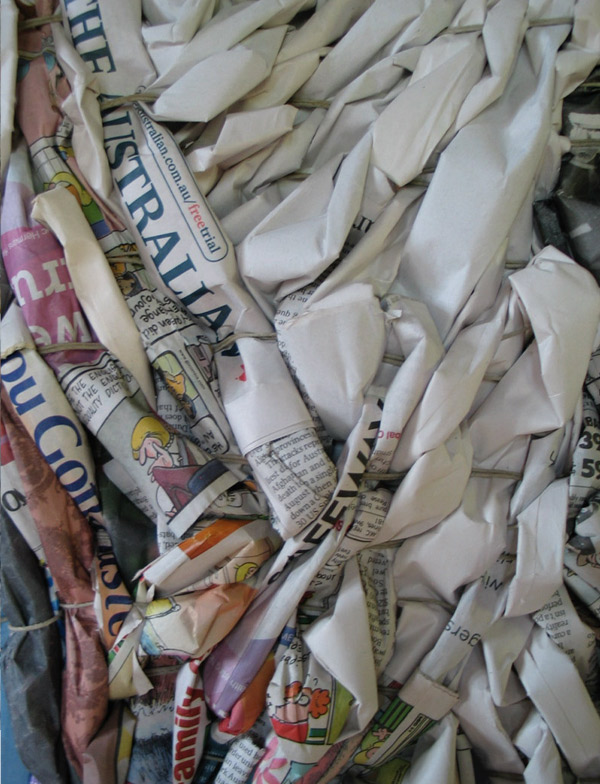 Given the complexity of her raw material and its assembly, I’m amazed by the subtleties she realizes in her portraits, especially this one of Queen Mary. She decided to face her subject toward the left, gazing into the future, using Danish newspapers on the left and newspapers from Mary’s native Australia on the right. She looked everywhere for Australian newspapers and eventually had to call the Danish embassy there to send her some—which they did, after a lot of convincing.
Given the complexity of her raw material and its assembly, I’m amazed by the subtleties she realizes in her portraits, especially this one of Queen Mary. She decided to face her subject toward the left, gazing into the future, using Danish newspapers on the left and newspapers from Mary’s native Australia on the right. She looked everywhere for Australian newspapers and eventually had to call the Danish embassy there to send her some—which they did, after a lot of convincing.
“As a child I loved going to museums,” Gugger says, “and this was my favorite museum. I always dreamed about living there--and today I do (a little bit) with my Mary work in permanent collection.”
Gugger no longer makes personalized portraits, concentrating now on enigmatic figurative compositions of people and animals. She describes them as embodying a “tension between opposites.” She controls the tension between positive and negative space, dark colors and light colors, detail and empty space, even energizing the space between male and female figures. Describing the latter, she says, “It’s not just a daily scene in a daily material. There’s much more behind it.”
“I find the informative aspect of newspaper quite important, “she says. “Since each piece I create holds all the world/local news of that particular time frame, it becomes an historic piece within itself. All artists date their oeuvre with great importance—reflecting their moment in time. My works not only hold a date, they also represent an historic documentation of our lives. This information may not be of importance to the viewer, but for me each piece becomes a diary.”
In Dog with 3 People and Child, a dog in the foreground occupies a negative space with no detail, contemplating an unknown object in front of him. Little bits of shadow ground the dog and the figures in the nebulous space. Gugger says, “The shoes and legs are arranged on the vertical and the background is totally chaos.”
“My works are usually monumental,” she explains. Dog with 3 People and Child is 62 by 45 inches. “You can see the totality of the work form a distance. Close up it transforms in a wonderful way into an abstraction. It can be viewed both ways. There is always ambiguity in my work. The story needs to be informed by the viewer. The subjects are anonymous. I need freedom when I work and I set the subjects free. Here we don’t know what kind of dog it is. It wears a collar so it belongs to someone but maybe not the people nearby.”
Dog with 3 People and Child invites us to wander visually around its surface, looking for details in the colored areas, enjoying the patterns in areas with no detail, and making up stories about the people and the dog, adding psychological tensions to the visual tensions, and having fun in the process.
View work by Gugger Petter ►
August 18, 2024
IRENE HARDWICKE OLIVIERI | Encantada
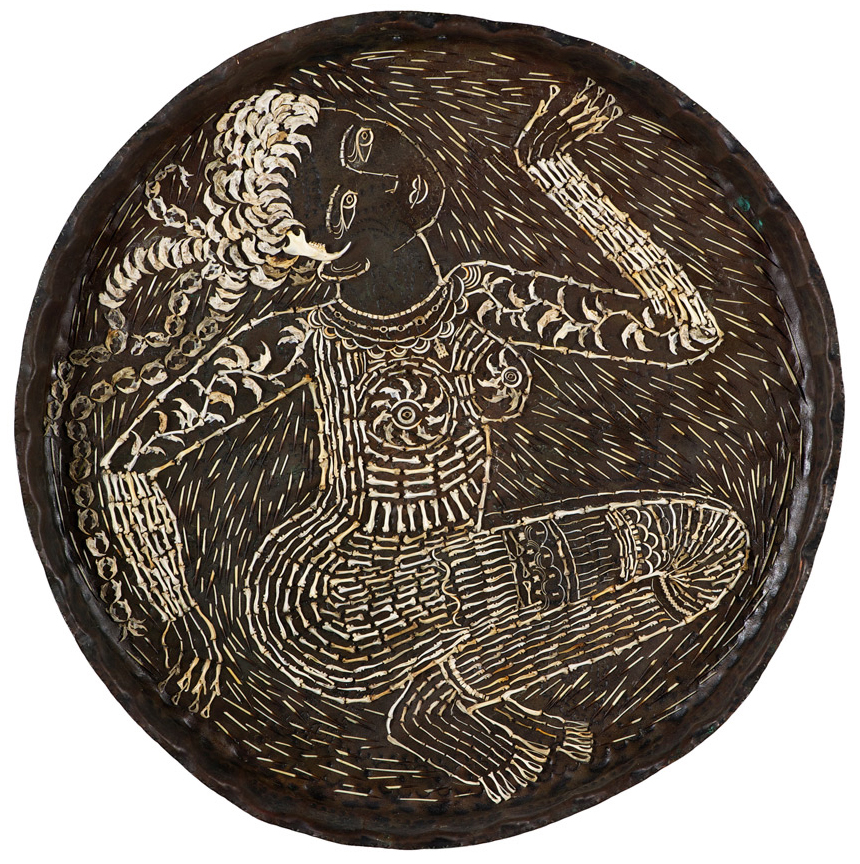
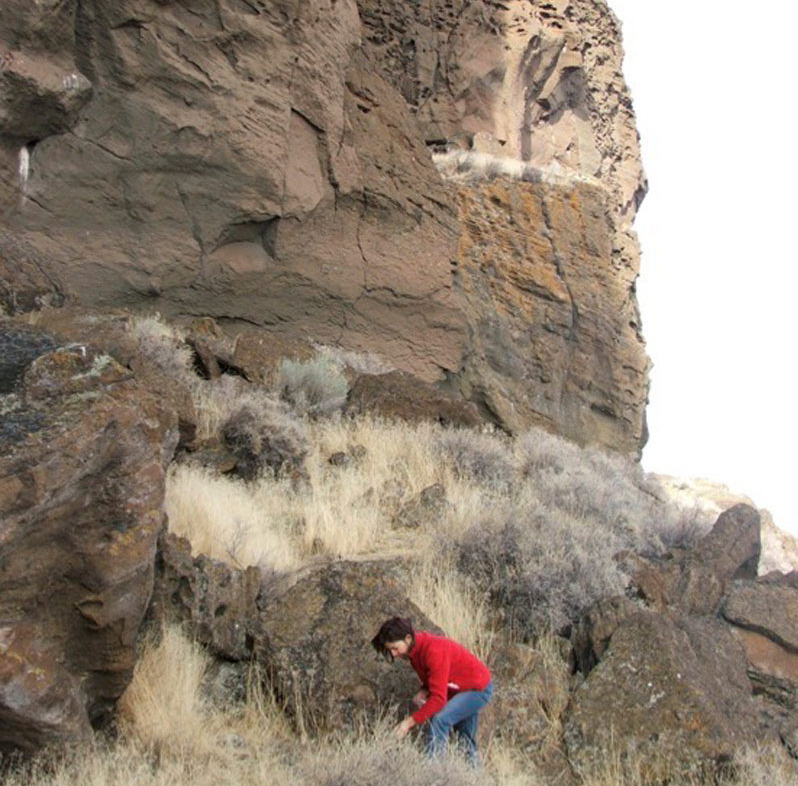 Irene Hardwicke Olivieri grew up in south Texas at the mouth of the Rio Grande. After a peripatetic lifetime of living everywhere from Central America to an off-grid home in Oregon to a lighthouse keeper’s cottage in Maine, she has settled in Santa Fe, in the Rio Grande Rift between the volcanic Jemez Mountains and the tectonic Sangre de Cristos. The valley and the mountains are full of the flora and fauna that have fascinated her since she was a child.
Irene Hardwicke Olivieri grew up in south Texas at the mouth of the Rio Grande. After a peripatetic lifetime of living everywhere from Central America to an off-grid home in Oregon to a lighthouse keeper’s cottage in Maine, she has settled in Santa Fe, in the Rio Grande Rift between the volcanic Jemez Mountains and the tectonic Sangre de Cristos. The valley and the mountains are full of the flora and fauna that have fascinated her since she was a child.
“Other than New York,” she says, “This is the first time I’ve lived in a town. We’d been living way out and I miss seeing wild animals in the back yard like bobcats and bears. She and her husband have favorite mountain trails and collect rocks, bones and plants on their hikes. They have even set up a trail cam with a motion sensor in a remote canyon in the mountains to observe the animals that visit its tiny spring. “You get to see who’s wandering unseen,” she observes. “The little spring of water is only the size of a plate but it’s a magnate for everything. They love it and so do we.”
When I first moved to Santa Fe 17 years ago, I went on hikes in both mountain ranges with Roshi Joan Halifax and folks from Upaya Zen Center. Naturalists in the group would point out things I, for one, didn’t see, including deer and coyote scat—their droppings along the trail. The only interest I had had in such things in the past had been avoiding cow flaps when we ran barefoot through the pastures on the New Hampshire farm where we vacationed each July. Identifying the scat on the trails and its age, is a helpful guide to who is sharing the environment with you.
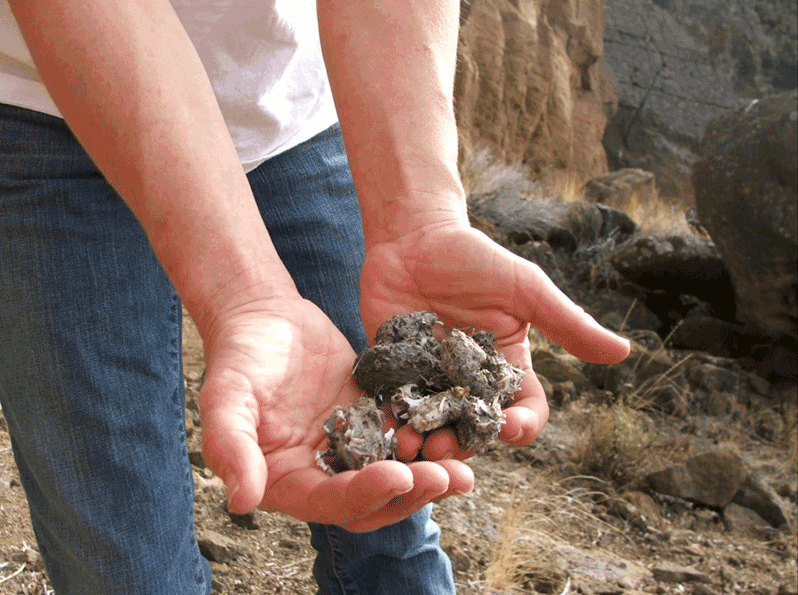 When she was living in Oregon, looking and seeing as she hiked, Irene found several owl pellets, the coughed up, undigested bones, teeth and fur of the owl’s last meal. She relates, “One day we were at this incredible place called Fort Rock. There are giant cliffs and at the bottom of one there were all these owl pellets, hundreds of them. I was so excited. I couldn't believe it. I didn't know what I was going to do with them, but I had a backpack and I started to fill it. My husband said, ‘What are you going to do with them?’ I said, ‘I don't know, but I need them for something.’”
When she was living in Oregon, looking and seeing as she hiked, Irene found several owl pellets, the coughed up, undigested bones, teeth and fur of the owl’s last meal. She relates, “One day we were at this incredible place called Fort Rock. There are giant cliffs and at the bottom of one there were all these owl pellets, hundreds of them. I was so excited. I couldn't believe it. I didn't know what I was going to do with them, but I had a backpack and I started to fill it. My husband said, ‘What are you going to do with them?’ I said, ‘I don't know, but I need them for something.’”
She explains, “It's all out there just waiting for us. It's like this incredible world of everything and anything that you want to learn about, be it a plant or an animal like a gila monster that you see for the first time. I like to read about it as much as I can and it just opens up a whole world of interest for me."
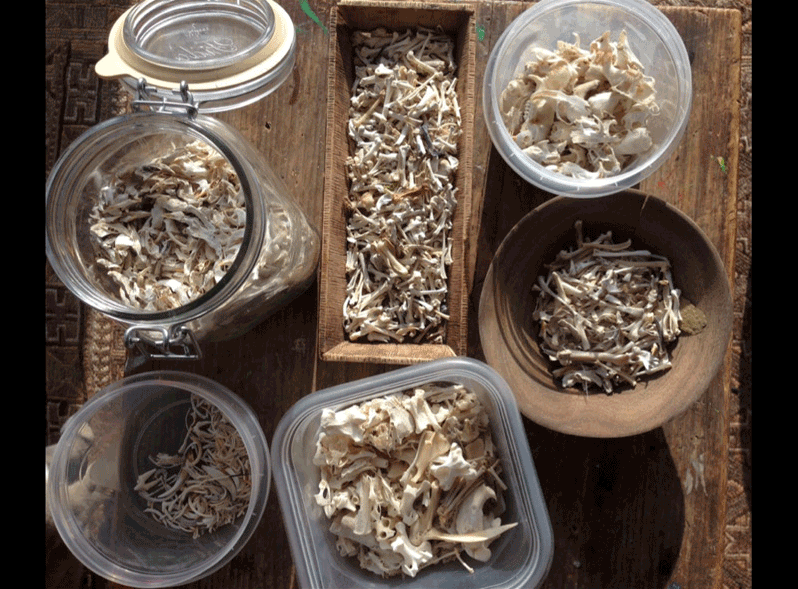 Back home, after collecting the owl pellets, she tried soaking them in water—which made a mess. In her research, she learned that she should sterilize the pellets by baking them in the oven at 300 degrees. After that, and airing out the house from the smell, she began dissecting them, sorting out the ribs, jaws and other bones with tweezers.
Back home, after collecting the owl pellets, she tried soaking them in water—which made a mess. In her research, she learned that she should sterilize the pellets by baking them in the oven at 300 degrees. After that, and airing out the house from the smell, she began dissecting them, sorting out the ribs, jaws and other bones with tweezers.
The bones have found their way into complex yet subtle compositions that appear from afar to be like sgraffito or the scratchboards we all made as kids.
One of those pieces, Encantada (Spanish for enchanted) will be shown at Evoke in her exhibition, Honey in the Desert, that opens August 30. Irene explains, “I thought I really want to make alluring figures out of the bones. So, from a distance you would think ‘Ah, there’s a very alluring woman.’ But she’s really made out of bones.”
Encantada is composed on a round copper tray. “I’ve had that tray for years,” she explains. “I think I got it at some antique store or junk store. I collect all kinds of stuff. I like round things and I wanted the piece to be very graceful and beautiful. I also thought I needed something that would be protective around the edges.”
When she was working on the figure, she came upon a recently deceased porcupine. “There was no blood and it was clean,” she explains. As she went through the arduous task of removing its quills, she did her research. She discovered “They have 30,000 quills with long soft quills on their underbelly. They have different shaped quills and different coloring. The quills are a pale creamy color and then they’re dark brown at the tip so you have these beautiful variations. It’s just so exciting. I thought, ‘I can make shadows with these. I can put them in with the bone pieces and I can make things so the dead porcupine can live on in my art.’”
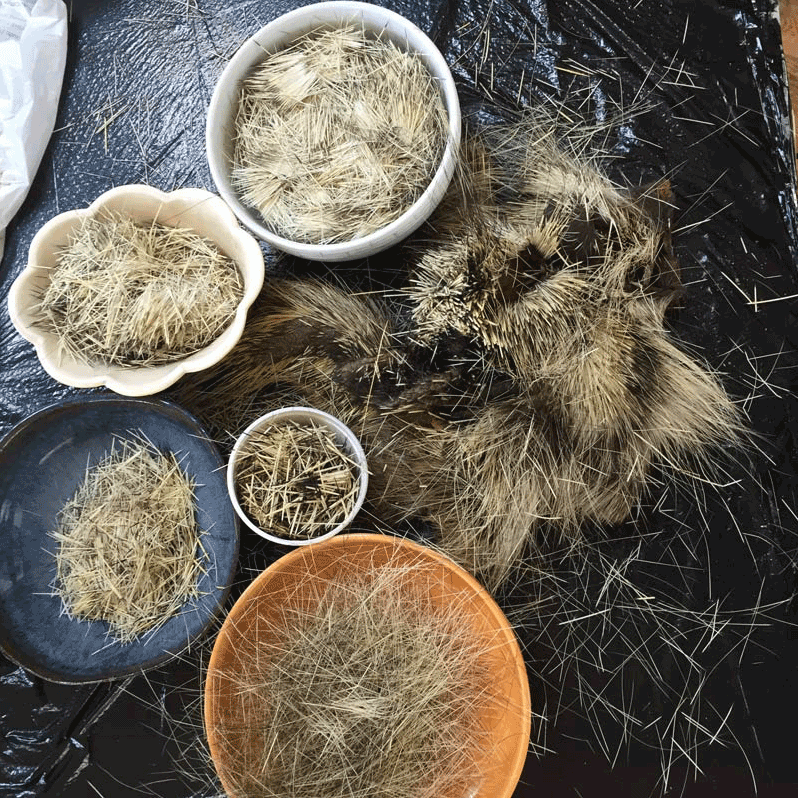 The bones and quills are adhered to the copper tray with a special glue called PaleoBOND. “I love it,” she says. “It’s what paleontologists use on fossils.”
The early reception of her bone pieces (which are only part of her output that includes complex paintings and assemblages) wasn’t always positive. “You know, most people don’t want to think about an owl coughing up something. Or, sometimes, they think it’s droppings. It’s not, but it turns people off. I feel people miss out on learning about something that’s really interesting and amazing.”
The bones and quills are adhered to the copper tray with a special glue called PaleoBOND. “I love it,” she says. “It’s what paleontologists use on fossils.”
The early reception of her bone pieces (which are only part of her output that includes complex paintings and assemblages) wasn’t always positive. “You know, most people don’t want to think about an owl coughing up something. Or, sometimes, they think it’s droppings. It’s not, but it turns people off. I feel people miss out on learning about something that’s really interesting and amazing.”
Exploring her house and gardens rising up in levels past a greenhouse to a guest casita at the top of a rise, everything is “interesting and amazing”. Sitting on the porch of the casita—which she is now using as her studio—I gazed into the tops of dried agave spikes. The sometimes 30-foot spikes with yellow blossoms are stunning in gardens and in the desert. These, however, were the beautiful, brown, expired spikes which she had seen in other people’s gardens, asked the owners to save them, and then strapped them on the top of her Jeep to take home.
Looking and seeing has the added element of conserving for Irene. Dead things come alive in her work. “I never have a lack of ideas,” she says. “I have a whole lot of things I want to do. I can’t wait to get to my studio. Some days I get so excited I feel like I’m just going to take off and fly. Literally. It’s a good feeling.”
View work by Irene Hardwicke Olivieri ►
August 11, 2024
JEREMY MIRANDA | Cooking (version 3)
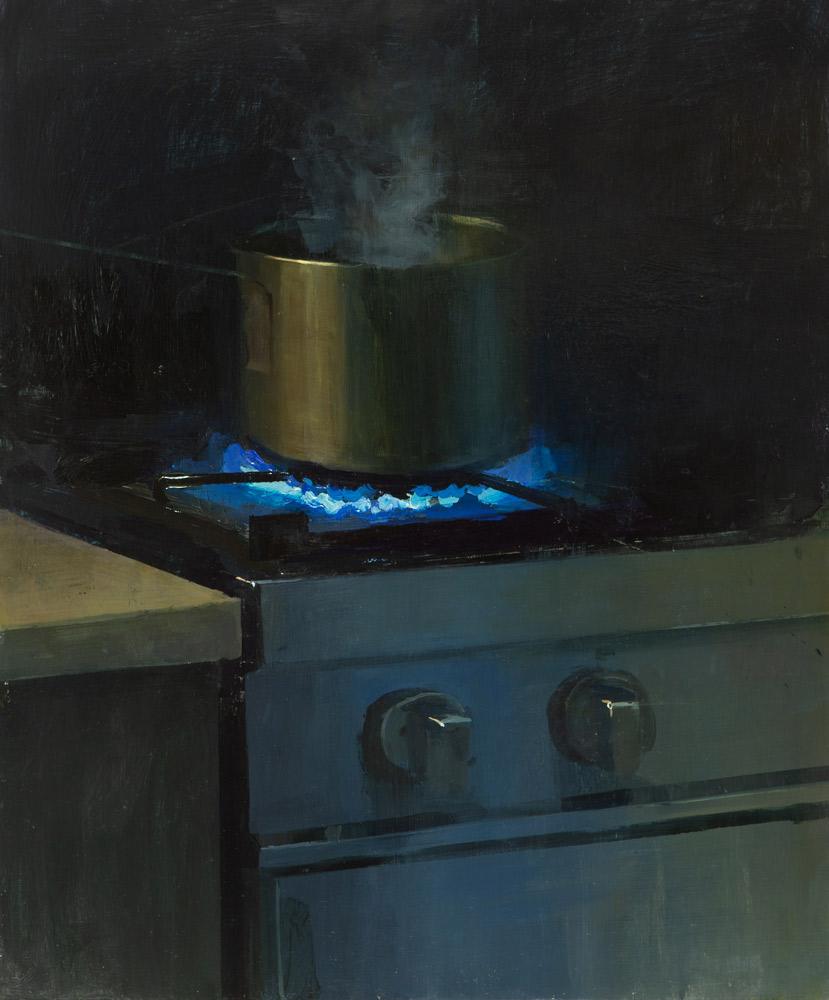
Camille Pissarro wrote “Blessed are they who see beautiful things in humble places where other people see nothing.” A few years earlier, Thoreau commented, “The question is not what you look at, but what you see.”
When he was boiling water on his gas stove during a recent power outage at his home in Maine, Jeremy Miranda looked and thought “That blue flame is so beautiful.” Cooking (version 3) is his third rendering of the phenomenon of the blue gas flame heating a metal pot with steam rising from the boiling water. This continuing series of paintings is, he says, “an attempt to capture brief run-ins with the sublime that are buried in the everyday."
They’re also a sign to him that he is slowing down, a process he has been working on for many years. “The work is, in a way, an attempt to slow the world down and experience it with all the senses on a level that sort of feels otherworldly.”
The ethereal blue flame is a gaseous mixture of mostly carbon dioxide and water vapor which we’re not usually aware of in our brightly-lit kitchens. Jeremy was “steeped in the moment of the power outage” when the flame burned brightly in the dark. Slowing down and living in the moment is a focused experience which, he says, “in my brain is a space like a shelter with a confined set of sensory information.”
“We don’t associate flame with textures,” he says. But, to interpret the insubstantial flame in this rendition of the subject, he used almost pure cobalt blue in parts of the flame and its reflection. In the process, he gave the flame a chunky presence on the panel. As the gas is transformed to flame and the water is transformed to steam, the acrylic pigment is transformed into a recognizable image on the panel.
Jeremy likens the painting to 1,000 years of art history in which artists have worked to render light on metal (an ubiquitous still life subject), vapor (steam, clouds, mist), “all the senses and the textures of the materials.”
He captured the feeling of that moment in his powerless house and ignites our own memories of the beauty of a mundane gas stove.
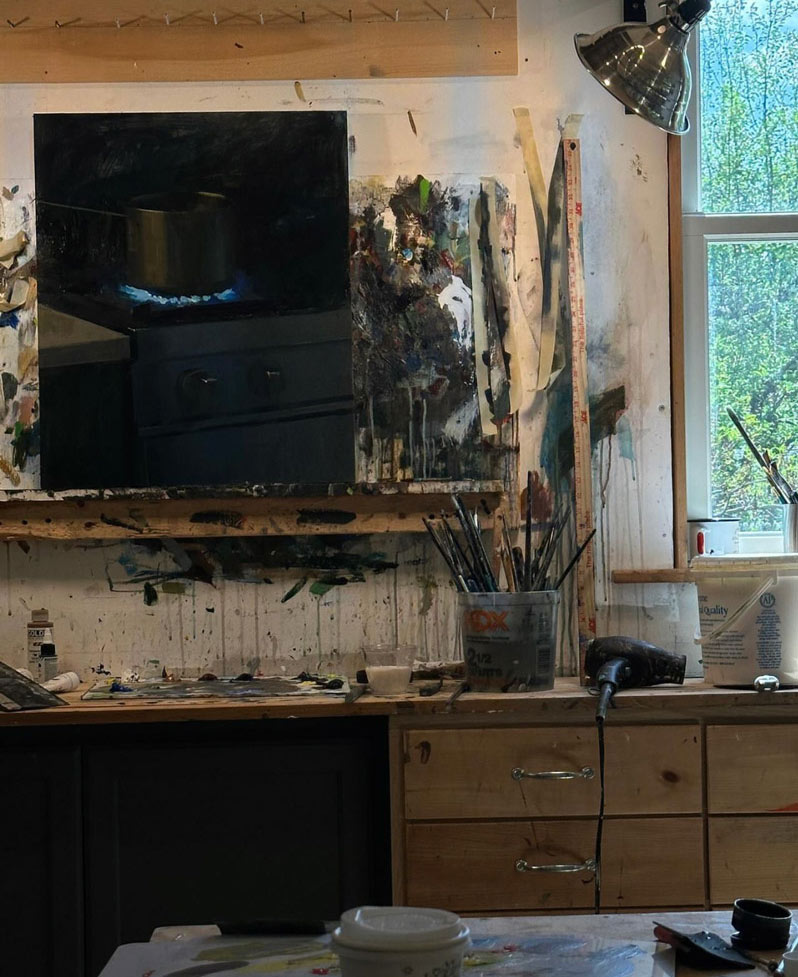 We, as viewers, bring our own experiences and preconceptions to looking at a painting. One viewer asked Jeremy how he had a gas flame when the knobs of the stove are obviously turned off. The two knobs actually control the oven and broiler. In another painting in the Cooking exploration, he includes a gauge next to the knobs; in others, there are no knobs at all.
As Jeremy slows down, pauses in the moment and simplifies his paintings, he continues his education in the elemental.
Jiddu Krishnamurti wrote, “There is no end to education. It is not that you read a book, pass an examination, and finish with education. The whole of life, from the moment you are born to the moment you die, is a process of learning.”
We, as viewers, bring our own experiences and preconceptions to looking at a painting. One viewer asked Jeremy how he had a gas flame when the knobs of the stove are obviously turned off. The two knobs actually control the oven and broiler. In another painting in the Cooking exploration, he includes a gauge next to the knobs; in others, there are no knobs at all.
As Jeremy slows down, pauses in the moment and simplifies his paintings, he continues his education in the elemental.
Jiddu Krishnamurti wrote, “There is no end to education. It is not that you read a book, pass an examination, and finish with education. The whole of life, from the moment you are born to the moment you die, is a process of learning.”
View work by Jeremy Miranda ►
